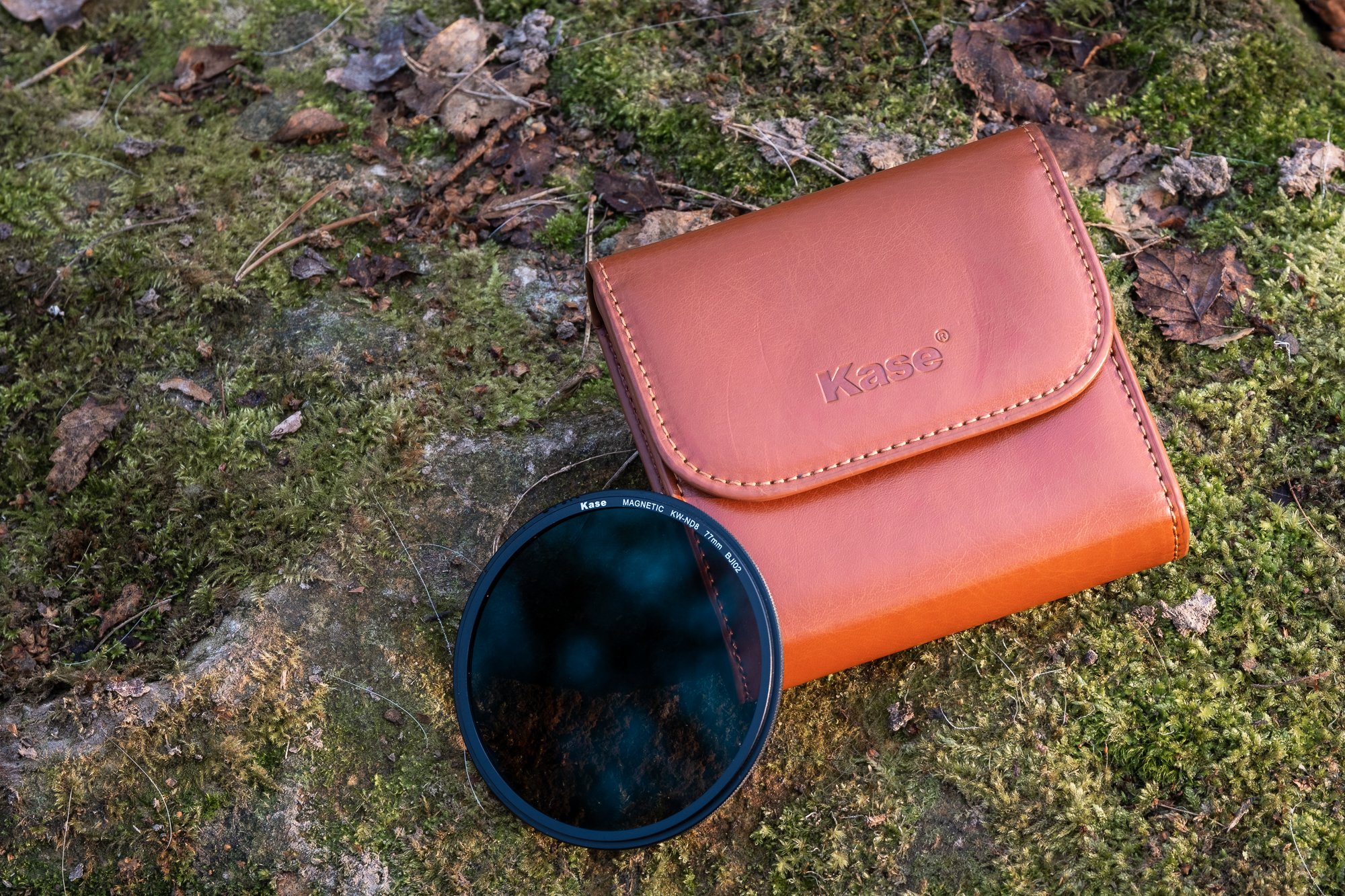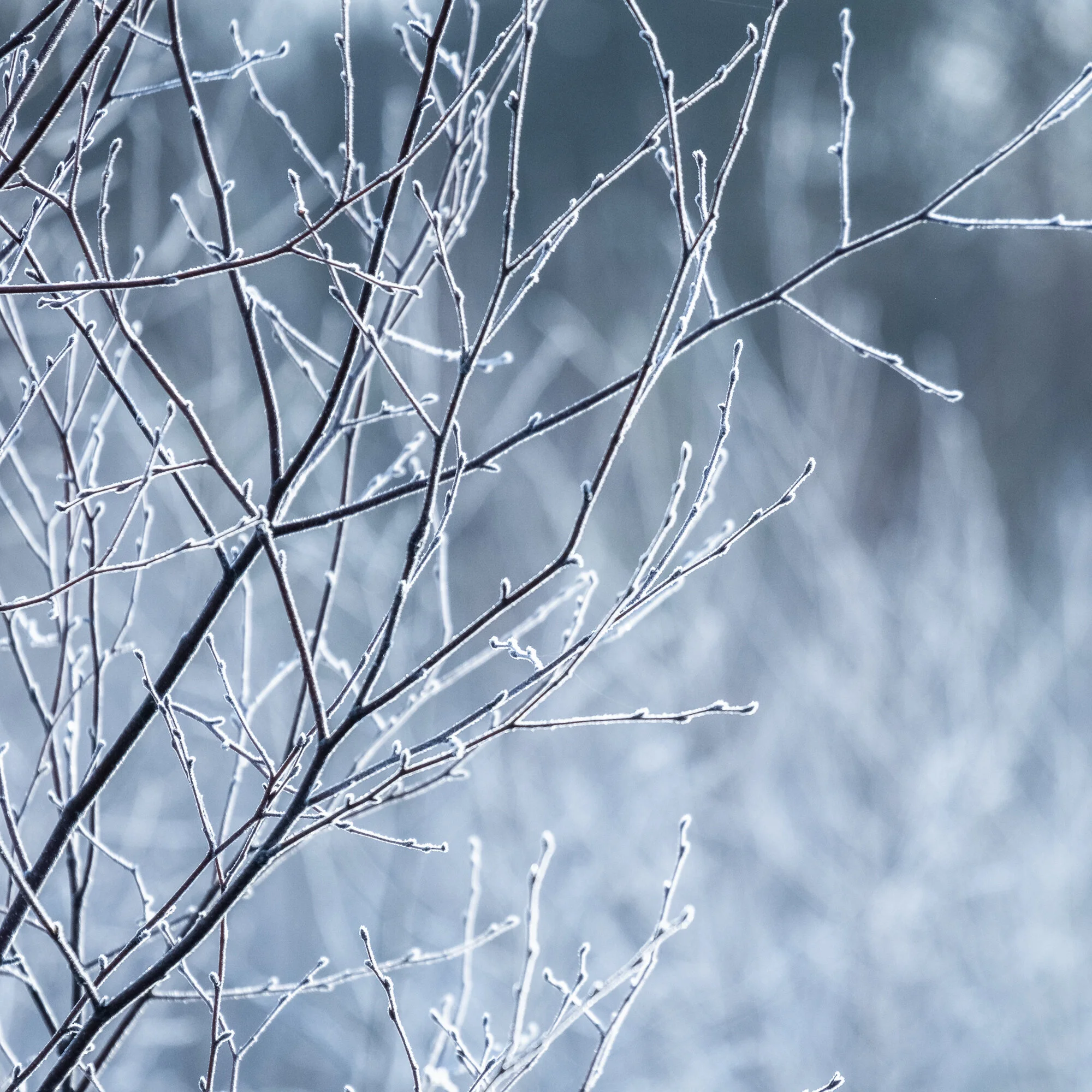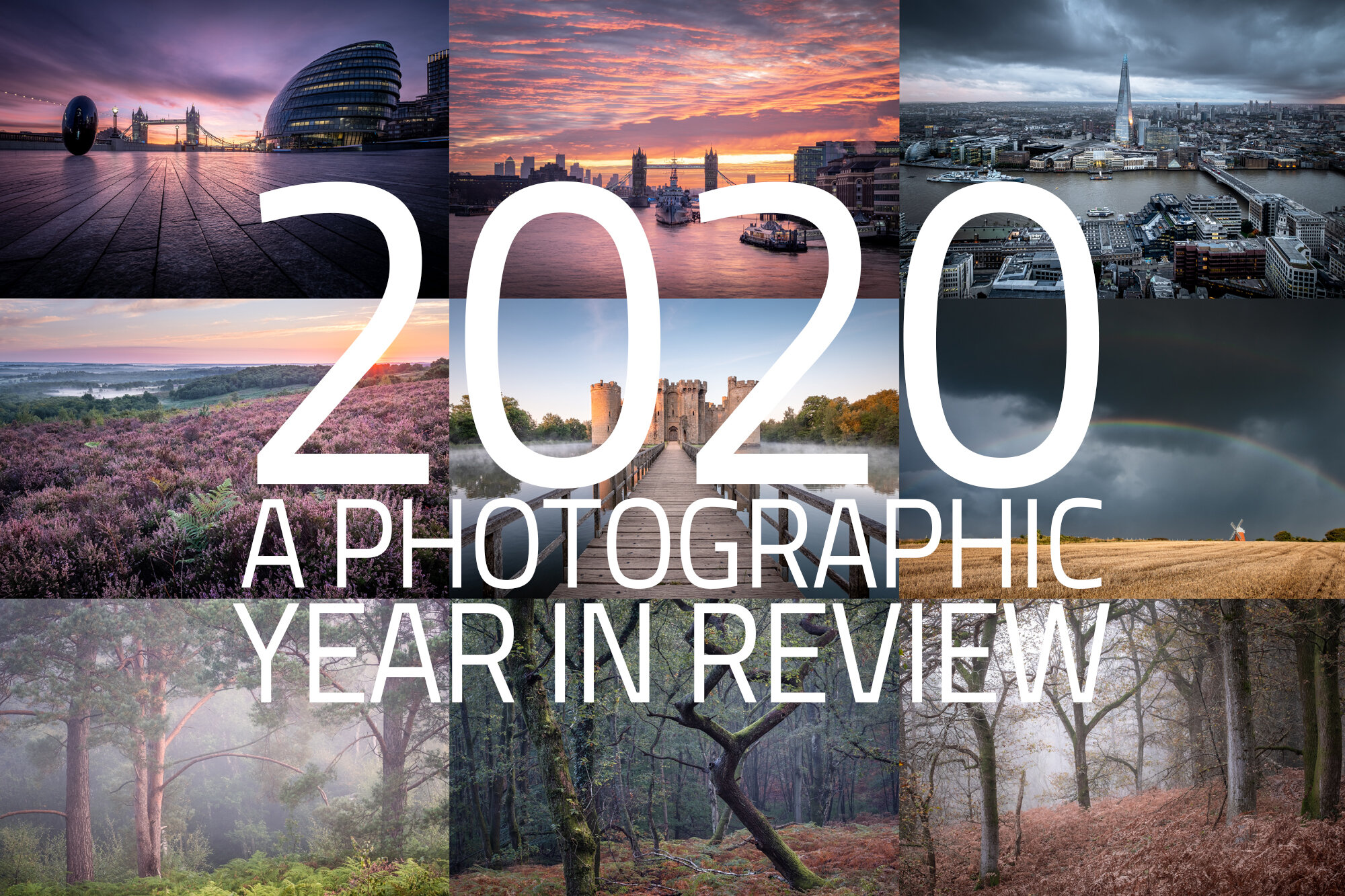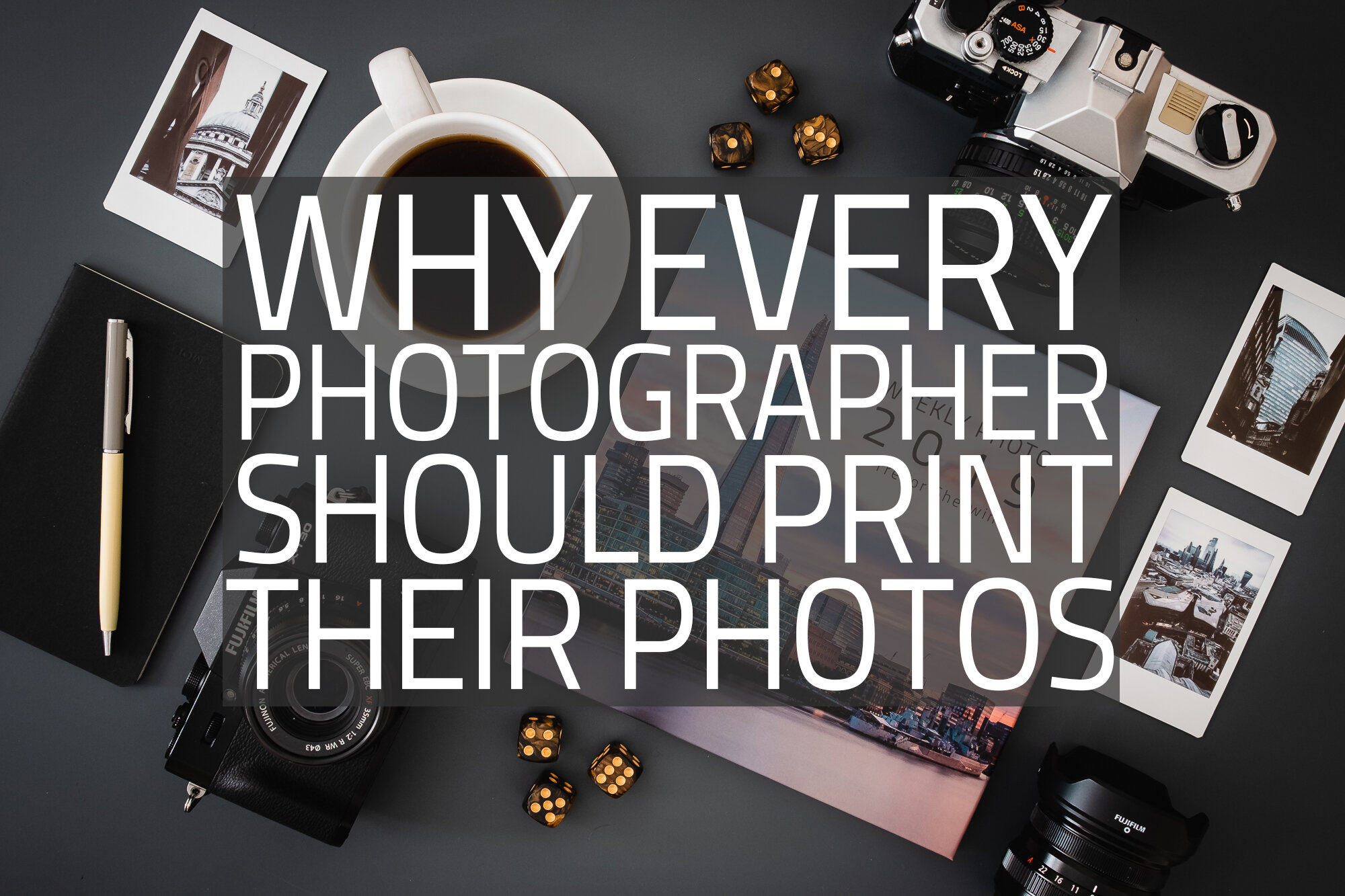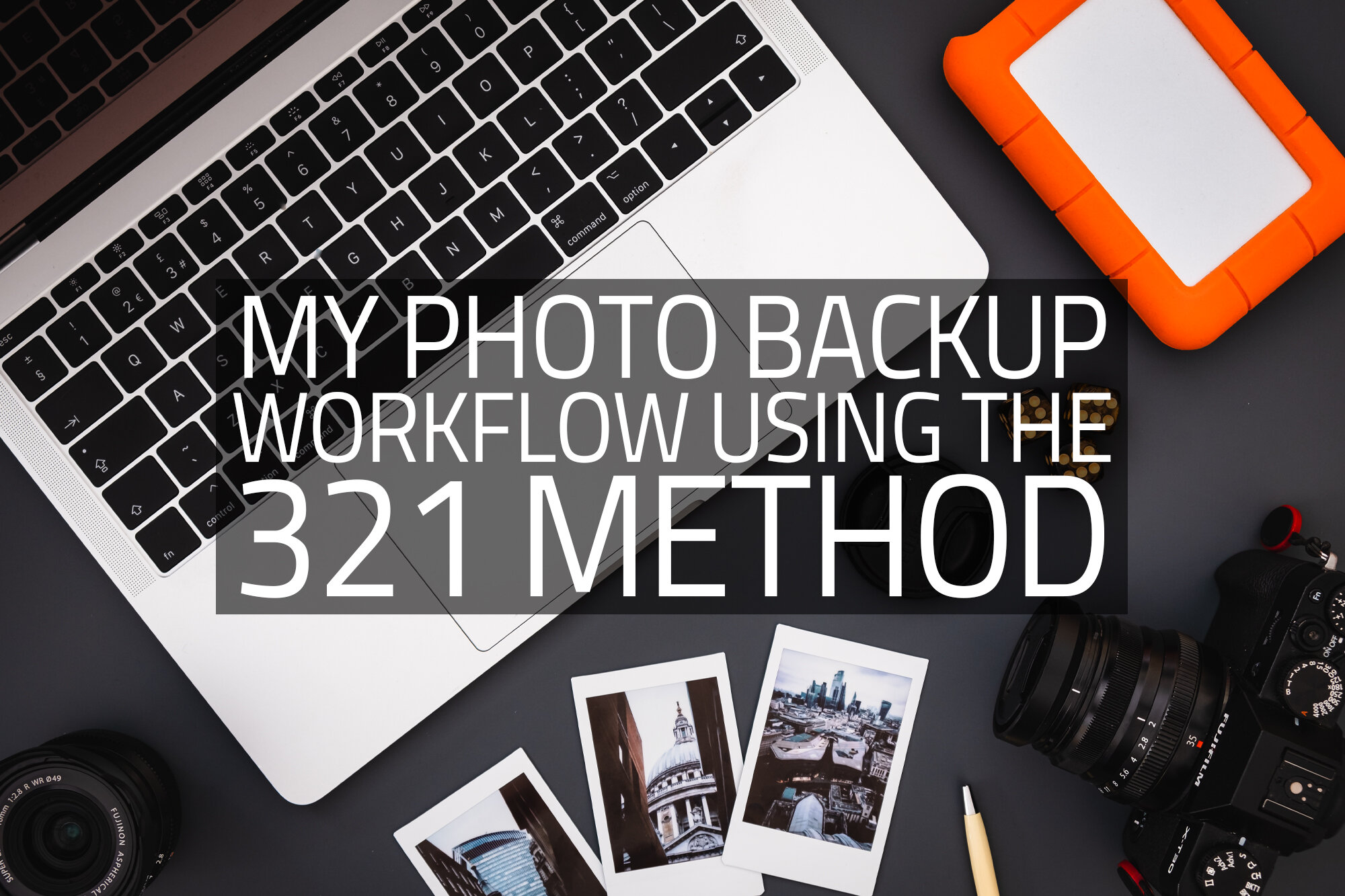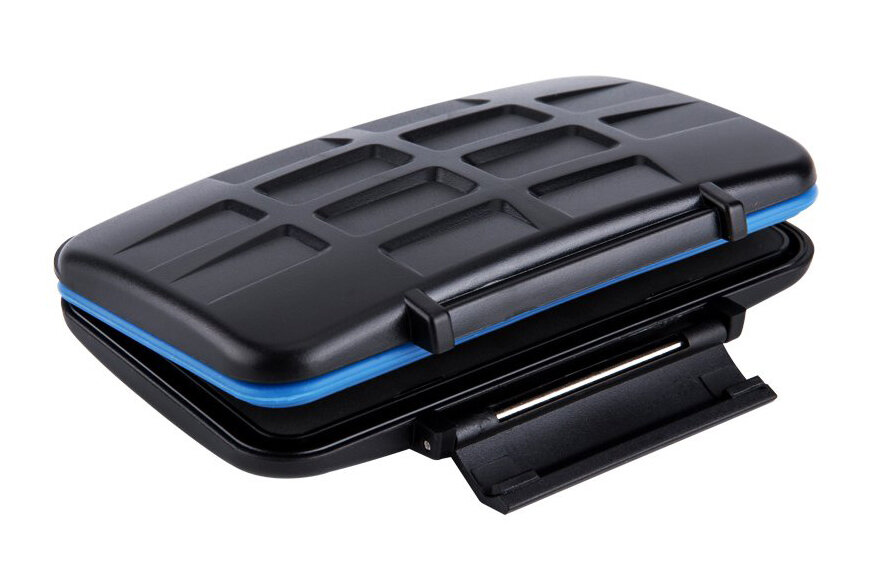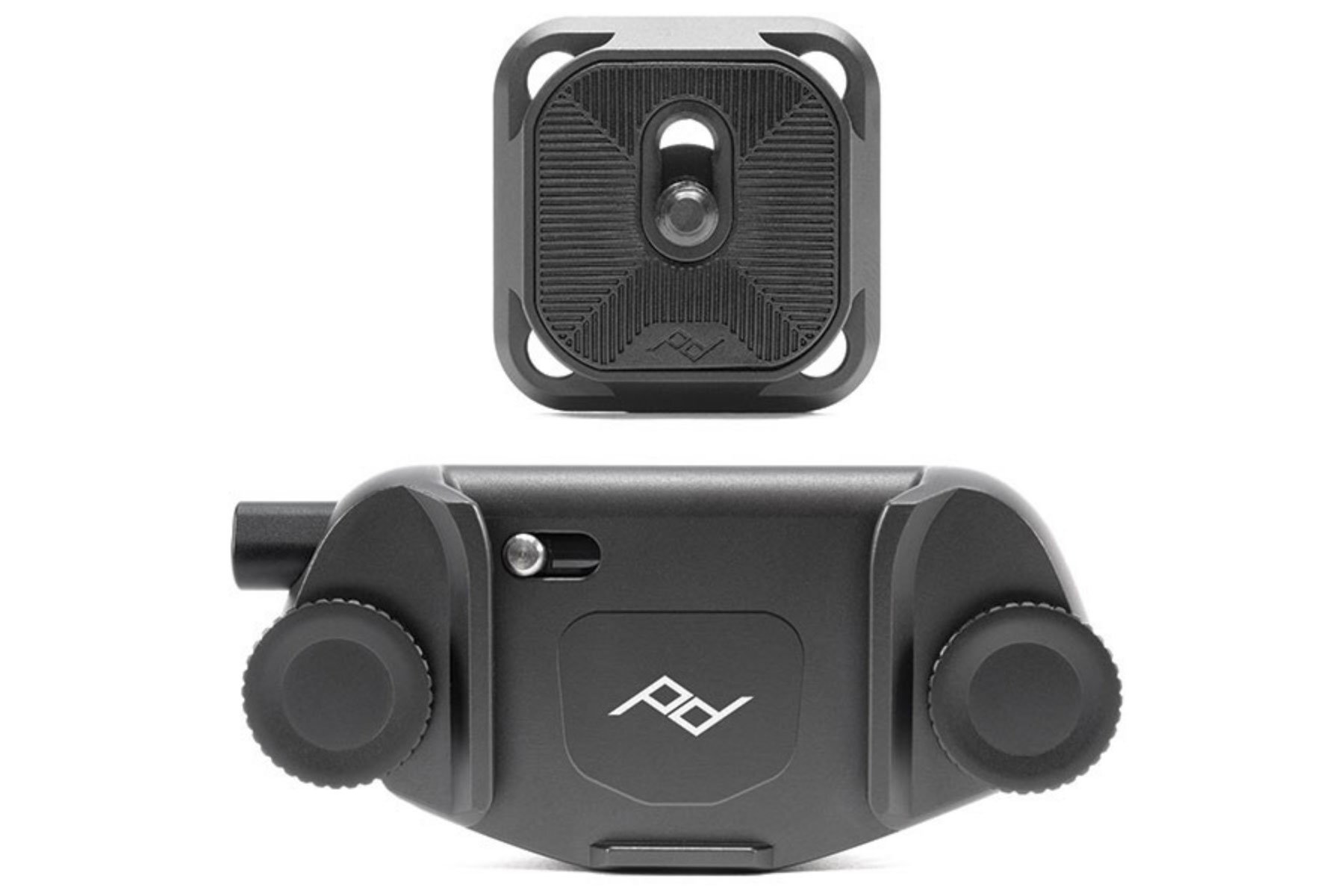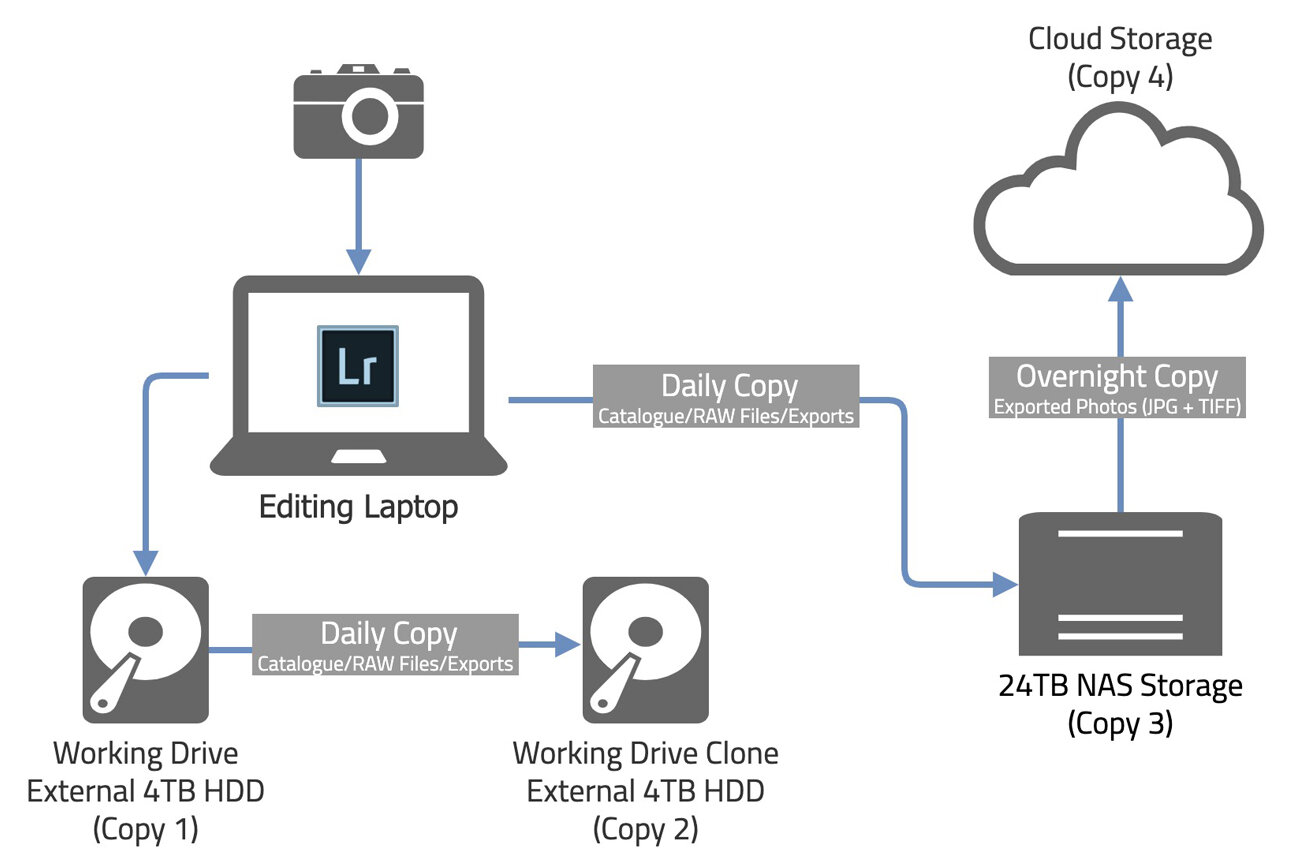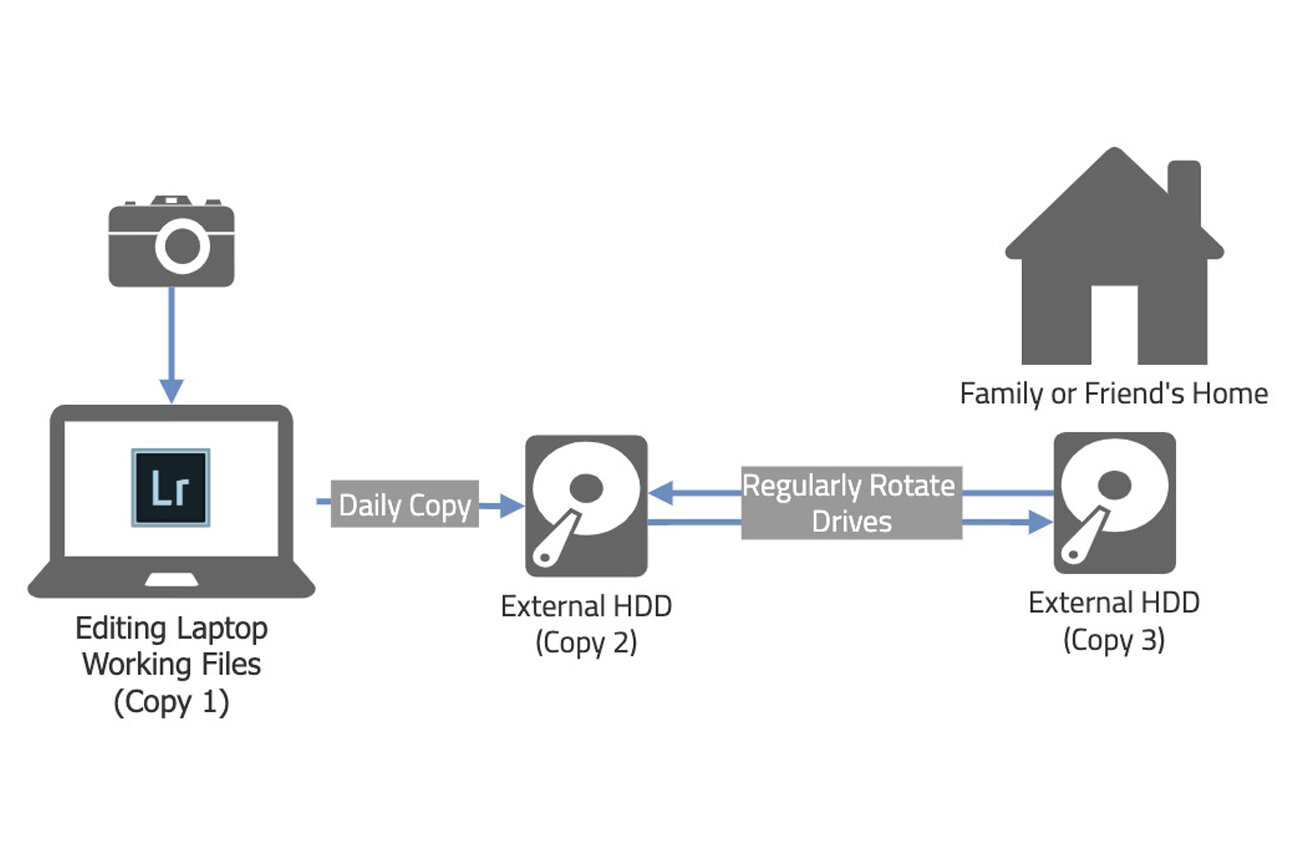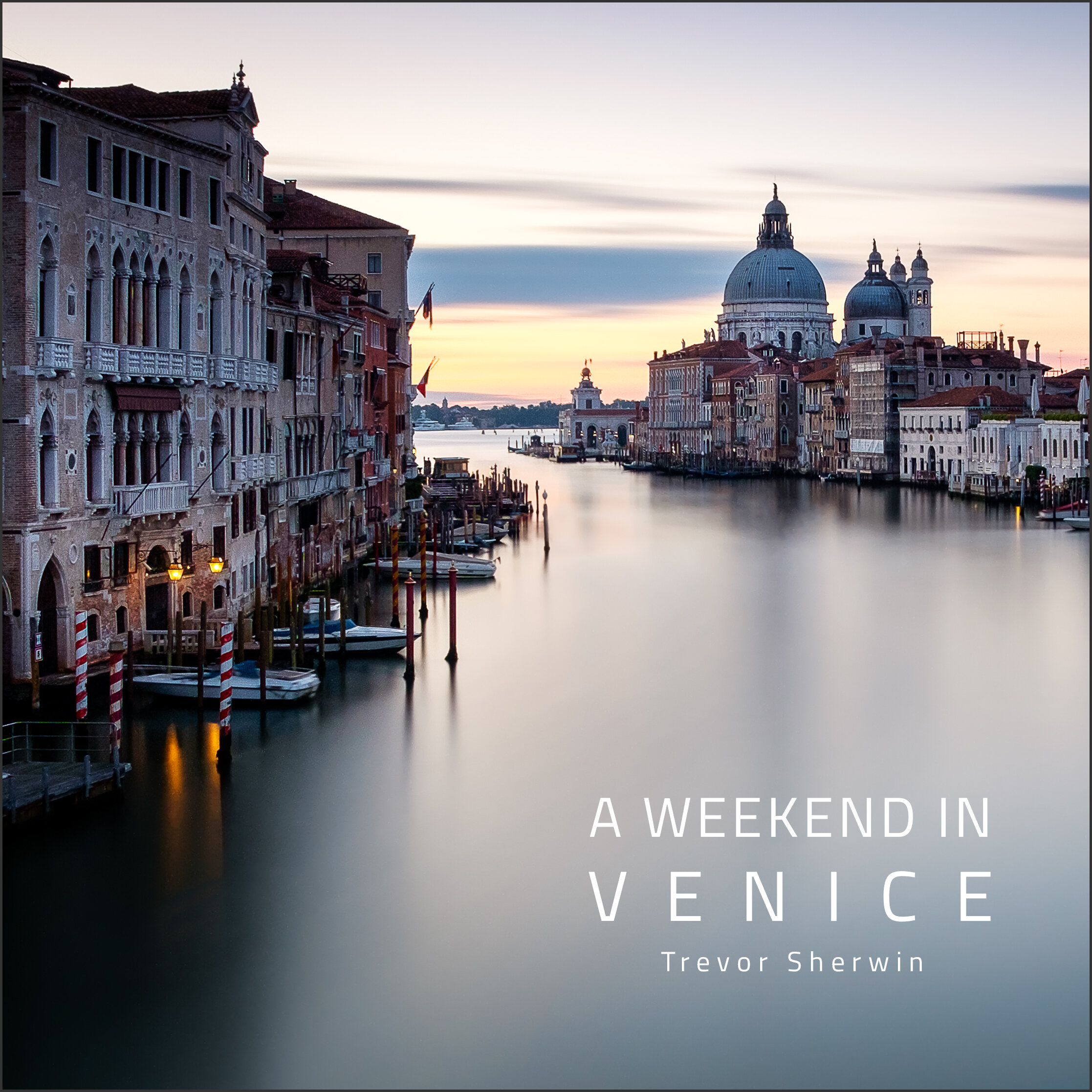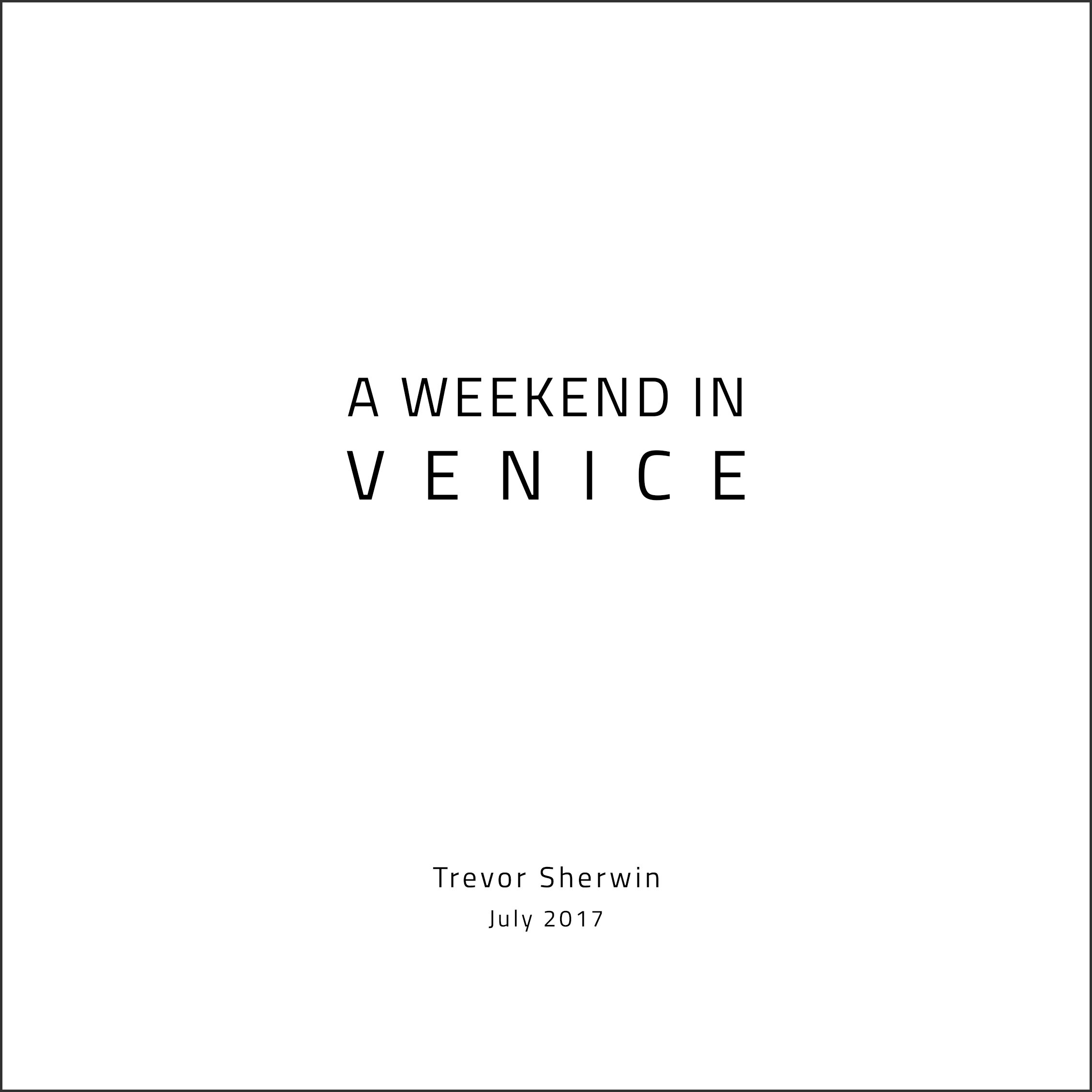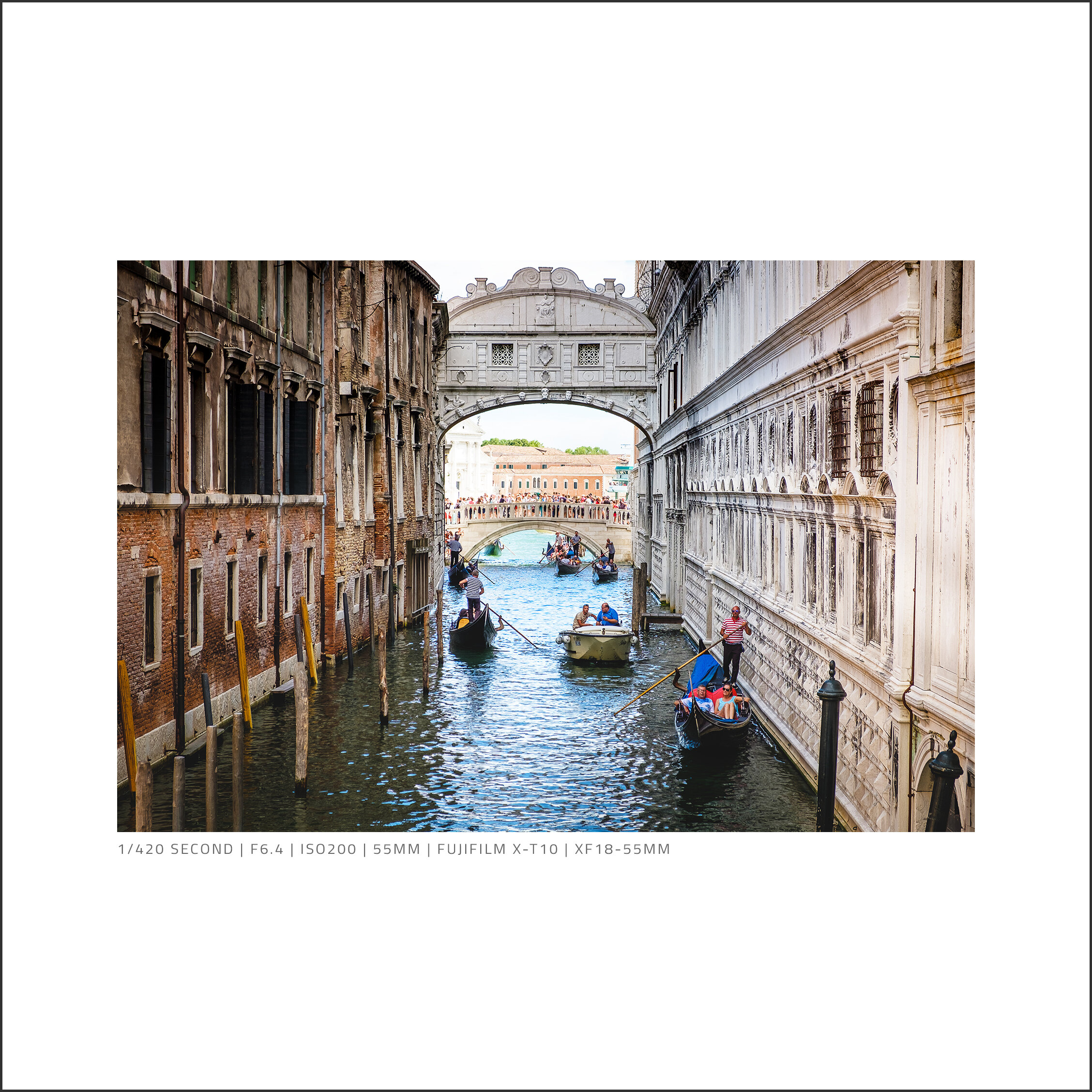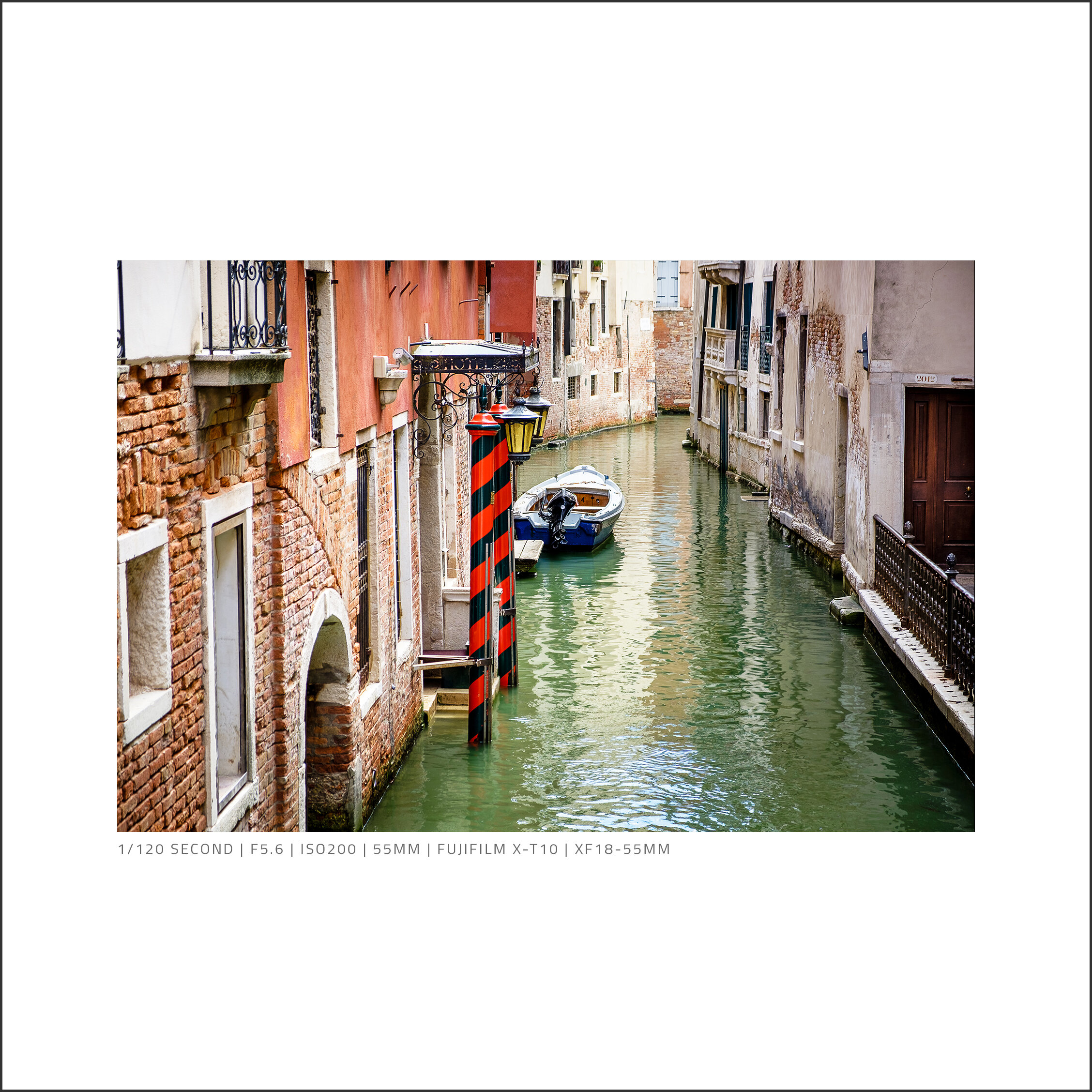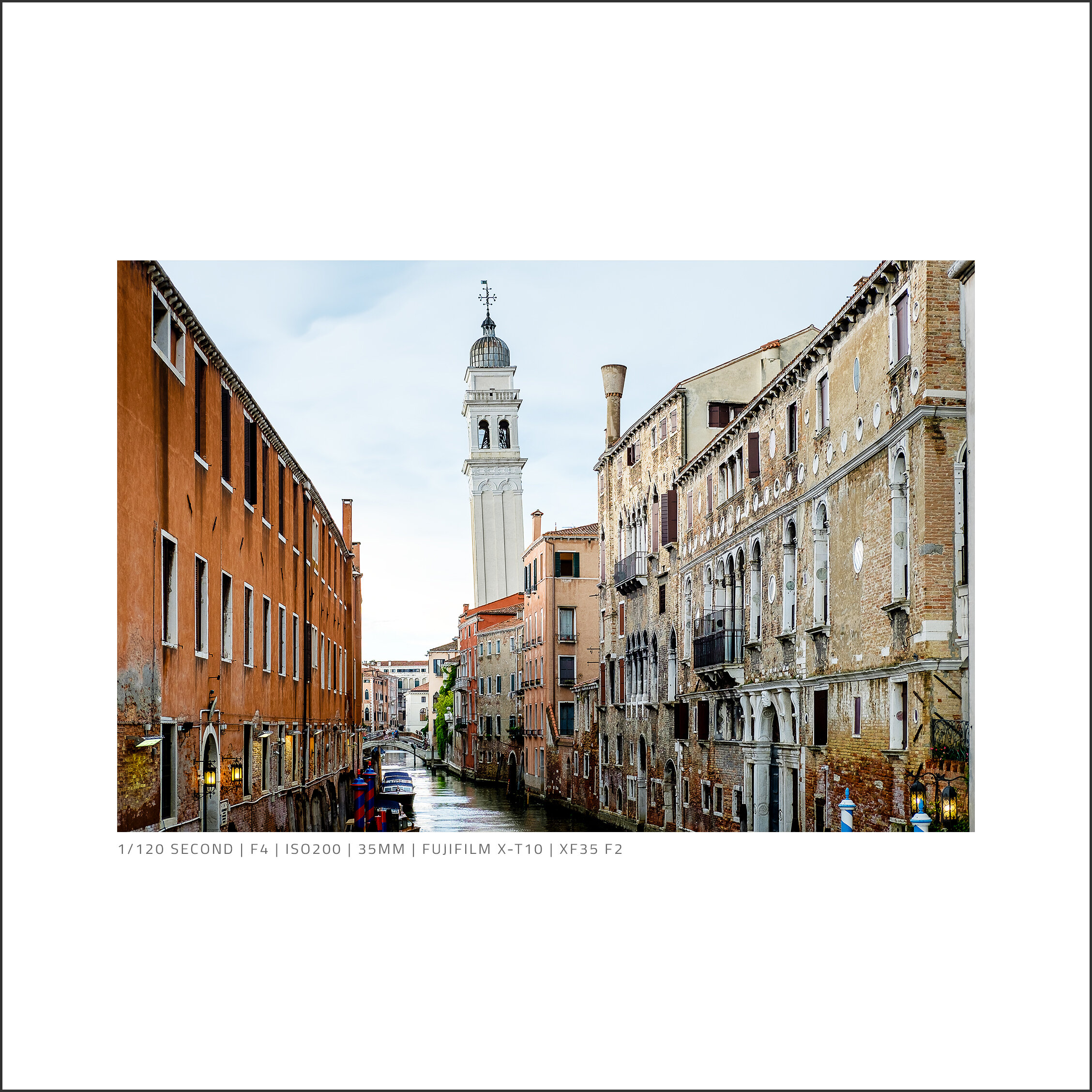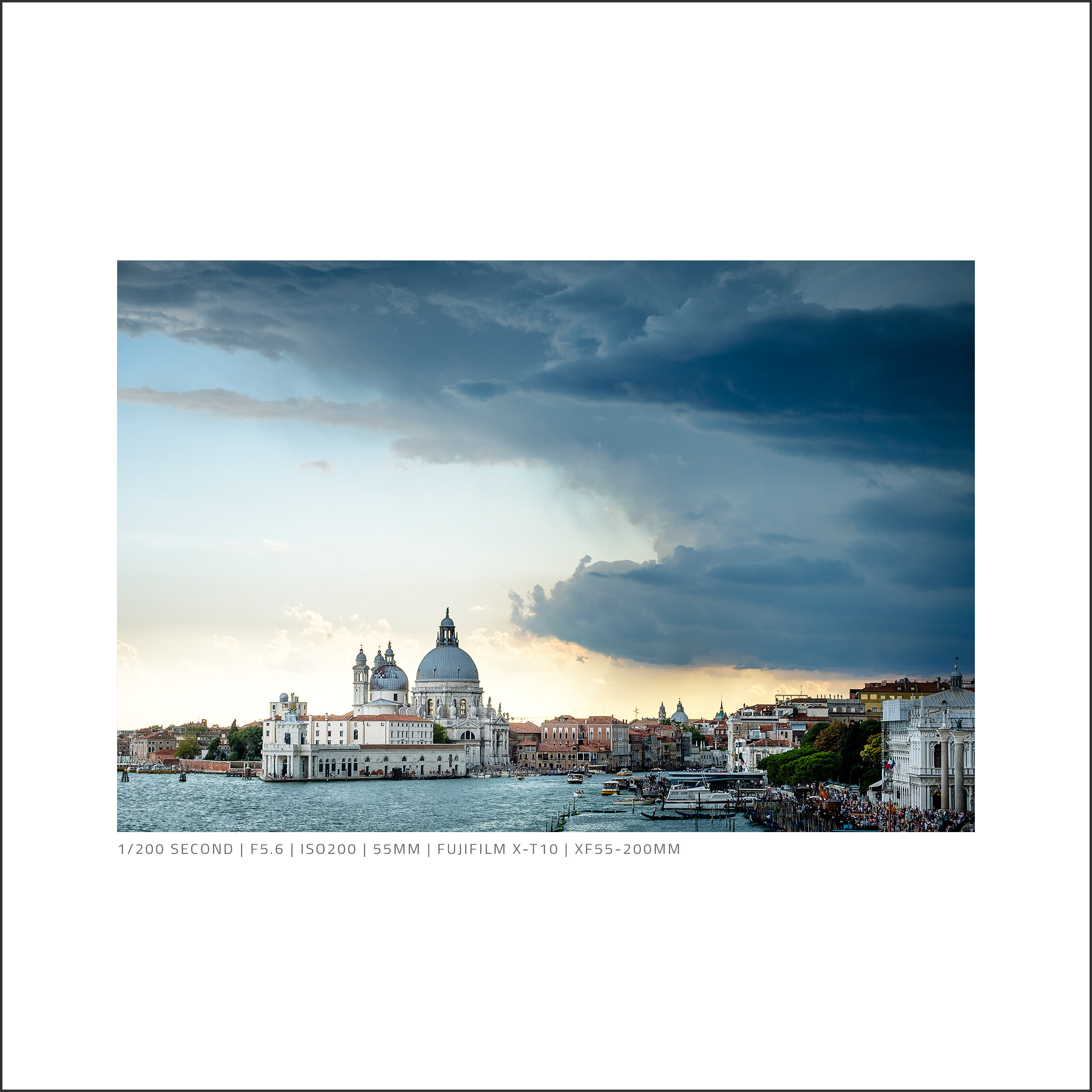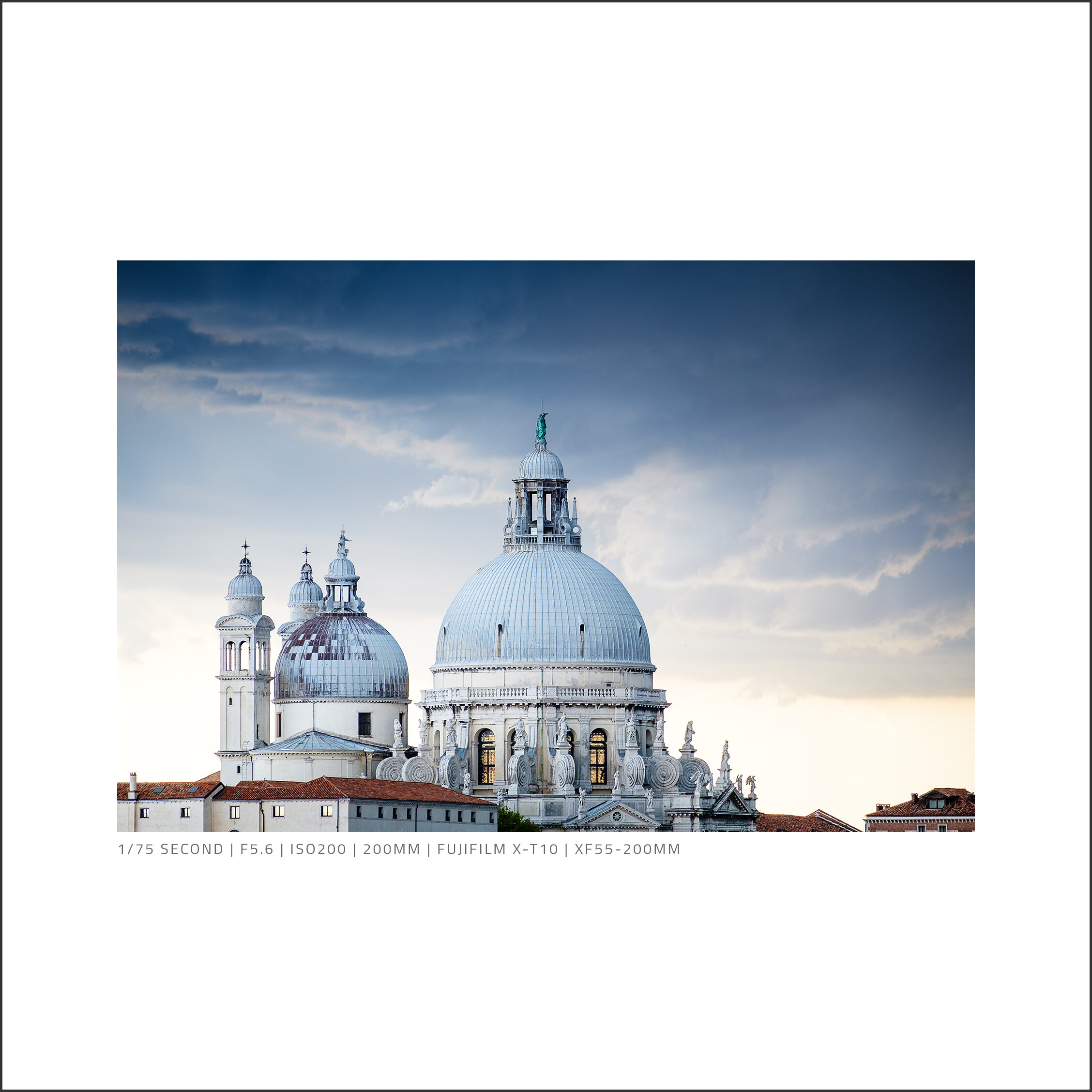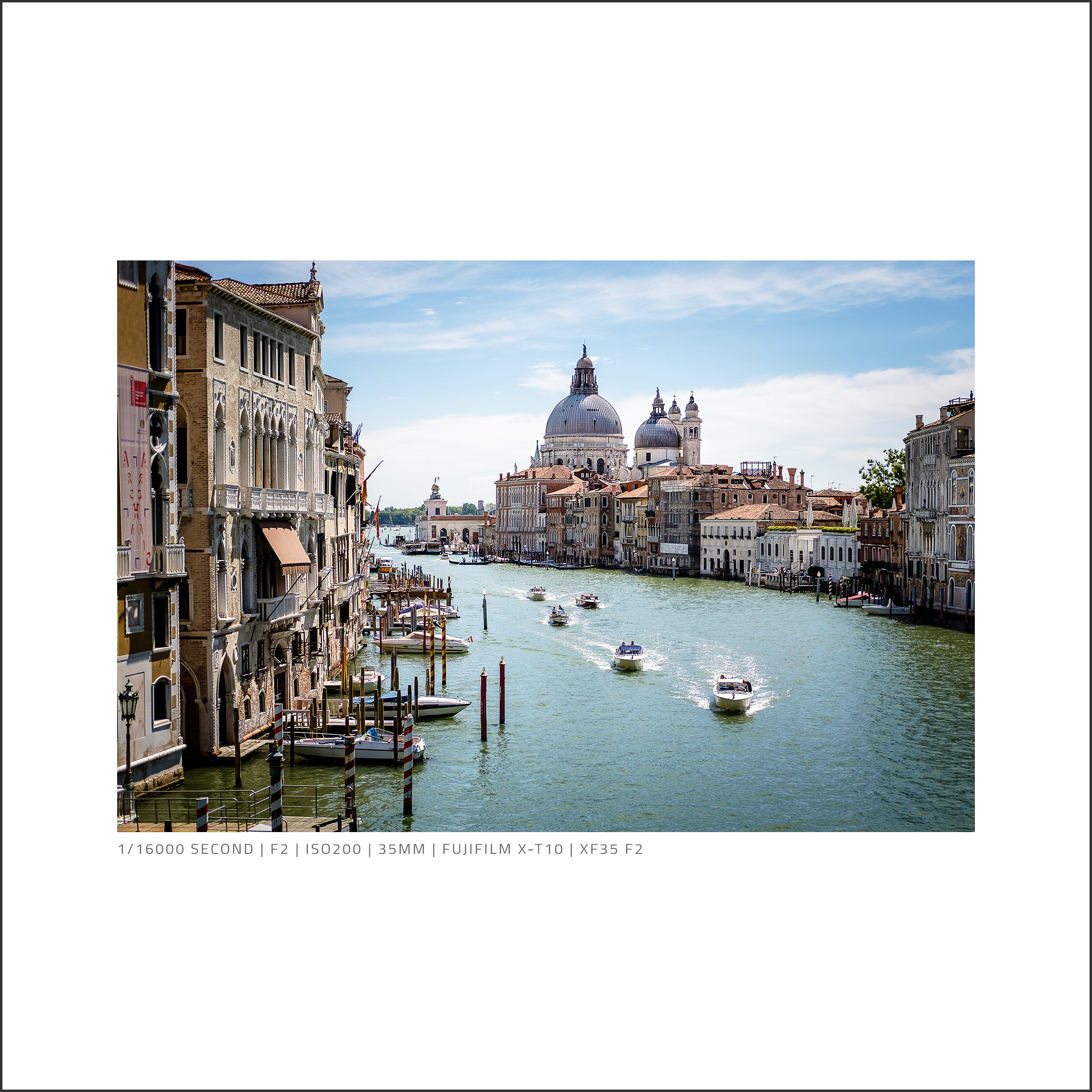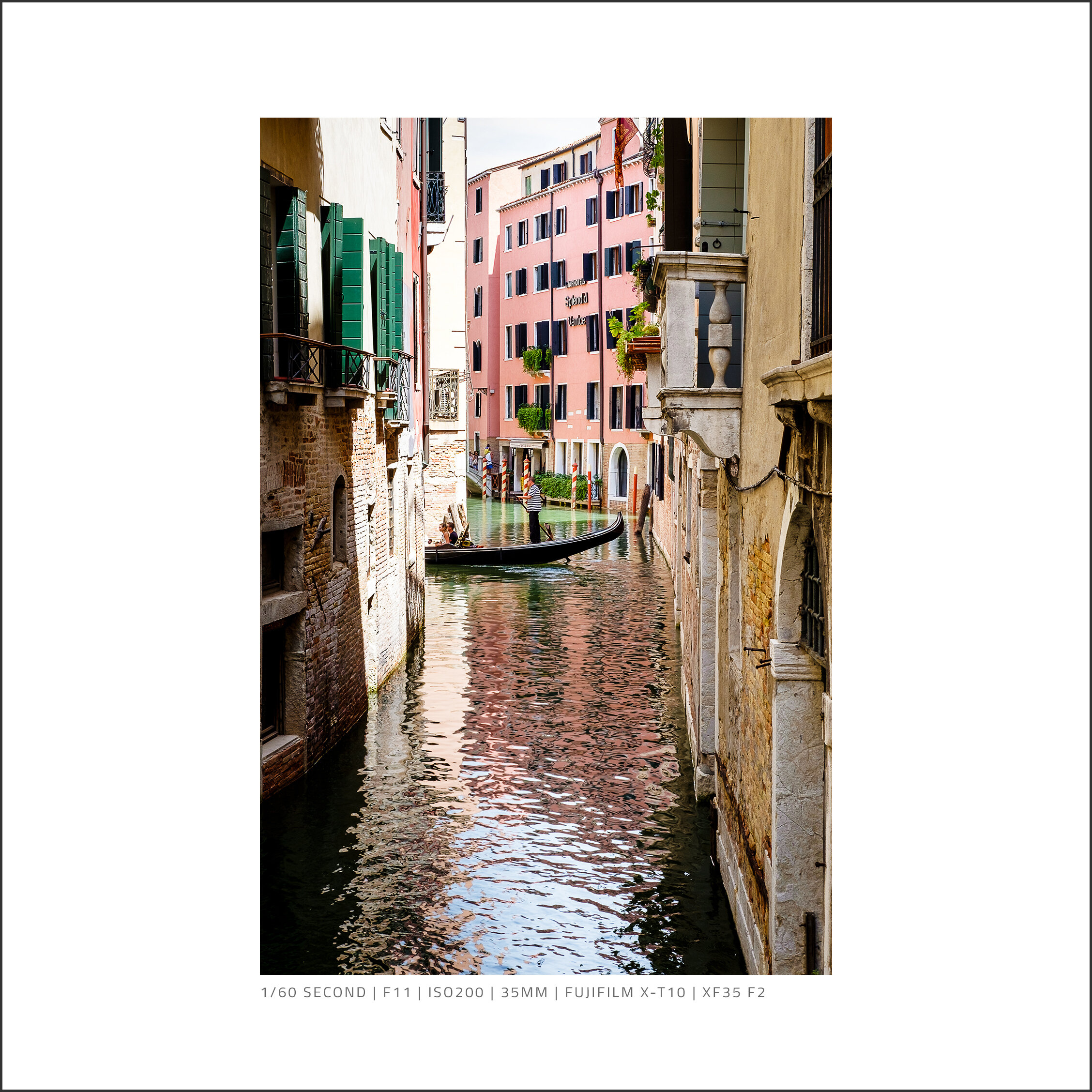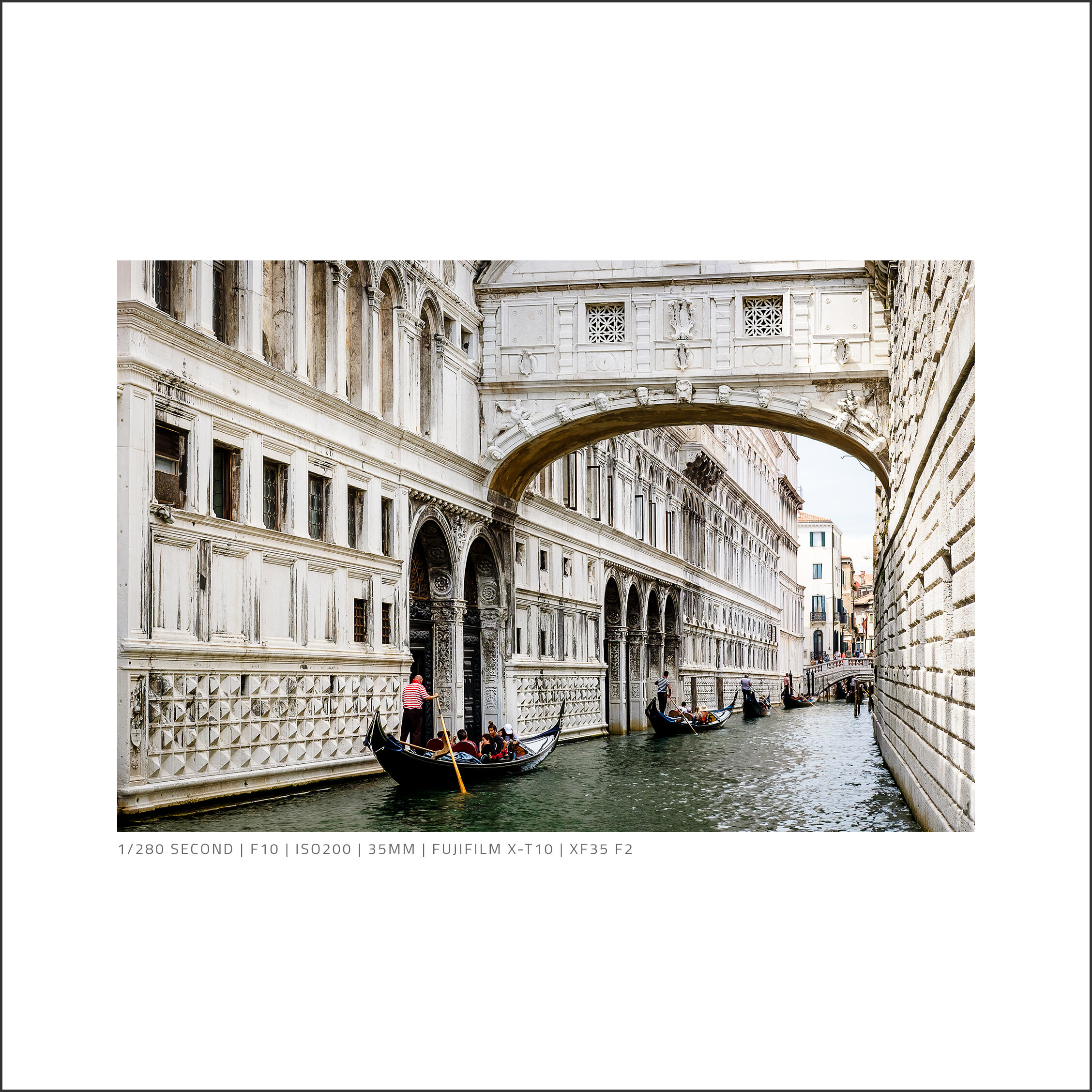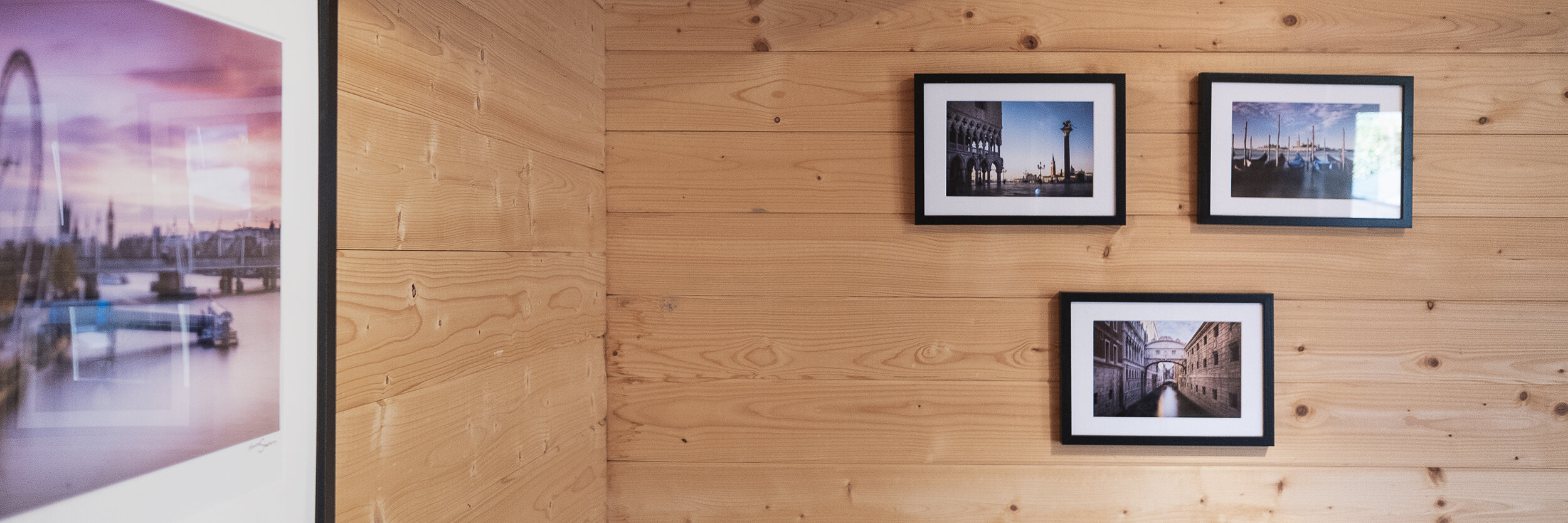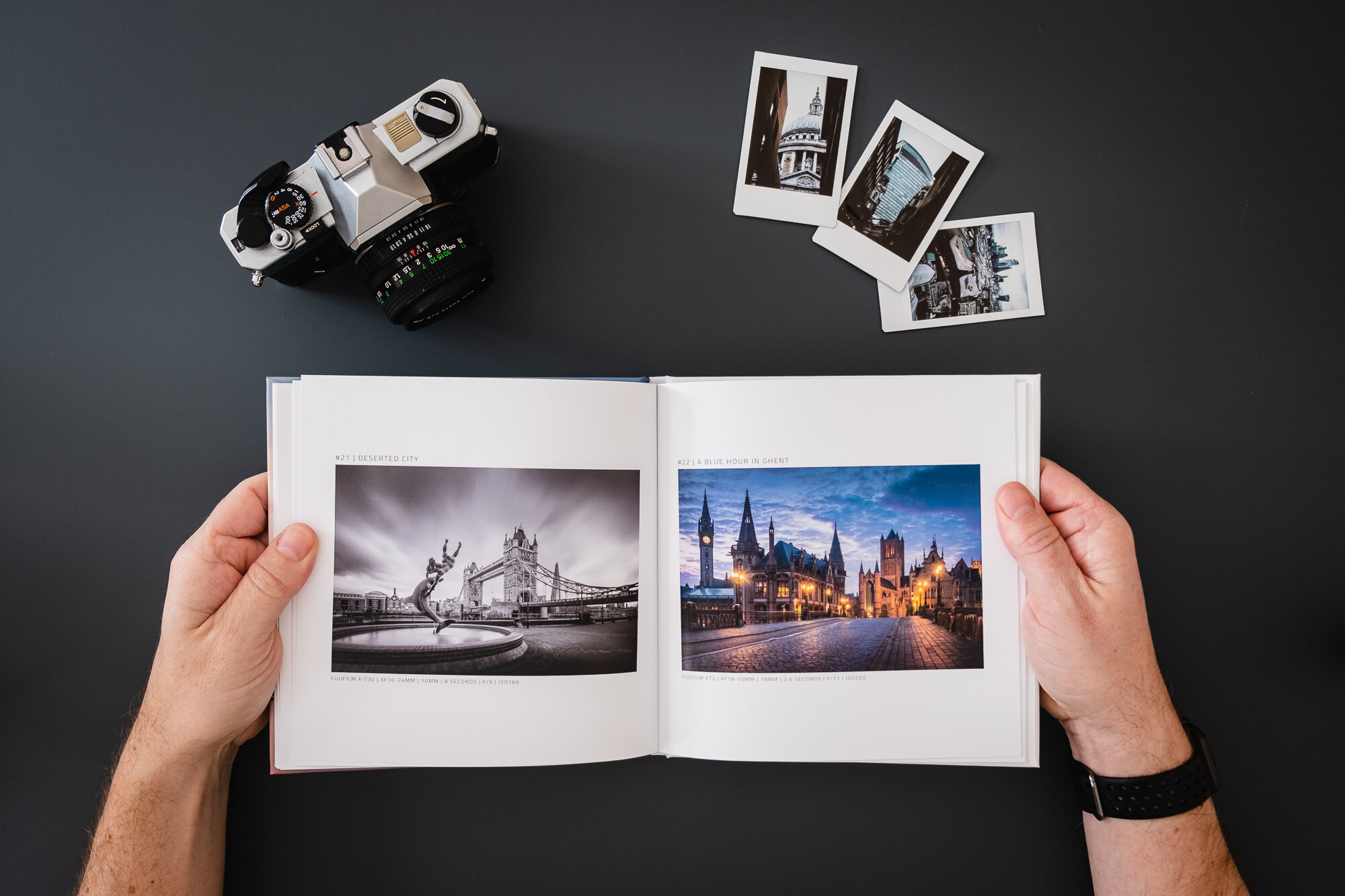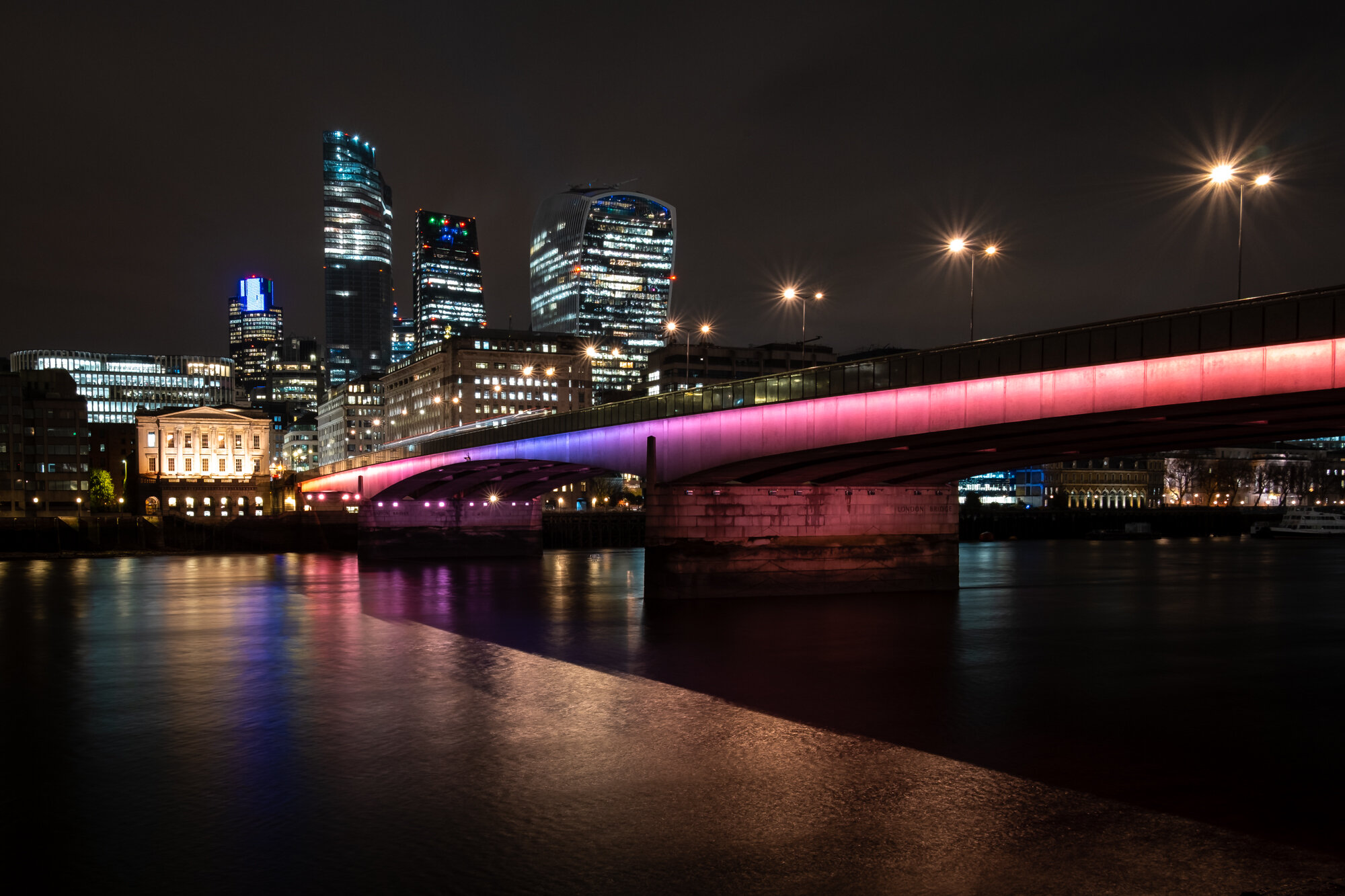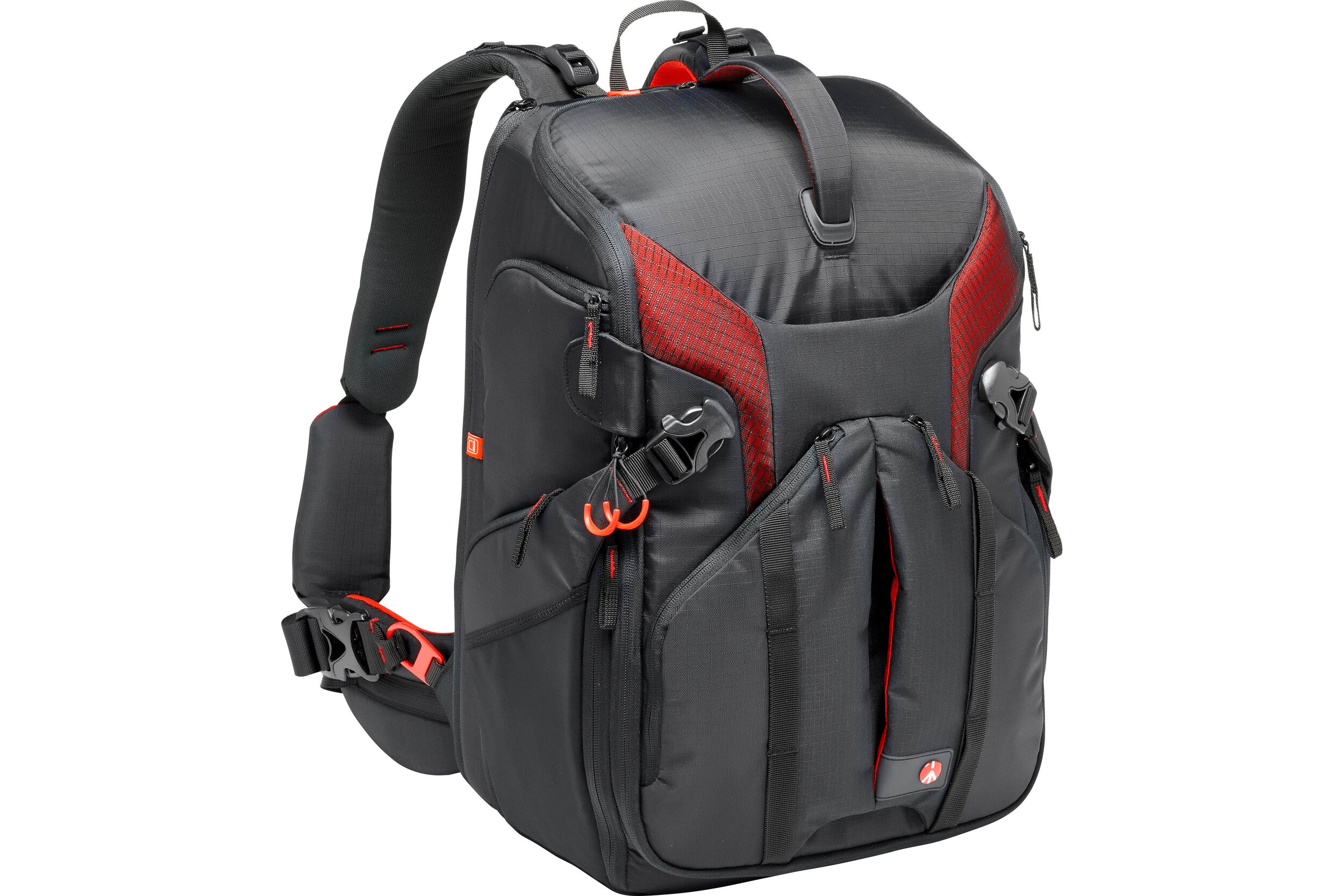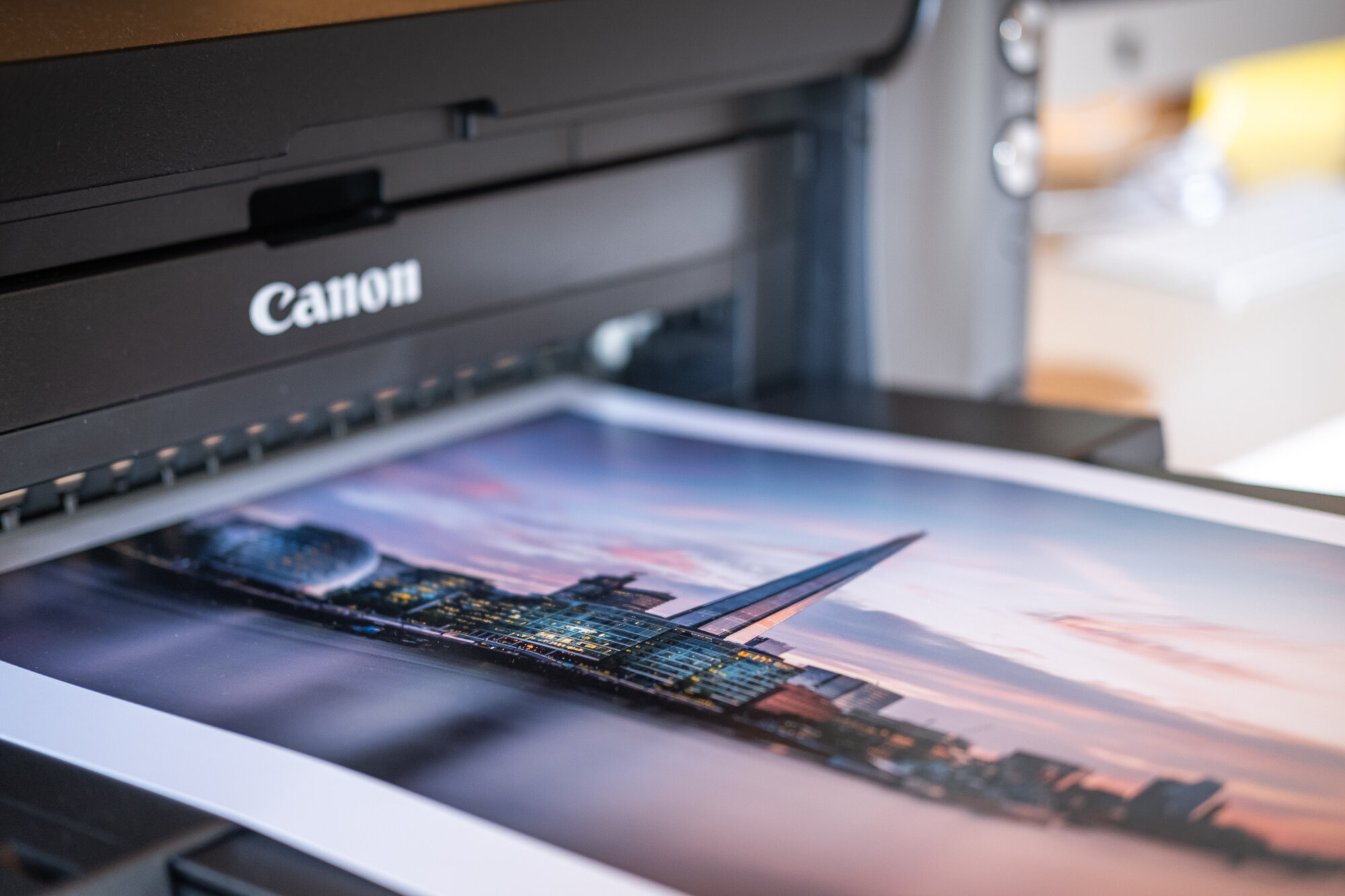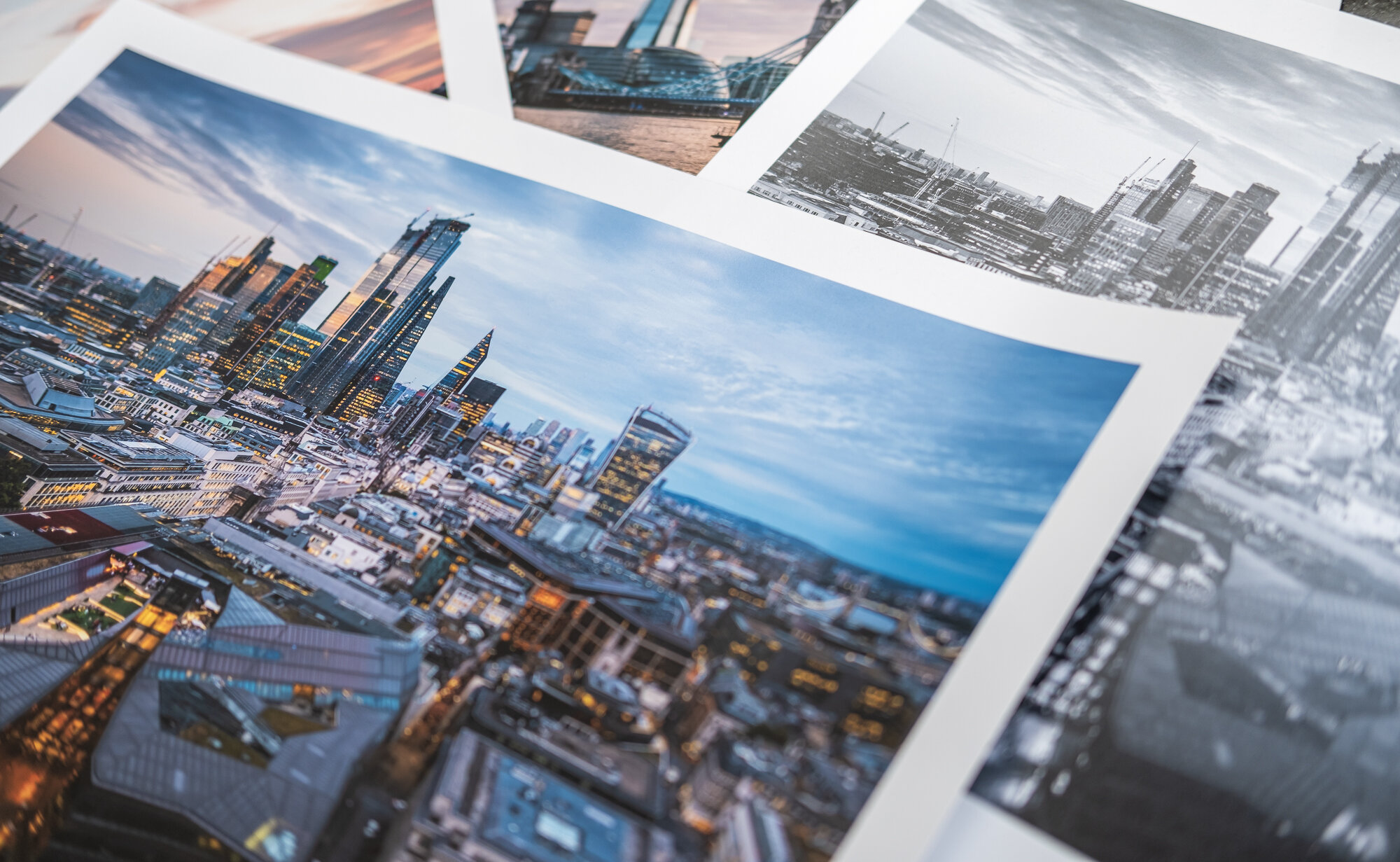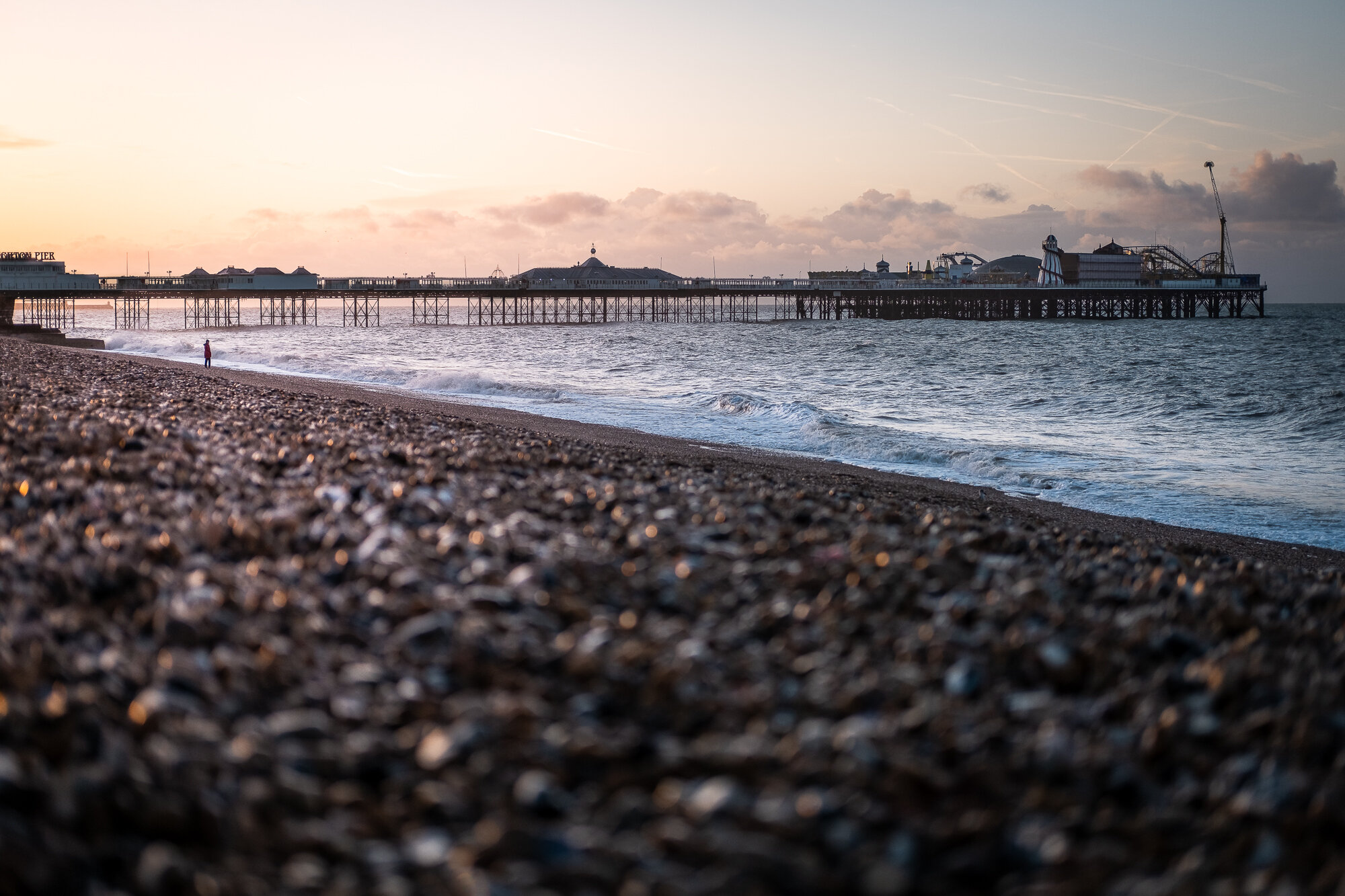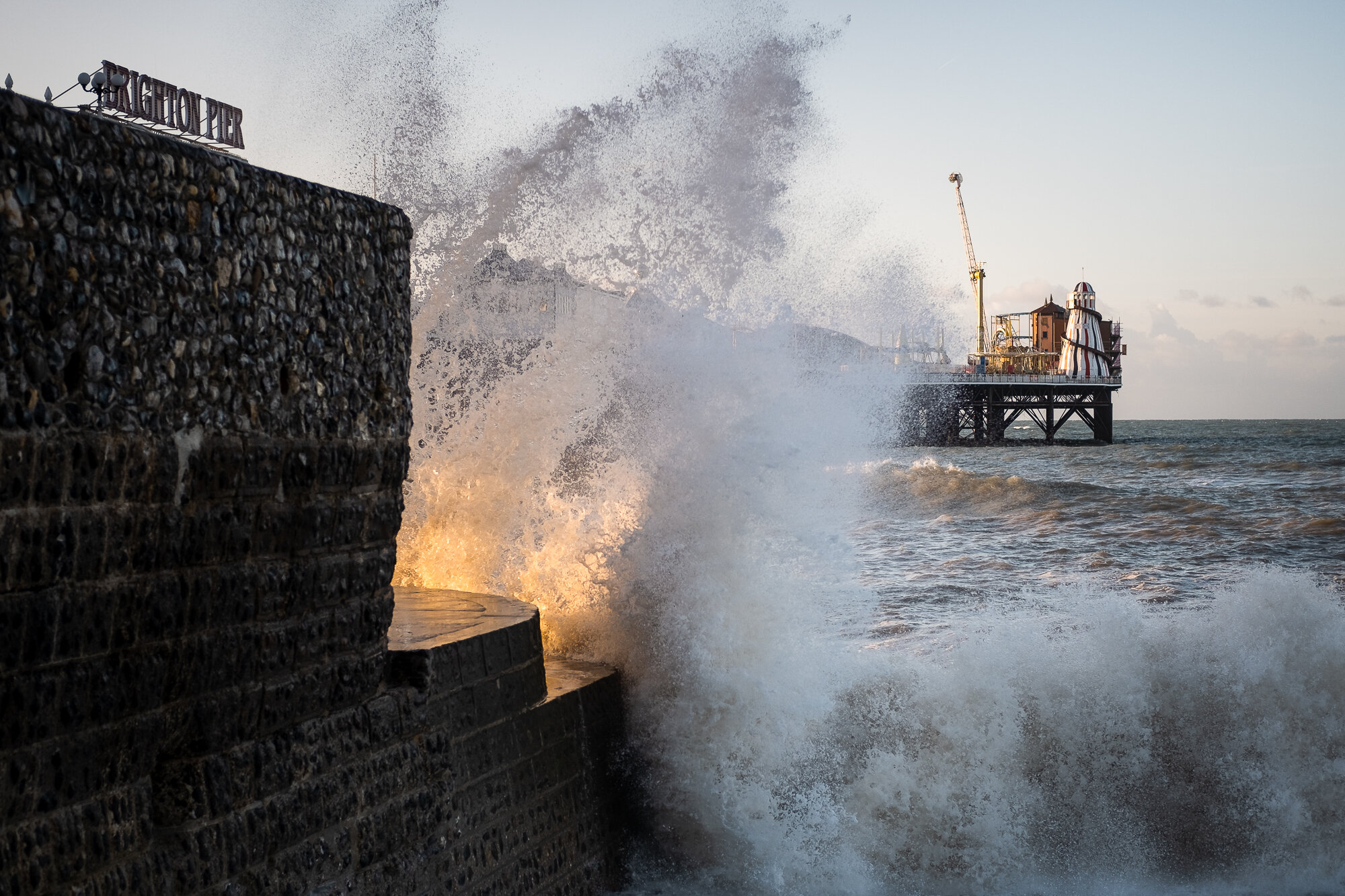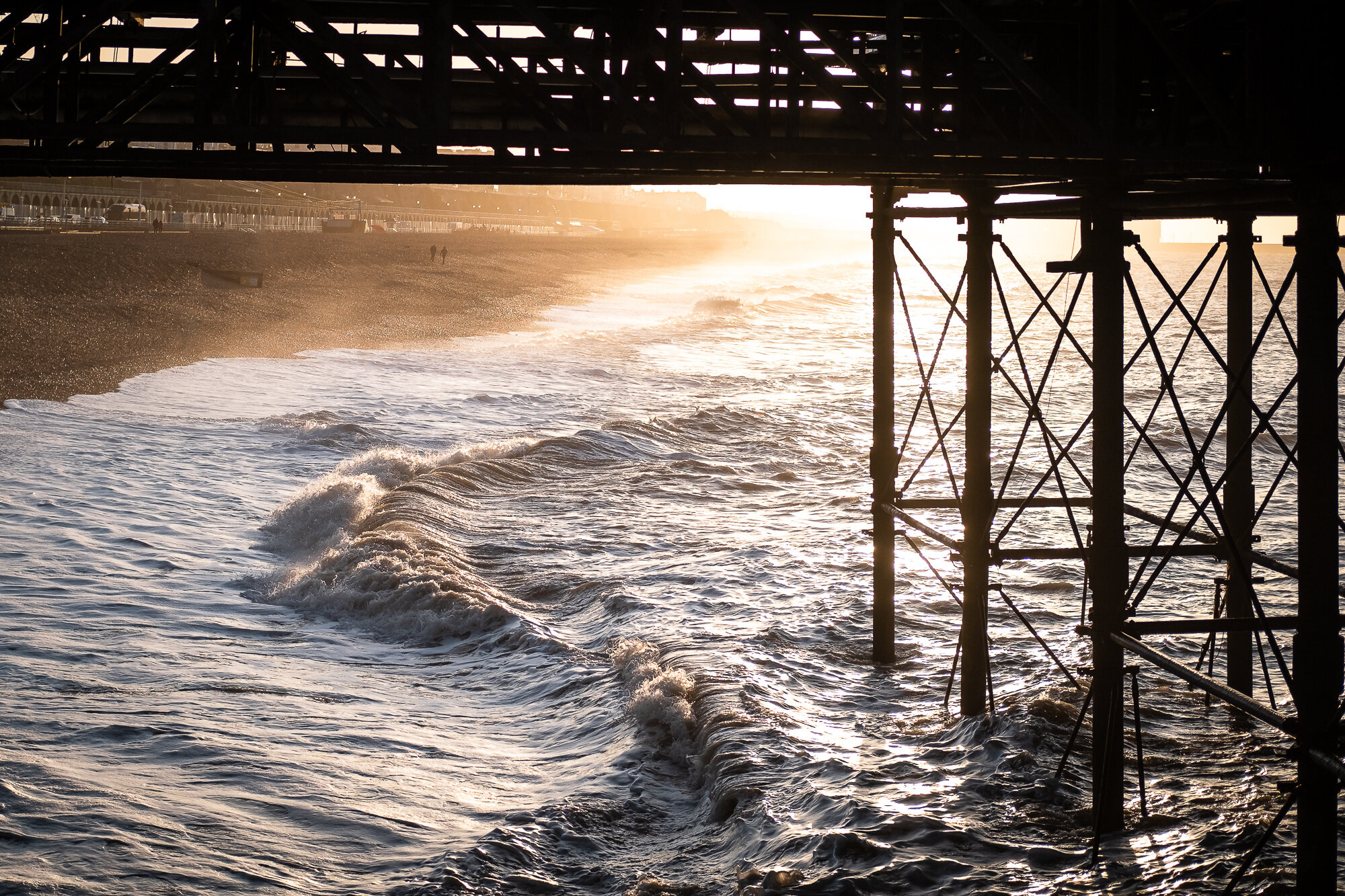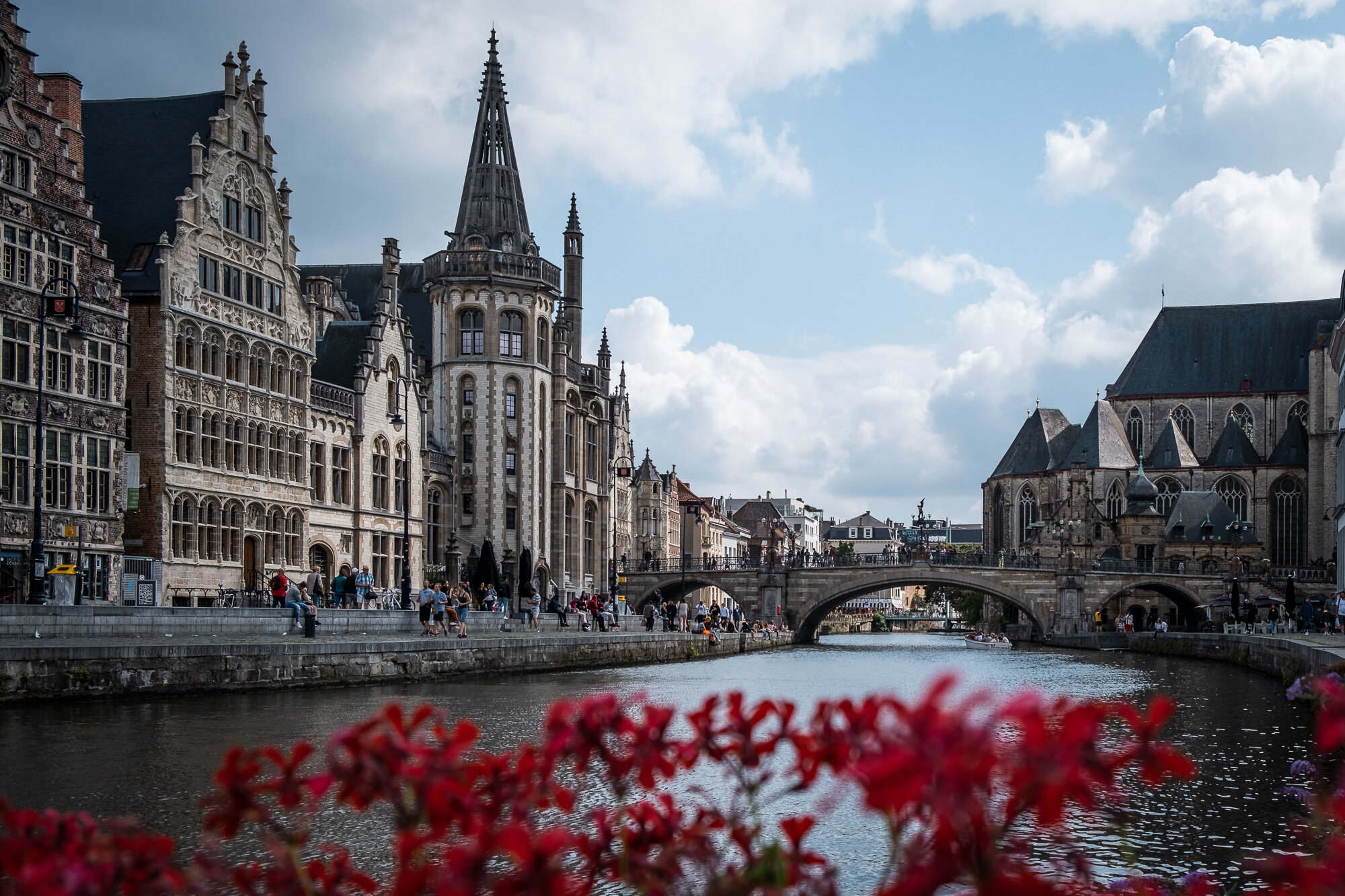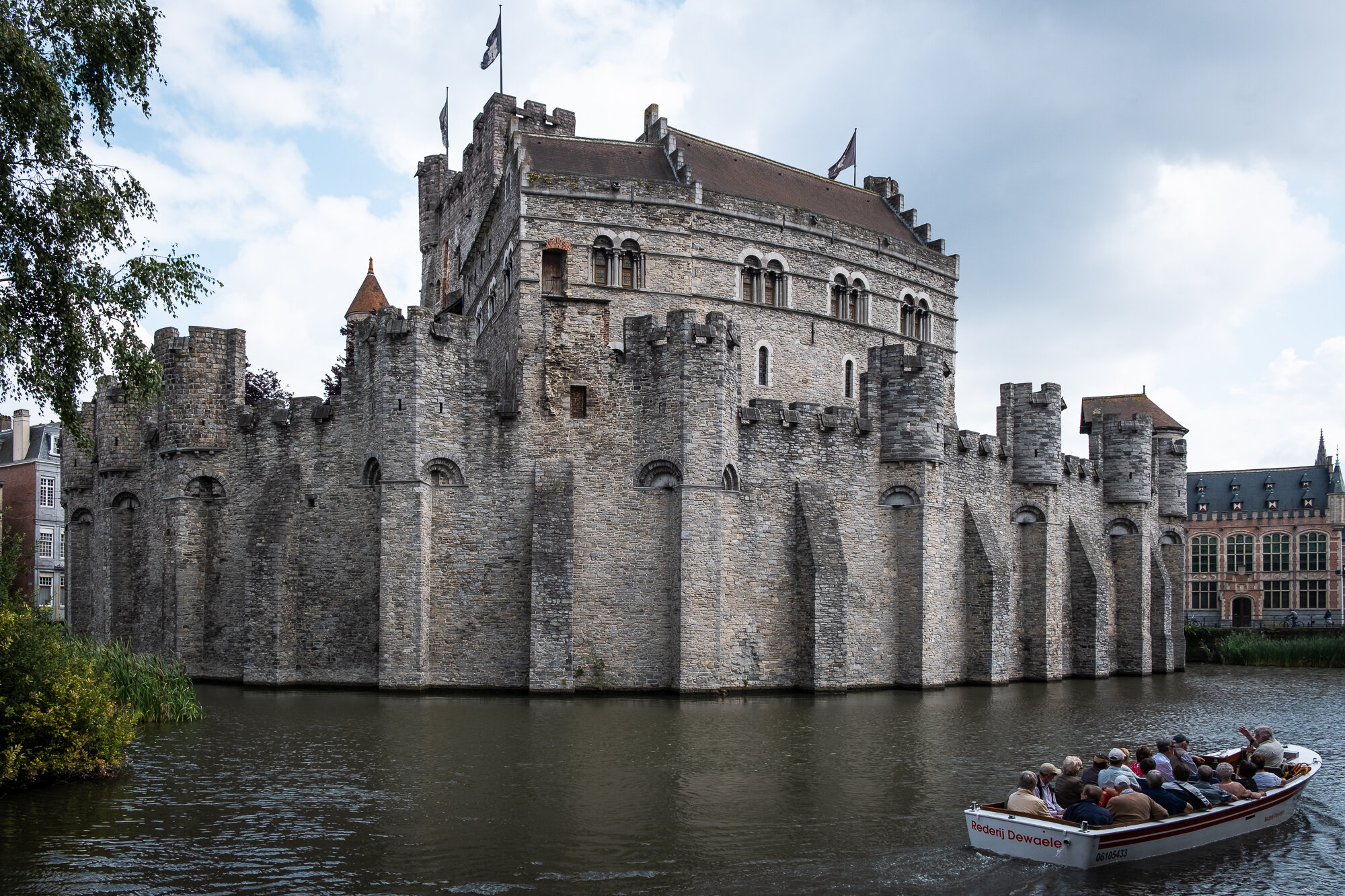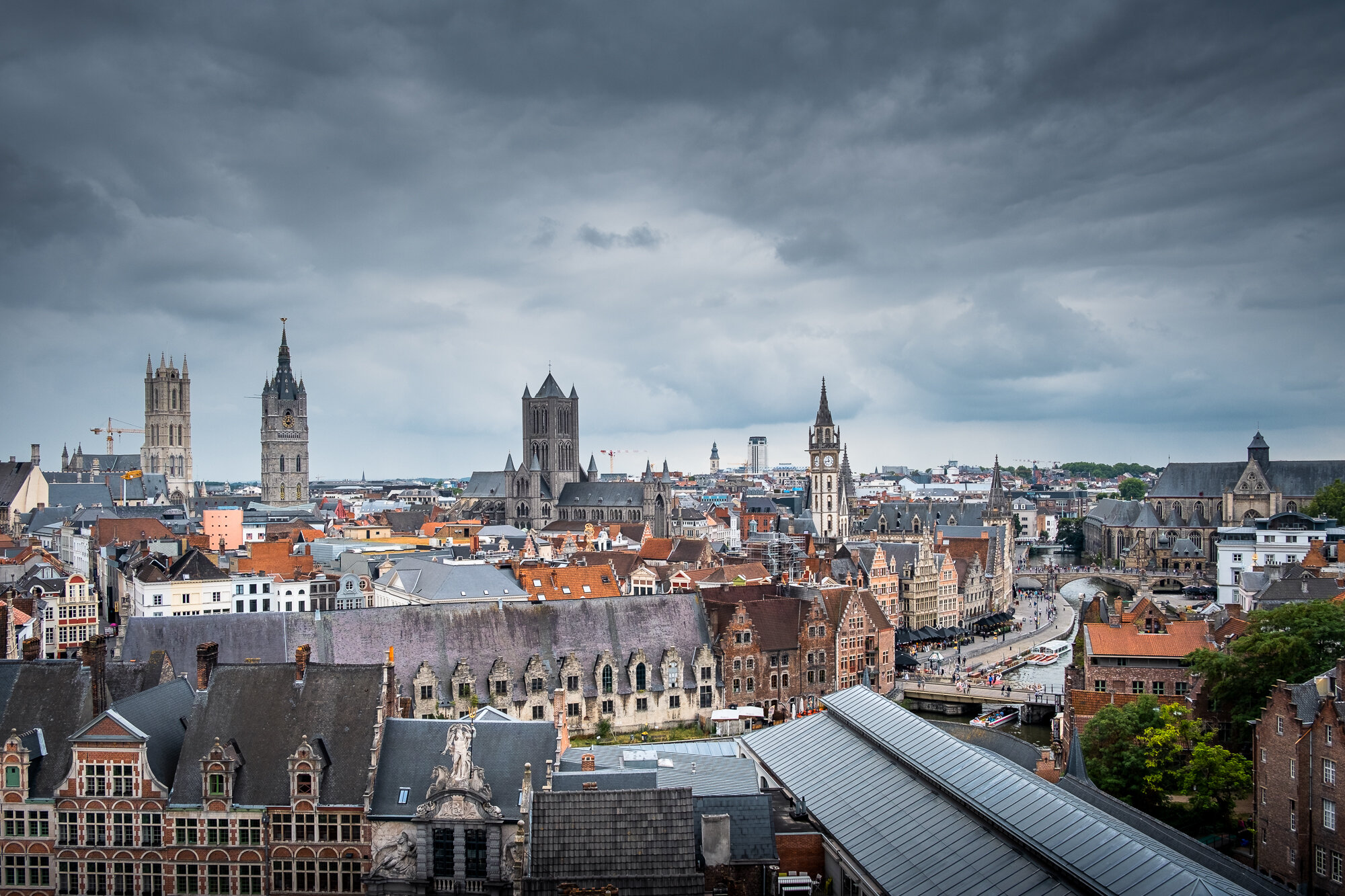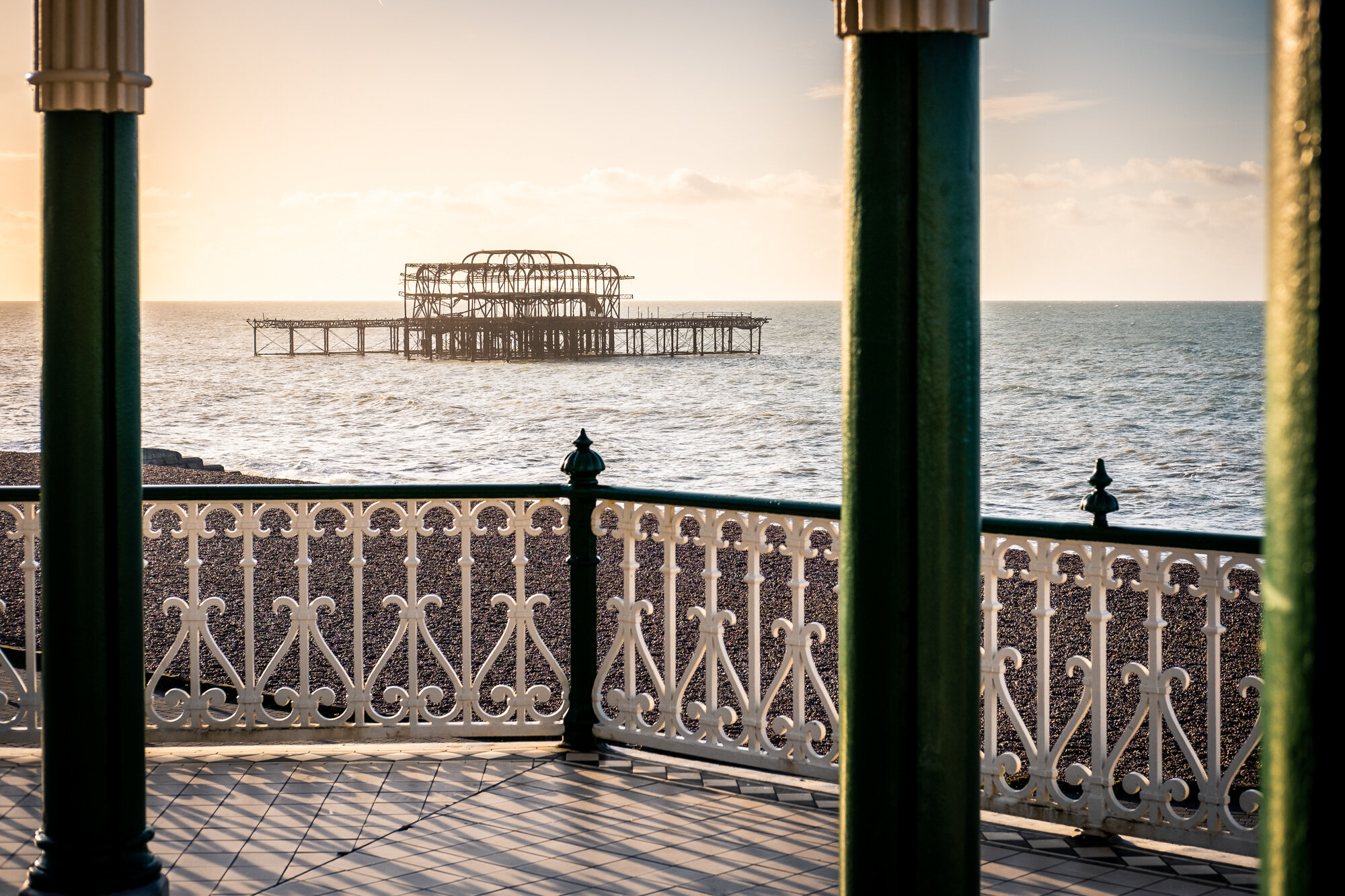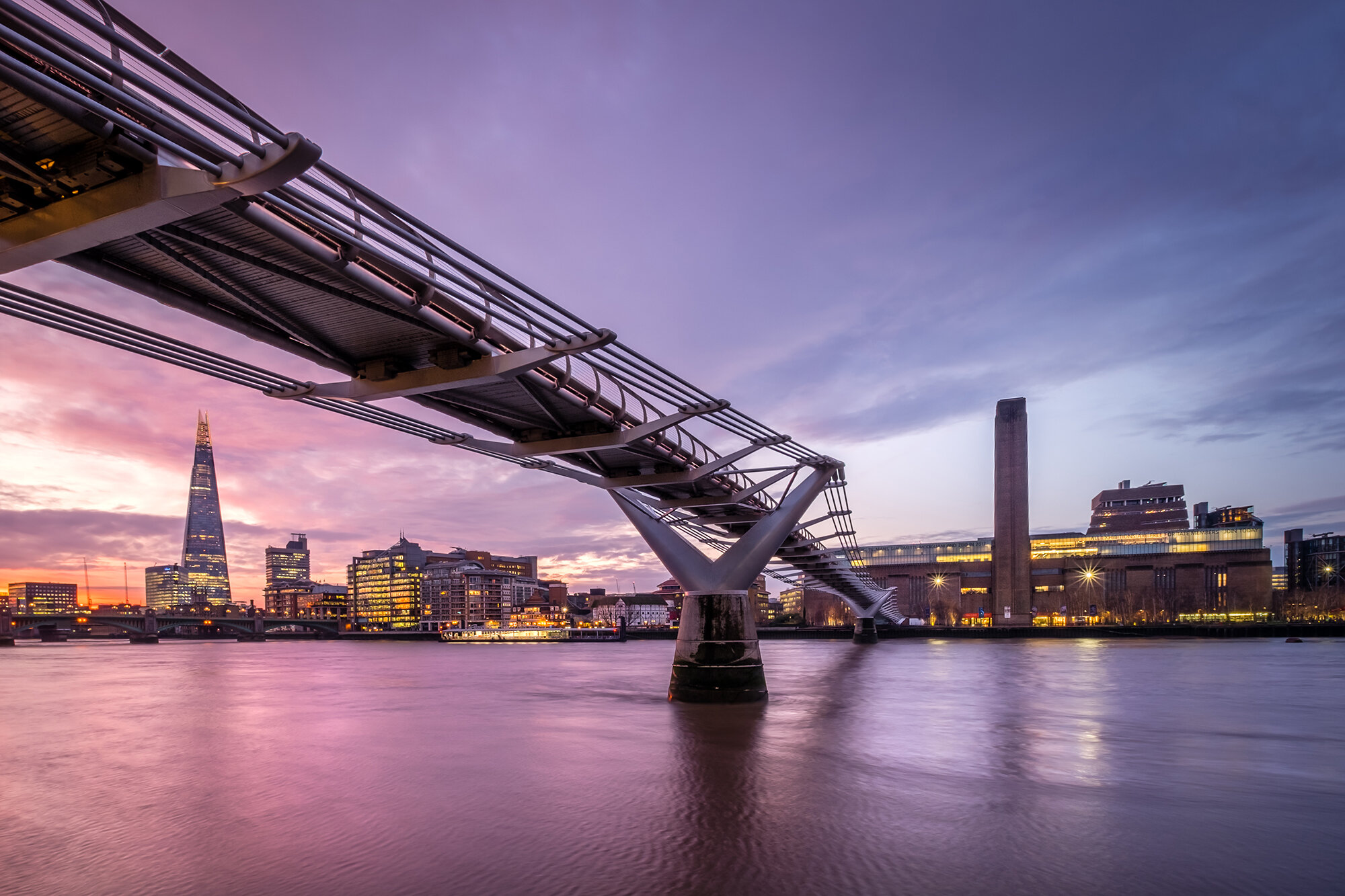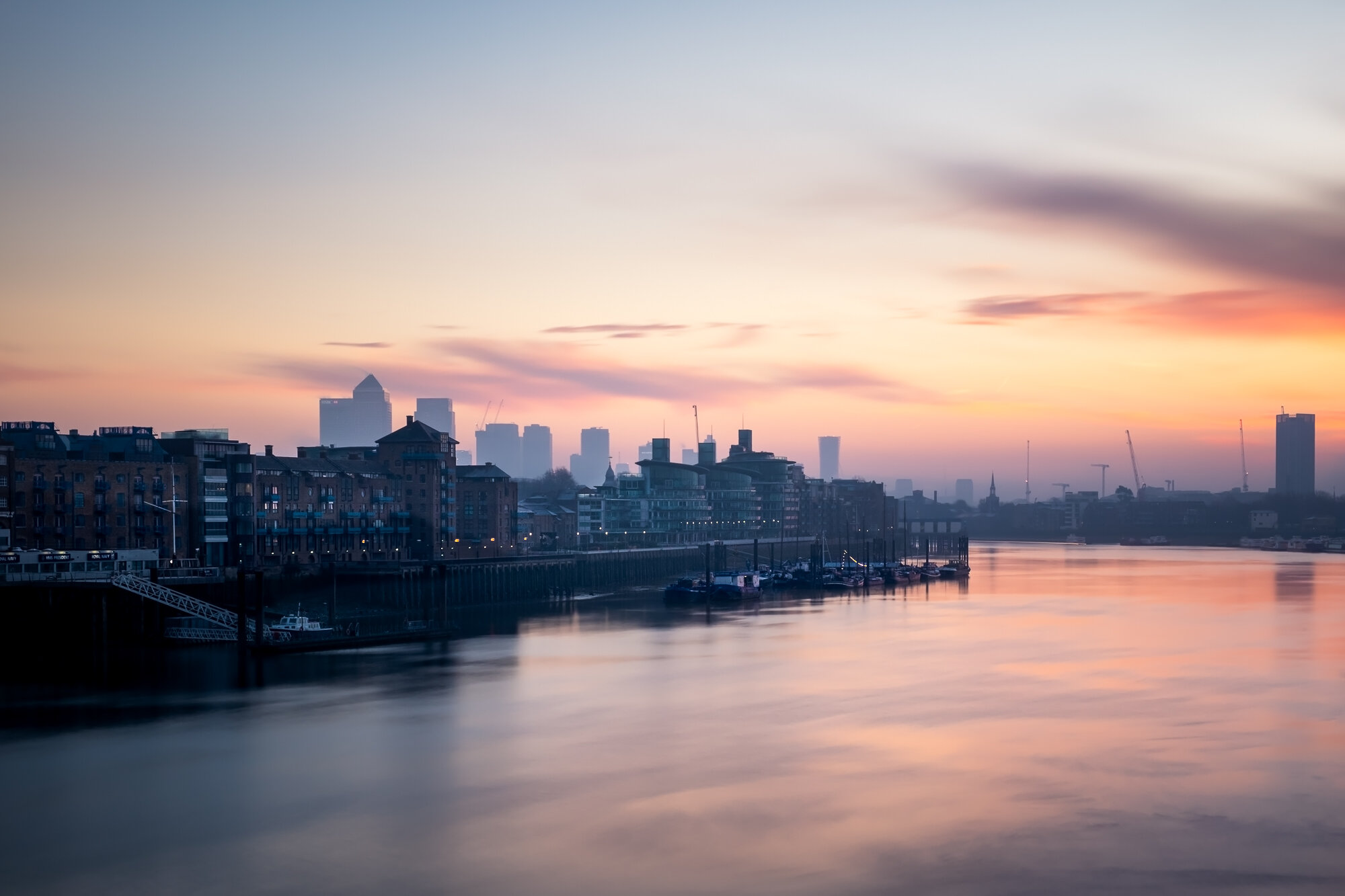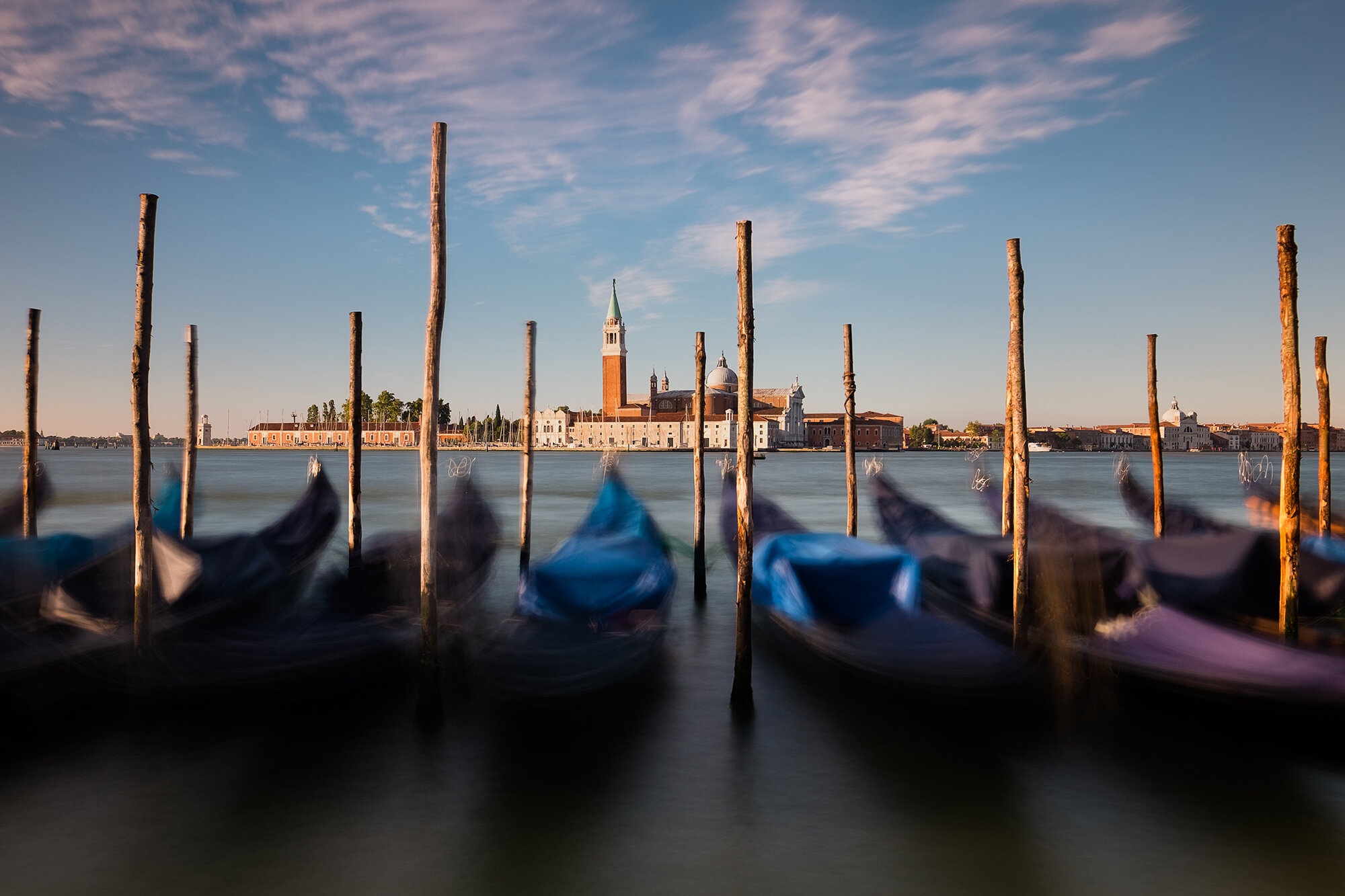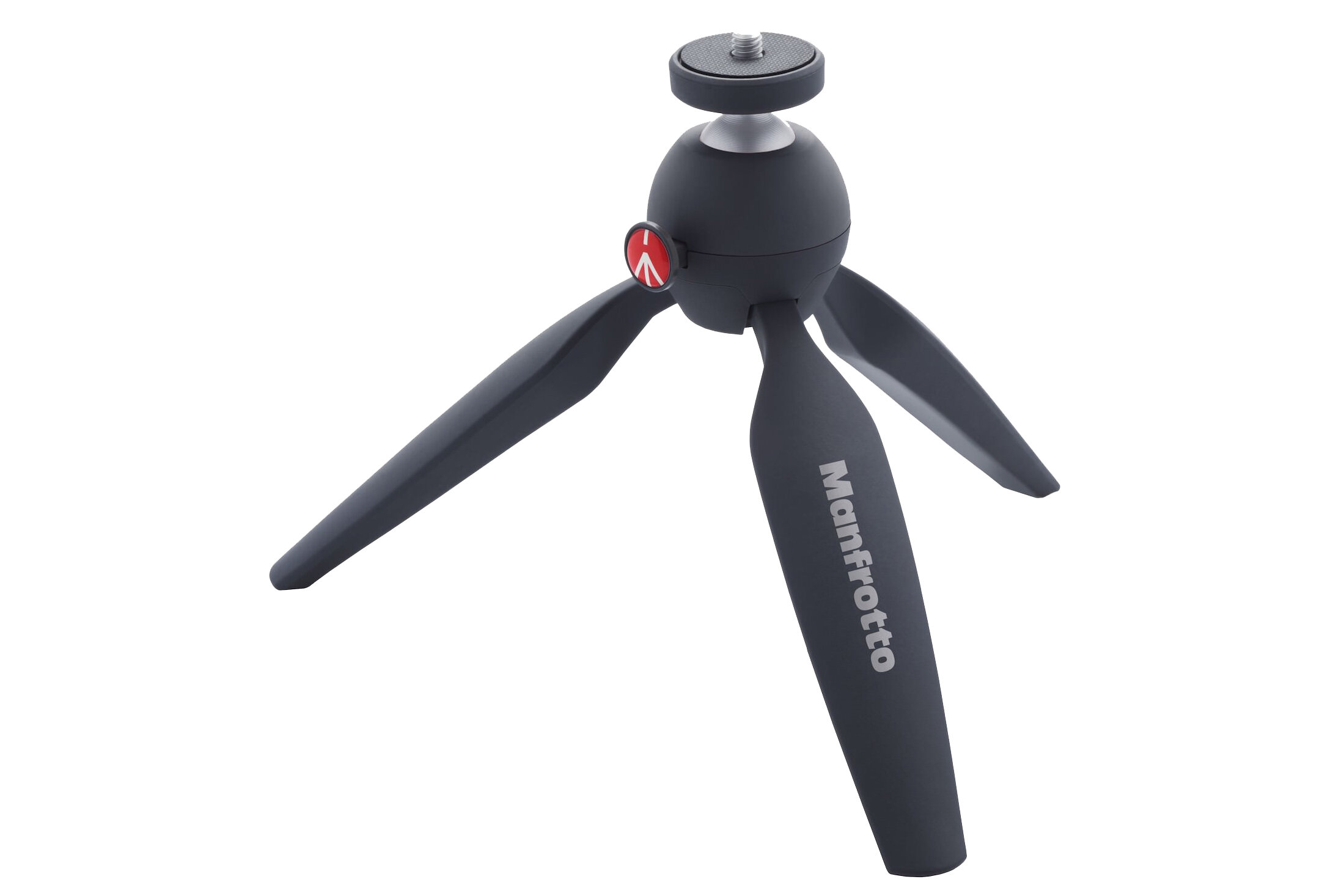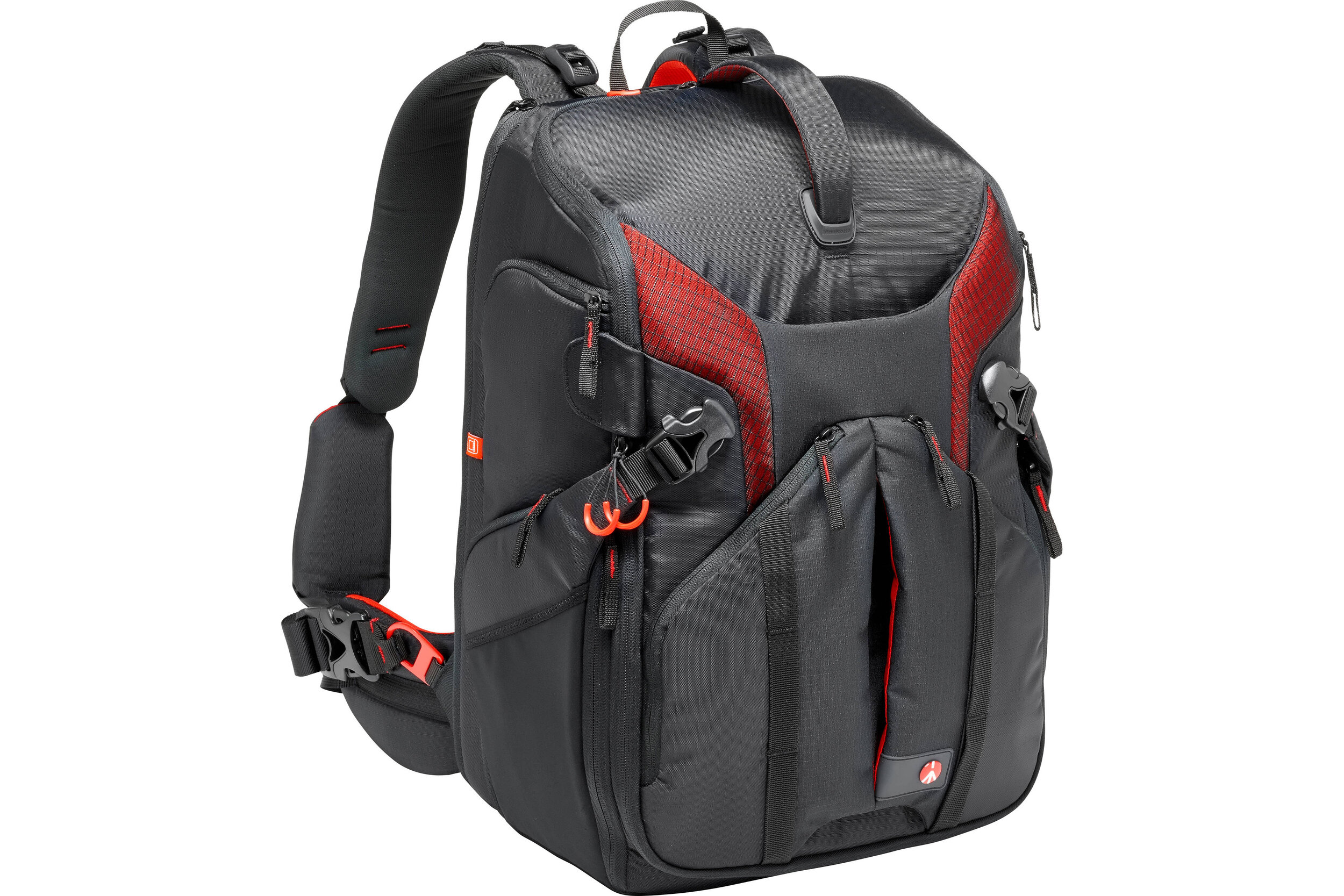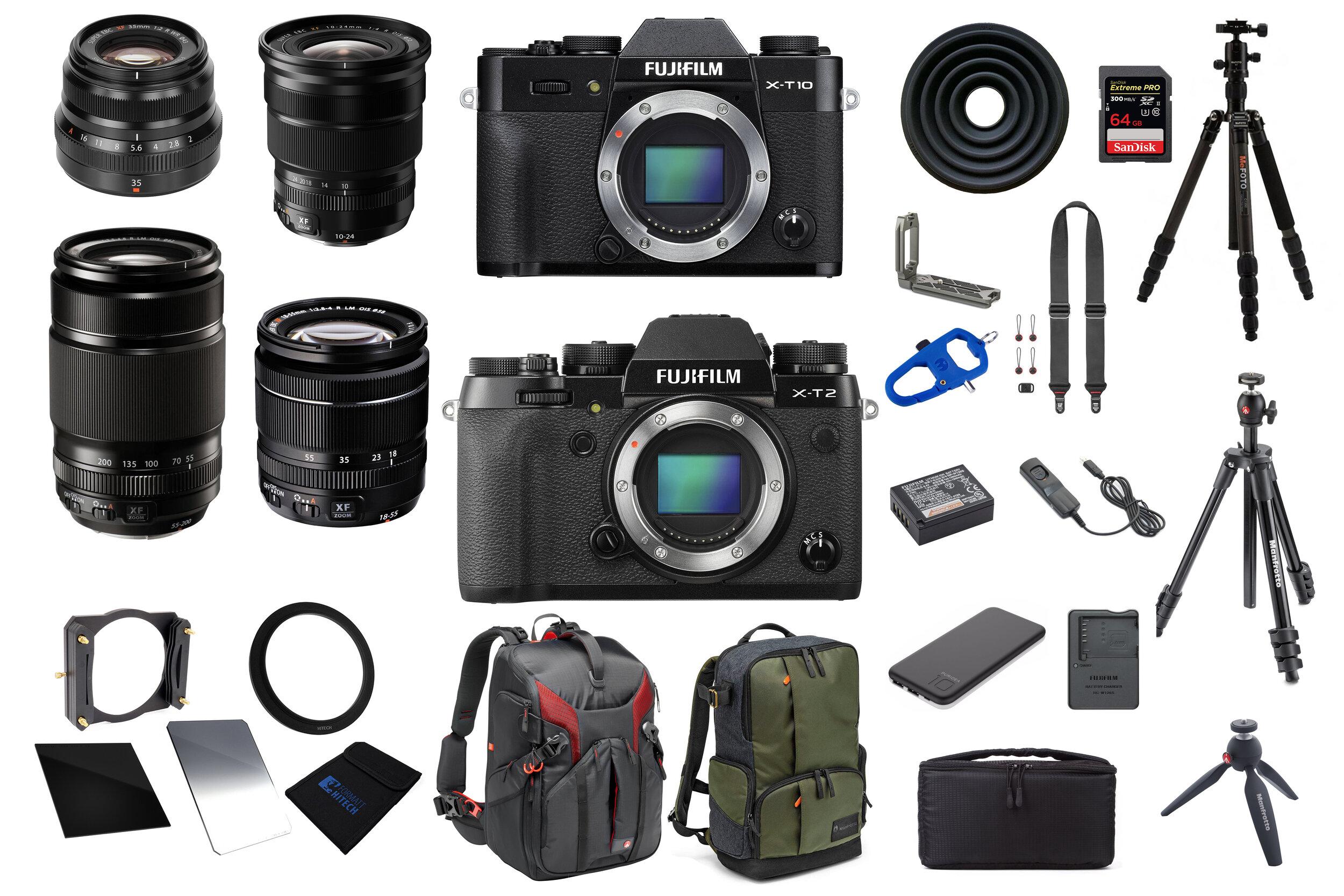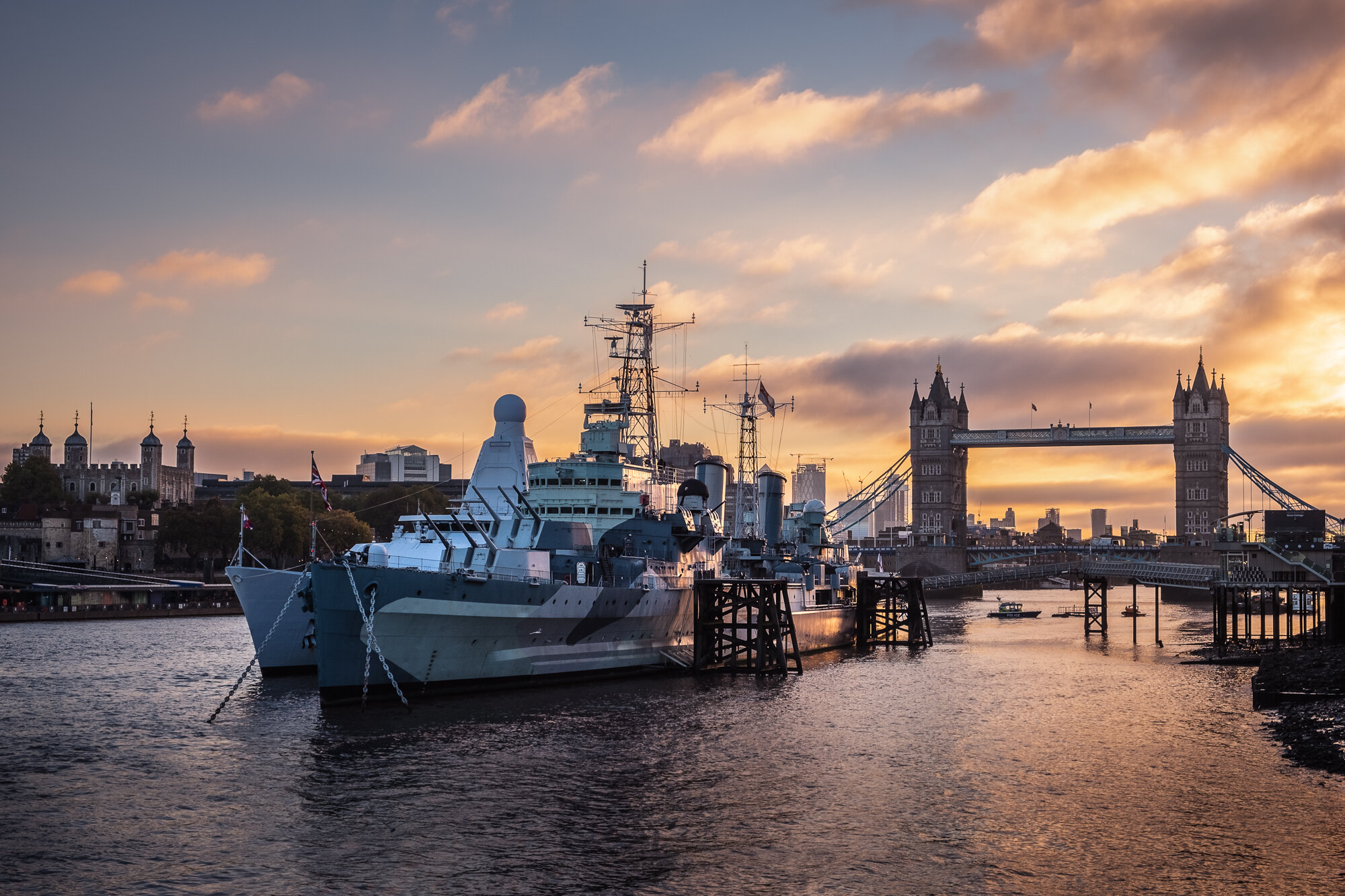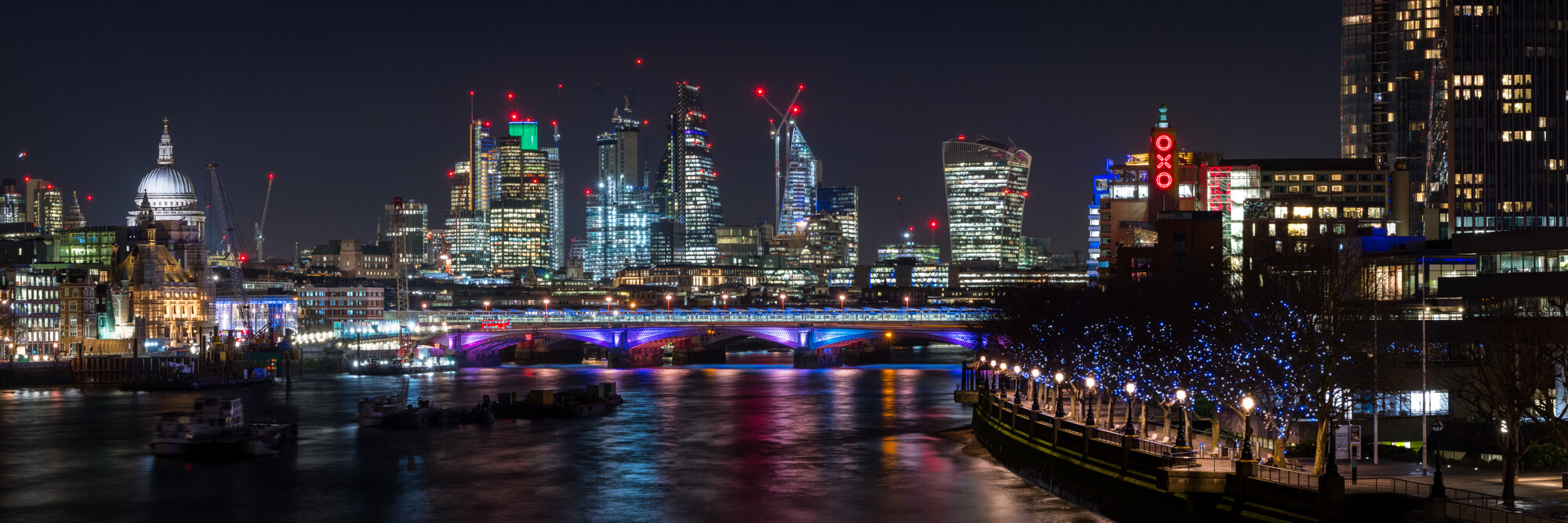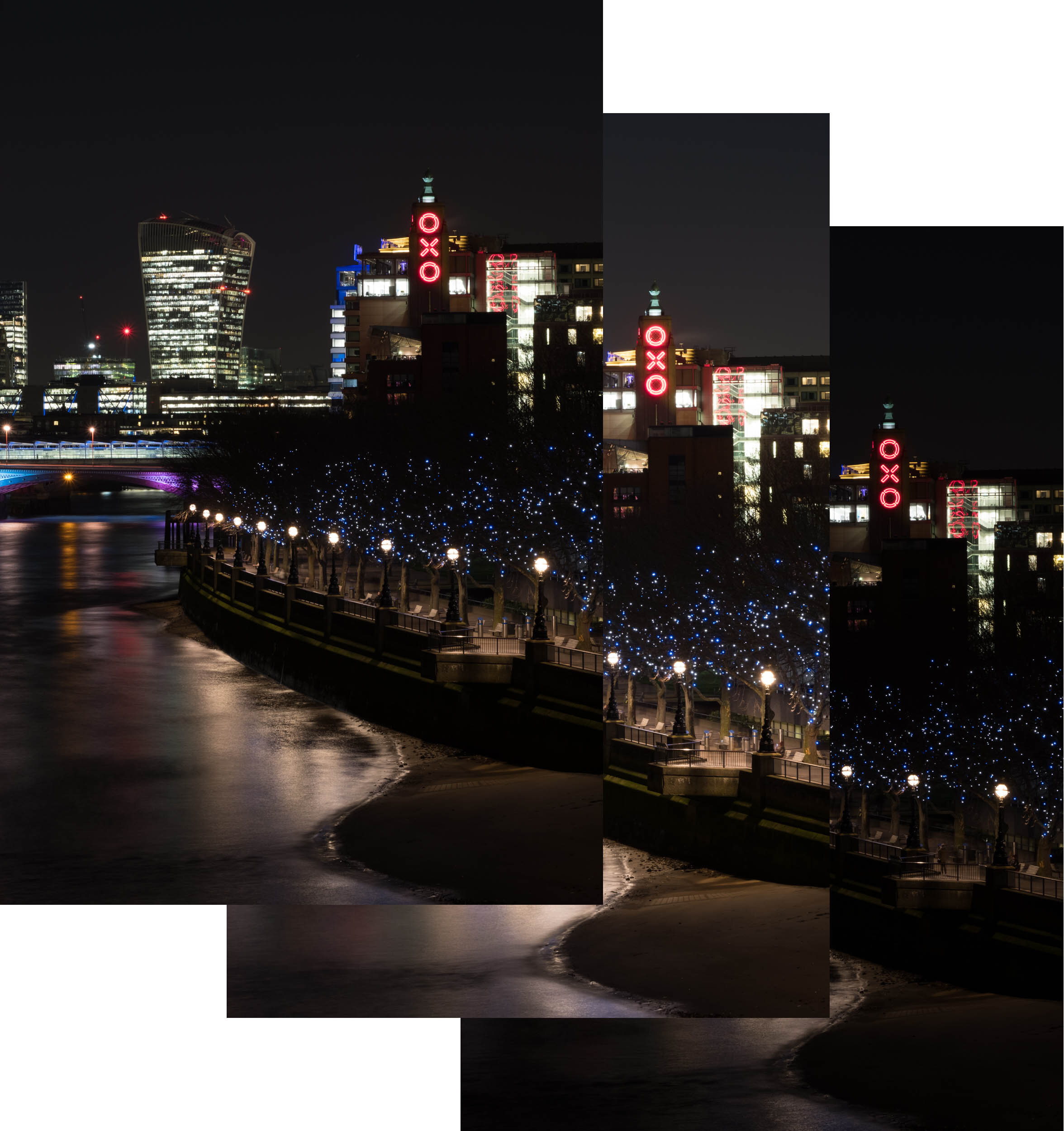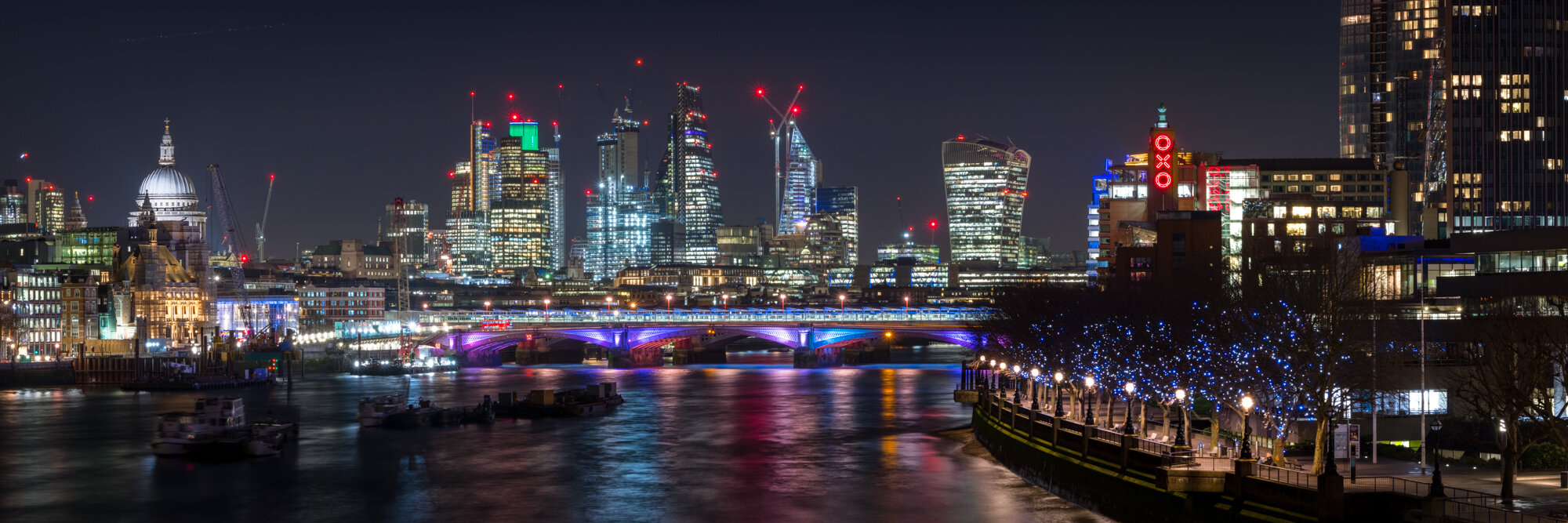BLOG ARCHIVE
Kase Magnetic Filters | A Landscape Photographers Review
After using the Kase Wolverine Magnetic filters out in the field for over a year now, I decided to share my own feedback in a bid to help others when choosing their next filter set for landscape photography.
For decades, both film and digital shooters have used filters to help their image-making while out in the field, be it to balance the exposure with a graduated filter, cut the reflective light with a polariser or slow the shutter speed with a neutral density. To this day, even with the technological strides made by the camera manufacturers, most landscape photographers will still own a set of filters of some sort to help them take photos.
I’ve been using filters for my landscape photography for many years, working my way through a number of different brands. I’ve invested in both circular and square systems, before finally ending up with these Kase Wolverine magnetic filters. Having now used them for over a year and in that time having been asked my opinion about them quite a few times, I’ve decided to share my thoughts on these filters based on my own experiences while out, taking landscape photos.
Before I start, just a couple of housekeeping items. I’m not writing this post to suggest Kase filters are the best filters on the market. Everyone has different needs and in fact, we photographers are spoilt by the options we now have when it comes to choosing filters. This post is my opinion and based on my own experiences with this and other brands I’ve used. Secondly, I’m not affiliated with Kase in any way, I bought my own set of filters and am under no obligation to say good things.
My Kase Wolverine Magnetic Filter Kit
When I switched to the Kase magnetic circular filters, I opted for the 72mm professional kit which consists of an ND8 (3 stop), ND64 (6 stop), ND1000 (10 stop), a polariser, magnetic adaptor, one magnetic lens cap and a leather carry pouch. Being a Fujifilm X mirrorless shooter, I went for the 72mm kit as it fits my largest lens diameter without vignetting and buying anything bigger would have been more expensive and meant more weight in my bag without any benefit. The 72mm kit was just right for me.
Along with the professional kit, I also purchased step-up rings and magnetic lens caps for the other two lenses I regularly use for my landscape photography. All in all, with the professional kit costing £270 and the extra step-up rings and lens caps costing a further £80 (ouch!!), all of the kit you can see in the picture above costs £350.
What do I like about the Kase Magnetic Filters
#1 Minimal colour cast
I remember the days when I would take a long exposure photo and depending on the filter brand, the resulting image would be awash with a blue or magenta colour cast. Yes, it can be corrected in post, but that’s still more work for those who want to spend less time in front of their computer and want to see a more accurate representation of the scene while out there in the field. How do these filters fair in this department? Well, pretty good actually. These filters are incredibly neutral and even with the multi-minute exposures, the colours in the resulting image remain pretty accurate with minimal colour cast.
#2 Quick and simple to use
With the right accessories, this system is a breeze to use. When I bought the Professional kit, I made sure to buy step-up rings and lens caps for all of my usual landscape photography lenses. Although it meant another £80 investment on top, it also meant that while out in the field, I wouldn’t need to mess around screwing or unscrewing adapters to change lenses or put my lens cap back on. I can simply mount whatever lens I need and snap a filter (or two) straight onto the end in a matter of seconds. If the scene changes quickly, in no time at all, I can swap out the filters in a pinch. This has been an absolute game-changer for me.
Lastly, when putting the camera back in the bag, whether I leave the filter on or take it off, the magnetic lens cap will fit regardless and unlike using filter holders for square systems, there is no disassembling to do. I just pop the lens cap on and put the camera away. Zero fuss!
#3 A lightweight filter kit
Without the bigger, thicker square glass and the holder kit, the Kase filter system is compact and lightweight. The 72mm Professional kit weighs just 161g and with the extra step-up rings and lens caps, the weight is still a reasonable 250g in total. The leather pouch alone makes up more than 70 of that 250 grams, so if you need to slim down the weight or size even further, you could look to store the filters stacked together in a smaller, single pocket pouch. For me, the protection the leather pouch offers makes up for this extra weight so it remains in my bag.
#4 Well-made with tough glass
Made from toughened B270 Optical Glass, these hard to scratch filters feel reassuringly robust to use while out in the field. In the last year, my filters have been knocked and dropped here and there without any problems but I have to admit, I haven’t put them through the ultimate test by dropping them from height onto a hard surface. I’ve seen others do so and the filters have come away without a scratch which is quite reassuring for when the inevitable does eventually happen and I have a clumsy moment.
#5 No noticeable loss of image quality
This was never supposed to be a scientific review of the Kase filters but image quality is incredibly important to me, as it is to most other landscape photographers and with the engineering that goes into the expensive lenses we use, what we place in front of them matters. Adding another sheet of glass for the light to pass through will likely affect the image quality to some degree but I’ve zoomed in plenty of times during post-processing, frequently pixel peeping and to my eye, I can’t see any degradation in my photos at all.
#6 Filter magnets are reassuringly strong
I mentioned previously that with over a year of using these filters, I’ve not yet dropped them from height and that might be in part due to luck, but if I’m being honest, its mostly because the magnets are very strong and to this day, I’ve not had a filter drop off the camera a single time. As I wander through the forest taking photos, I will regularly throw my tripod over my shoulder with the camera and CPL filter still attached and as I walk along, with the camera bouncing up and down on my shoulder, not once has the filter dropped off. If I felt for one minute the magnet was not strong enough, I would not be taking that kind of risk.
#7 No vignetting (even when stacked)
One of the issues I had with previous filter brands, especially when using a square format with a filter holder was heavy vignetting around the image, especially when stacking filters in front of my wide-angle lens. Even though I had read positive things about a lack of vignetting, when I was looking at the 72mm Kase filter set, I have to admit, I was a little concerned I might see some at my widest focal length, but I’m pleased to say that even when stacking 2 or 3 filters, the thin profile means they don’t protrude out too much, which helps to avoid the dreaded vignetting.
It’s a problem easily rectified by buying the larger 77mm or even 82mm set, so the filters are slightly oversized, but for me, the small, compact size won out and I’m incredibly pleased with the 72mm set I ended up going with.
The not so good
#1 The CPL is a bit fiddly
Most will know that to add or remove polarisation, you need to turn your circular polariser filter and although there are benefits to having thin, low-profile filters, it does make the CPL a bit difficult to spin. With the strong magnets creating a lot of friction as it turns, you need to get a bit of a grip on the filter but being so thin, it’s sometimes a bit frustrating to lock in the exact amount of polarisation I want. That being said, I prefer to have strong magnets to avoid the filters falling off, so I wonder if, in the future, a better design could be looked into. One that allows for a smoother, less fiddley rotation.
#2 The magnetic lens caps should be stronger
Whereas I mentioned previously that the strength of the magnets on the filters was nice and strong, unfortunately, the same can’t be said about the lens caps. I probably have to mention now that having purchased these lens caps over a year ago, this issue may well have already been addressed but I’ll base this feedback on the versions I received and for my set at least, the magnets are quite weak. I am in constant fear that I’m going to lose one of the lens caps, to the point at which I will only use them when the lens is safely in the bag and even then, they frequently fall off.
#3 Works best after investing in more accessories
I mentioned above that along with the 72mm Professional kit, I also purchased £80 worth of step-up rings and lens caps which I felt I had to buy to get the full “ease of use” benefit from the system. You could avoid buying the magnetic step-up rings and use cheaper (non-magnetic) alternatives but that would mean screwing and unscrewing the single magnetic adapter ring, each time you want to change lenses. That would get very boring, very fast. Also, if I hadn’t invested in the magnetic lens caps, every time I put. the camera away, I would have to unscrew and remove the magnetic adapter ring so I could put the regular cap back on the lens.
The Verdict
With the positives significantly outweighing the negatives, I’m pleased to say that I’m a very happy user of these Kase Wolverine Magnetic filters. I would even go as far as saying that they are the best filters I’ve owned to date. Ever since I stopped using graduated filters in favour of bracketing for my landscape photography, moving back to the circular format was an obvious move and with the solid construction, fantastic image quality and lightweight kit, these super convenient magnetic Kase filters were an obvious choice in the end.
Whether you’re looking to invest in your next filter kit or just curious about the Kase magnetic filters, I do hope you found this post useful. I’d love to hear about other people’s filter experiences and welcome any of you to leave feedback in the comments below.
Until next time.
My Top 10 Landscape Photography YouTube Channels in 2022
If you’re into landscape photography and looking for some great YouTube channels you can learn from and be inspired by, look no further than this list of my top ten landscape photography YouTube channels which I’ve updated for 2022.
YouTube is a fantastic resource when it comes to following the work of your favourite landscape photographer and personally, I draw a huge amount of inspiration from the channels I subscribe to, viewing the world through their eyes and picking up a few tips and tricks along the way.
I’ve cultivated a healthy list of accomplished landscape photographers on YouTube and while some will post the occasional video that piques my interest enough to watch it, there are just a few YouTubers that I look forward to and for one reason or another, will always try to watch the content they release. After releasing my first top 10 list back in 2020, I’ve decided to review my previous article and bring an updated list of my top 10 landscape photography YouTube channels for 2022.
As I also mentioned in my previous article, do remember to balance watching videos about landscape photography with actually going out and practising it yourself. Try to use the videos you watch to inspire and motivate you and not replace your creative outlet entirely.
In no particular order, here are my Top 10 Landscape Photography YouTube Channels in 2022.
#1 Simon Baxter
Simon Baxter has been an inspiration to me since I started to take woodland photography more seriously. I have watched his channel for some time now and he really is the master of seeking out compositions amongst the forests and importantly, talking you through the scene, communicating his thought process as he goes. Since I last posted, Simon has begun to talk more deeply about his connection to the environment he photographs and by understanding the woodland as much as he does, it has propelled him to be regarded as one of the top woodland photographers in the world.
#2 James Bell
Born and bred in the Lake District, once James picked up his first camera it was a no-brainer for him to point his lens at the beautiful landscapes on his doorstep. Fast forward to today, and James is now considered one of the top landscape photographers in and around the lakes. Along with taking some exceptional photos, James is a natural in front of the camera and his approach to talking you through his landscape photography workflow out in the field is excellent.
#3 Fototripper
Fototripper is a channel run by Gavin Hardcastle, a British landscape photographer based in Canada. Gavin is a great landscape photographer, an excellent teacher, and a really funny guy. If you want a great mix of landscape photography and comedy skits, this is the channel for you.
#4 Henry Turner
Henry is a landscape photographer based in the north of England and spends most of his time in and around the Lake District and nearby coastline. He is a natural in front of the camera with an incredibly open, honest and energetic approach to the way he presents and his rapid growth to over 60k YouTube subscribers is a testament to that.
#5 Joe Allam
I’ve been watching Joe’s YouTube channel for a few years now and although not strictly a landscape photographer, his usual travel photography includes plenty of natural and urban landscapes. Not only is Joe a fellow Fujifilm shooter, but his videos are always well polished and have a nice mix of both travel photography and graphic design content.
#6 Simon Booth
Ever since I started to take more woodland and natural landscape photos, Simon’s channel has been a real inspiration for me, especially when photographing intimate and abstract scenes. Along with being an accomplished landscape photographer, Simon’s videos are incredibly informative and he has a refreshingly relaxed approach to presenting.
#7 Mali Davies
Along with taking some great photos up in the north of England, Mali has such a friendly and open demeanour and that really comes across in the videos he creates. One thing I really like about his videos is how he addresses his viewers so naturally as if you are there with him having a two-way conversation. It’s quite absorbing to watch.
#8 Nigel Danson
Nigel is one of the best landscape photography teachers on YouTube. His videos provide a great mix of on-location photography and studio-based talks and tuition. He is particularly good at examining and critiquing his own work so others can learn the same lessons he does.
#9 Thomas Heaton
Thomas should not need any introduction. He’s a bit of a superstar amongst the YouTube landscape photography community and for good reason. He has a huge following, an honest and unpretentious manner, and makes fantastic videos from all over the world. Thomas seems to be able to find a photo out of nothing and even on the rare occasion he doesn’t, he is content to come home empty-handed due to his “good shot or no shot” approach.
#10 Ben Horne
If you are after a pure photography experience, look no further than Ben Horne. He shoots wilderness photography on large format film in Zion and Death Valley National Parks. Ben will regularly head out on a trip and document his journey as he seeks new and different compositions that match his intimate style of landscape photography.
So, there you have it, the updated list of my top 10 landscape photography YouTube channels in 2022. It was interesting to see how my list had changed and although many survived from being cut from the 2020 list, the new additions inform me as to where my photographic interests now lie and how they are evolving over time.
My Favourite Landscape Photos from 2021
It has become customary on my blog for me to share some of my favourite photos I took in the previous year so here’s my 2021 landscape photography review featuring a collection of woodland, landscape and cityscape photos.
It has become customary on my blog for me to share a retrospective post, talking about the previous year I’ve had and sharing stories and some of my favourite photos I took along the way. Deciding not to write a full retrospective this time around but also not wanting to break the tradition of reviewing and sharing my photos from the previous year, I’ve decided to keep this post a little lighter and focus only on the photos. So, here are 10 of my favourite landscape photos I took during 2021.
Photographing the woodland through the seasons
2021 was my first full year of woodland photography and I’ve absolutely fallen for this sub-genre of landscape photography. These days, you will often find me wandering my local woodlands for hours on end as I try to make sense of the natural chaos the trees provide. Woodland photography is hands down one of the most frustrating and equally rewarding subjects to photograph and I’m really enjoying the challenge it provides.
To better tell the story of the year I had photographing woodland, I decided to pick a photo I took from all four seasons.
First up is this photo I took in a hilltop woodland on the Surrey/Kent border. Taken during a rare hoar frost in January, I had the most amazing, albeit cold morning looking for frosty compositions and this winding pathway flanked by silver birch was the perfect setting to create this beautiful wintry woodland scene.
Winter Woodland Triptych
I absolutely love a triptych. Putting three photos together can work incredibly well to tell a more cohesive story and with such a successful morning of photography and having bagged three wintry woodland photos in similar conditions, they had a similar look to them. I feel they are even stronger when presented as a single piece. Hopefully, you feel the same. Click on the photos below to see a bigger version.
It seemed to take forever for spring to finally get out of first gear in 2021. Whereas I would have normally expected to see this beautiful carpet of bluebells by mid-April, after a further 2 scouting trips, I had to wait another month before they were ready here in this beech woodland down in West Sussex. Although at the time I didn’t think much of the white daisies that accompany the bluebells on the ground, I now think they work well alongside the green and purple colours, adding some further interest to this springtime woodland scene.
The photo below is possibly my favourite taken in the woodland during 2021. Surrounded by these lush green leaves and glorious morning mist, I was in my element as I wandered through the trees on this early summer’s day. After spotting this composition, I perched my camera midway up the bank and used my wide-angle lens so I could include those fantastic trees on the left as they leaned into the frame creating this natural archway, framing the misty forest scene in the background. The finishing touch were those purple rhododendrons down in the bottom right-hand corner of the image. As controversial as they are, I think they add some interest and balance to the overall composition.
Last up in this woodland collection is what some might call nature’s greatest annual show. Like in the spring, when I was waiting for the bluebells to appear, the best colours of autumn is all about timing, so, once again, it took multiple scouting trips and a fair bit of patience before I managed to photograph this scene below. In fact, the colours appeared so late, I had to wait until the last week of November before they were at their best.
It was the plethora of colours in this image that initially caught my eye, so with the forest doing its job, my job was to make sense of the chaos and do it justice by taking an interesting photo out of it. I ended up using the green pine tree on the far left to add visual weight, balancing the composition against the strong lines of the Beech tree as it leaned towards the right-hand side of the frame.
Autumnal Woodland Triptych
I lapped up the conditions as I explored these autumnal woodlands and like during the hoar frost back in January, I was able to take several different photos which look great on their own, but in my opinion, they look even stronger presented together as a triptych. One day I might even write a post about why I like them so much. Click on the photos below to see a bigger version.
Landscapes photos taken in the Southeast of England
Surrey, Sussex and Kent have some great landscapes to photograph. Granted, they lack the drama of the Jurassic Coast or the mountainous Lake District, but we still have some beautiful, albeit subtle places to take landscape photos here in the Southeast of England. Below are 3 of my favourite landscape photos I took in 2021.
Starting with this stunning view across the South Downs in East Sussex, this photo is all about how the light hits the rolling hills, emphasising the contours in the landscape and creating a natural zigzagging line leading into the distance. Although it was late April, I distinctly remember how cold it was as I stood there waiting for the right moment to take the photo. As the sun rose above the horizon, it soon became clear that timing was going to be everything. I had to wait long enough for the light to hit the right places down in the valley, but not too long so that there was too much light as those all-important shadows and contours would be gone.
You really don’t have to travel far to take landscape photos and the photo I took below is proof of that. As I drove home from a rather unsuccessful woodland shoot back in May, I remember spotting these moody clouds in the sky as I was passing by this bright yellow rapeseed field not far from where I live. Anticipating something special, I stopped the car, grabbed my camera and headed straight to this spot which provides a good view of this lone tree in the middle of the field. As the cloud rolled in with a band of rain behind, and not being dressed for the occasion, I worked fast to get the image before racing back to the car just in time for the heavy downpour.
A popular subject and certainly one of my favourite places to visit with my camera, pictured below is Bodiam Castle in East Sussex. Not coming across any mist or fog on my drive down, I was surprised to see the entire place engulfed as I arrived on location and after waiting a short while for the fog to thin out a little, I managed to take this photo of the beautiful castle below.
I don’t usually like the photos I take when the camera is pointing directly towards the sun but with plenty of mist still hanging around, the brighter, harsh light from the sun was defused just enough for me to take this photo while still retaining plenty of detail in the castle.
The London Cityscape
For obvious reasons, I didn’t make as many trips into London as usual during 2021 and with so much uncertainty that still surrounds us, I’m not expecting that to change too much in 2022. We will have to wait and see. I did however manage to take a few trips into the city in between work from home orders and I’ve shared below three of my favourite London cityscape photos I took in 2021.
First up is this photo looking down Lombard Street in the city. London was still relatively quiet compared to normal and as I wandered down this empty street, I spotted this small puddle by the side of the road. I’ve taken a photo of this view many times before and although I really like the fantastic lead-in lines at the bottom, the traditional buildings that flank the street, and the more contemporary Fenchurch Building at the top of the frame, I always felt it was lacking a little something. Thankfully, this time around, the rain shower brought the finishing touch and I took full advantage by crouching down and using this fantastic reflection of the Fenchurch Building in this conveniently placed puddle as foreground interest.
Next up in this small collection of London photos is this one taken at sunset from St Katherine Docks in June. Normally a busy, somewhat cluttered view of Tower Bridge and The Shard, I decided to use my neutral density filter to cut the light down even further and create a long exposure photo. Removing the ripples and creating this smooth, almost glass-like effect on the water helped simplify the scene, allowing the iconic architecture and their reflections in the river to stand out.
Last up, is this impressive view looking east across London taken from The Shard’s viewing platform. I’d previously tried a few times to take this photograph but for one reason or another, I was never able to take a photo I was truly happy with. Until now that is.
Taken deep into the blue hour, just before nightfall, timing was once again so important when creating this image. I wanted to wait long enough for the city lights to be a feature in the image but not too late so that it was too dark to pick out any details in the landscape. With the camera precariously rested on my camera bag (no tripods allowed), I took the shot you see below. Thankfully, it all came together on this September evening in London.
That’s it! 10 of my favourite landscape photos taken in 2021. There’s plenty more to come in 2022 and I can’t wait to share it with you.
Until next time.
Trevor
What's in my Camera Bag for Landscape Photography (2021 Edition)
It’s that time of year again where I post this updated "What’s in my camera bag” blog post and give you all a little breakdown about the kit I use for landscape photography and importantly why I use it.
It’s that time of year again, where I post this updated "What’s in my camera bag” blog post and give you all a little breakdown about the kit I use for landscape photography and importantly why I use it. I’m not a gear head and won’t invest heavily unless I feel my photography will benefit and would much rather use and get to know my camera gear well, instead of swapping it out regularly. That way, while out in the field, I can focus on taking photos rather than working out how to change the settings on a new camera and missing the moment altogether.
I think it’s worth noting that I do believe that it is the photographer that has the vision, chooses the subject and creates the image. There are many photographers that successfully shoot with a single body and lens, a compact camera or even just their camera phone and still produce quite stunning work so, although it’s nice to get a new toy every now and then, I certainly don’t get fixated on the photography gear and always fixate on the craft of making photos.
That being said, if you are shooting with intent and have a particular style or subject you want to capture, then the right equipment can remove much of the friction and allow the photographer to focus on the creative side of the process, instead of working overly hard to get the shot, possibly taking much of the fun out of the process.
“The single most important component of a camera is the twelve inches behind it.” - Ansel Adams.
Cameras
I am a Fujifilm shooter and have been since 2016 which is when I first brought the X-T10 camera and after falling in love with the traditional feel, tactile controls and most importantly, the pictures it helped me take, I went all-in on mirrorless and sold my Nikon DSLR system.
Fujifilm XT2
Those that have followed me for some time know I am a Fujifilm shooter and this XT2 is still my primary camera. With the recent release of the XT4, there have been 2 updates to this model, but this camera still performs perfectly for me and I have no compelling reason to upgrade it just yet.
Fujifilm X-T30
Back in 2019, I upgraded my X-T10 to the X-T30 which to all intents and purposes is the same camera but with upgraded internals. I wrote a blog post about the switch which you can find here.
Camera Lenses
Zoom Lenses
Fujifilm XF 10-24mm lens F4 OIS
Fujifilm XF 18-55mm f2.8-4 R LM OIS
Fujifilm XF 55-200mm lens f/3.5-4.8 lens OIS
These three zoom lenses are my go-to for landscape photography. Between them, they cover a focal length of 10-200mm which is all I need when out, photographing the landscape.
Prime Lenses
Fujifilm XF 16mm F2.8 WR
Fujifilm XF 23mm F2 WR (New for 2021)
Fujifilm XF 35mm F2 WR
When travelling light or in need of a particular look, I will take these prime lenses with me. They are weather sealed so along with my XT2, I can head out in any conditions and still capture the shot I’m after.
Tripods
MeFoto Roadtrip
This MeFoto tripod has served me well over the years and has been the best compromise between weight and stability. It wasn’t expensive and up until only recently, since photographing woodland, I’ve been thinking about upgrading to a tripod with a little more reach.
3 Legged Thing Punks Corey (New for 2021)
Added to my gear in 2020, I purchased this tripod as I wanted a new lightweight but sturdy option when travelling around the city or further afield.
Filters
Kase Wolverine Magnetic Circular Filters 77mm Professional Kit (New for 2021)
I recently swapped to Kase filters as I love the simplicity of the magnetic system and as I heard so many good reviews, I took the plunge. So far so good. The filters are top quality and the magnetic system has made swapping the filters so much faster and less cumbersome.
My camera bags
Manfrotto Mover-30 Manhattan
I brought this bag in 2019 as I was after a bag that was large and comfortable enough to carry my cityscape gear but since last year, it has become my primary bag for all photo outings.
Manfrotto Pro Light
Relegated to my second landscape photography camera bag, the Pro Light is a little smaller and getting all my gear in is a little tighter so I’ve not used it so much over the last year.
Manfrotto Street
I use this bag when I need to travel light or I need to carry other bits as well as some camera equipment. This easily fits a camera and a couple of lenses leaving enough room in the top compartment for clothes and laptop etc.
So, how do I pack all of this landscape photography gear in my bag?
Although I have a healthy collection of camera gear, I certainly wouldn’t bring it all with me to each shoot. Below are 3 ways I might pack my bag, depending on where I’m heading to and the type of photographs I intend to take.
The collection above is my go-to landscape gear and everything I usually need when photographing landscape vistas or misty woodland scenes. I have my trusty XT2 camera, my tripod and zoom lenses that allow me to shoot between 10 and 200mm. The L-bracket is a must for any landscape photographer and helps me switch between portrait and landscape orientation without adjusting the tripod. Lastly, my Kase filters. I have a 3, 6 and 10 stop ND as well as a CPL stored in this handy carry case.
When I head out and want to travel a little lighter with my prime lenses, I might take this collection of camera gear. The lenses are small, light and super sharp and the 3 Legged Thing tripod is my go-to when heading into the city. If I know I won’t need a tripod, I might just slip the Manfrotto Pixi tabletop tripod into my bag and leave the 3 Legged Thing at home to shave off even more weight.
Travelling even lighter on days out with the family or just a casual photo walk, I tend to take my smaller X-T30, one or more prime lenses and the Peak Design Slide Lite camera strap. For a bit of stabilisation, I might pack the Manfrotto Pixi which can support quite a weight for its compact size.
So, there you have it, all of the gear I take with me in my camera bag to take landscape photos.
My plans for this year are fluid but as I mentioned previously, I may invest in a new tripod to give me a bit more reach while out in the woodland and depending on what Fujifilm release, I will keep my eye out for anything they announce, but however hard it might be, I’ll try to resist the temptation of new and shiny toys and only invest in new equipment if I know it will help my photography.
By all means, leave a comment if you want to ask me anything about my gear as I will always give an honest account of my own experience using it.
Until next time.
Trevor
Photographing a Frozen Landscape
This post features some of my recent winter landscape photos and includes 9 useful tips to help you get the most from your winter landscapes.
Winter can be one of the best times for landscape photography. Those blankets of snow across the landscape, cold, misty brooks, and frost-covered wildlife, if the weather plays its part, it can be a landscape photographer’s dream. Over the past few weeks, here in the UK, we’ve had some bouts of frosty weather and I’ve spent some time exploring the area close to home to photograph some of these wintry scenes.
Photographing in these conditions is not for the faint-hearted, especially when the temperatures fall well below zero and to get the best light, it can mean dragging yourself out of bed and heading out in the cold, dark hours but with the right “give it a go” attitude, the results can be well worth it.
In this post, I will want to share some of the photos I’ve taken over the last few weeks as well as some useful tips to help you get the most of your own winter landscape photography.
The picture above is a multi-photo stitched panoramic image I took while up on the hills in East Sussex looking across the landscape just as the freezing mist was moving in and if you look closely you can see the frost starting to form on the elevated trees on the hill. Getting up high to capture some of the low-lying freezing mist rolling through can result in some great wide vista winter landscapes.
A Frozen Woodland
If you’re really lucky, you might come across a hoar frost which is where the moisture in the air freezes as it hits the cold surfaces and builds up layers of hair like frost and I was fortunate enough to be out during one of these frosts where I took the two photos below. The white tips of the branches make them stand out and the misty conditions help to add some nice depth and frosty atmosphere in these winter landscape scenes.
When wandering around in sub-zero temperatures, it pays to have plenty of spare batteries with you as the cold weather dramatically shortens the battery life, especially when using mirrorless systems (which I do!). Even better, if you are out for an extended amount of time, try to keep your spares on your person, warmed by your body heat to help them last as long as possible.
After a heavy snowfall, I ventured into the local woods to seek out some wintry scenes. When you are presented with a thick snow cover, it can all look a bit “samey” with very little interest, so the key here is to seek out contrast and try to use it in your composition. In these photos, I used the dark path and trees to add the needed contrast and add some visual weight into the compositions.
When photographing winter landscapes, using auto white balance can mean the camera tries to compensate for the cool tones and warm the photo up too much. When shooting in RAW, this can be corrected in post but so I can see the image correctly on the back of the camera, I will usually go into my camera settings and manually switch to a cooler white balance so I can see how it will look while in the field.
To take the wide photo of the Scots Pines above, I spent a few minutes rooted to the same spot. It’s a panoramic image made of 6 or 7 photos stitched together so it took some time to set the tripod up, level it and punch in the manual settings to keep all of the images consistent as I swept the camera from left to right. While standing there in the freezing cold, I was thankful for having wrapped up warm before heading out. It seems obvious to say but if the cold starts to take hold, it can ruin your photography trip. Patience will wear thin and changing settings on your camera can be a real challenge when you can’t feel your fingers.
Once finished in the field, and after arriving home from being out in such cold weather, I will leave my camera in the bag to let it warm up gradually to avoid any build-up of condensation on the cold surfaces of the camera, potentially damaging the internal electronics.
A Frozen Intimacy
As I talked about in this post here, the photos below were a bit of a happy accident. After heading out to photograph some frozen landscapes, I realised too late that I didn’t have my tripod with me, so, instead of giving up, I decided to change things up and take some handheld intimate landscape shots of the frosty plant life around me.
The key to getting these photos was using a longer lens and opening the aperture as wide as possible. Opening the aperture gave me a nice amount of bokeh which helped to simplify the background and ensure the subject stood out. It also allowed more light into the camera meaning the shutter speeds remained fast enough to take these photos handheld.
When taking photos in the frost or snow, the camera’s light meter may want to balance the exposure and under-expose the brightest parts but snow is bright white so I will normally bump my exposure to compensate and using my histogram, “expose to the right”. This will ensure the image is nice and bright but be careful not to push it too far as overdoing it can lead to blowing out your highlights.
9 Tips for Photographing Winter Landscapes
Throughout this post, I’ve shared some tips for photographing winter landscapes and here’s a bit of a recap:
Make the effort and get up early to catch some of the best conditions.
Wrap up warm as standing there shivering or not being able to adjust the camera settings with frozen fingers will not make photographing wintry landscapes fun at all.
Take plenty of batteries with you. Even better, keep them warm so they last longer.
Look for contrast in the snow and use it to help your composition.
Get up high to photograph the low-lying mist.
User a cooler white balance to keep the snow a cool white.
Expose to the right to keep the photo nice and bright but don’t blow out those highlights.
Seek out the detail and capture the frozen intimate landscape
When you get home, leave the camera in the bag so it acclimatises slowly to avoid condensation forming on your equipment.
It’s worth noting that all of the photos here were taken while the UK was in a strict lockdown and although I’m incredibly thankful for having these woodland locations on my doorstep, I feel I have missed out somewhat in being able to travel further afield to capture some of the wide, impressive vistas we have on offer in the south of England, but this is a situation outside of all of our control and essentially “it is what it is”, and no photo is more important than the collective efforts needed to get us all free of these restrictions for good, so I did my part and stayed local and made the most of it and still came away with a healthy crop of winter landscape photos.
Maybe next year, I will create another one of these posts and be able to share a broader range of photos with you.
Until next time.
Trevor
2020 | A Photographic Year in Review
My photographic review of 2020 including a look back at some of my favourite photos.
Wow, what a year it’s been! It’s been a tough one for so many people but you won’t find me complaining here as I feel I have got through it all so far relatively unscathed. Yes, I had to stay indoors, cancel some of my travel plans and home-school my children but I count myself lucky compared to many that have suffered devastating loss or our heroes on the front-line fighting back against this invisible disease on behalf of us all. As I said, I can’t complain.
Overall, it’s not been a bad year for me. My family and I still managed to get a holiday to sunny Greece during the summer, I’ve been able to continue working from home while using the time I would have spent commuting to continue focusing on my fitness and just the other day, ran my 1000th mile since the start of 2020.
So, what about photography? I started 2020 as I finished 2019 with some trips into London in January and February before it all changed. My camera went into hibernation during March, April and most of May and only really came out again from June but my photoshoots in London which I love so much have been few and far between ever since. Last year, I managed over 40 trips into London with my camera whereas this year I only just made it to 20 but thankfully I still came away with some photos I really like, three of which I’ve shared in my favourite 9 landscape shots of 2020 below.
Photographing the woodland
I would say the single biggest change I’ve experienced this year was my venture into woodland photography. It’s a photographic genre I’ve flirted with before but never really given it a good go. My photography style has always been about a significant subject in the landscape, be it a skyscraper in London or the piers along England’s south coast, but with the need to keep away from the crowds and remain socially distant, woodland photography was an obvious direction to take, but I have to say, trying to create interesting compositions in an otherwise random and chaotic environment was very new to me and a challenge to say the least.
That being said, I have stuck with it and after a few months of exploring my local forest and regularly coming away without a photo, I do feel I’m getting into a groove and finding my style so I’m very much looking forward to seeing what I can capture during the upcoming winter months.
I have absolutely loved reconnecting with nature and have really enjoyed the peace and tranquillity which has, without doubt helped me personally during the more anxious times this year. So, when life gets back to normal, I’ll certainly be continuing this woodland photography adventure.
Print and backup your photos!
During 2020, I released a couple of longer form articles and shared some useful information about two photography related subjects that I feel are incredibly important. I’ve been printing my photos for a few years now and whether you use a print lab or your print at home, I think there is so much to gain by creating printed versions of your photography.
Next up and although not quite as sexy as printing photos this one is equally as important. To some people, protecting their photos is a bit of a minefield, full of pitfalls, uncertainty and jargon, so I decided to share my own photo backup workflow in order to help others who might be struggling with their own.
9 of my favourite landscape photographs I took in 2020
Given the year we’ve all had, I was still pretty pleased with the crop of photos I took in 2020. I have around 20-25 keepers taken in London and across the South East and as I have done over the last few years, I have shared my 9 of my favourite landscape photos taken over the last 12 months.
For those I’ve already shared on my Weekly Photo page, I have included a link to take you straight to the post where you can read a little more about the picture.
Landscape photography in London
Fujifilm X-T30 | XF35mm F2 | 35mm | 1/20th Second | f/10 | ISO160
Titled “London’s Burning”, this photo was taken early in 2020 during one of the most epic sunrises I have ever seen and a worthy inclusion in my top 9 photos. Find out more about this photo here: London's Burning | Weekly Photo #64.
Fujifilm X-T30 | XF10-24mm | 10mm | 1/9th Second | f/11 | ISO160
Taken around More London, I had to get down low to get the strong lines that lead the eye over towards the recognisable shape of Tower Bridge and with the sunrise providing all of that amazing colour, I knew I had a keeper when I took this photo.
Fujifilm XT2 | XF10-24mm | 10mm | 1/6th Second | f/6.4 | ISO200
As soon as the restrictions were lifted after the summer, I booked myself in for a couple of trips to the Sky Garden to capture London from the rooftops. I took this wide-angle shot of The Shard across the river and just love the way that iconic shape stands alone in the centre of the frame, towering over the surrounding buildings under those moody clouds which shortly after brought some heavy rain which you can see over on the right-hand side of the frame.
South of England landscape photos
Fujifilm XT2 | XF10-24mm | 11mm | 1/20th Second | f/10 | ISO200
After deciding to photograph more around the south of England and less in London during the pandemic, taking a trip to the beautiful Bodium Castle was high on my list of places to photograph and I could not have asked for a better first visit back in May. The light was amazing and there was a light mist over the moat adding a special amount of atmosphere into the photo. Read all about it here: Misty Moat | Weekly Photo #63.
Fujifilm XT2 | XF10-24mm | 18mm | 1/50th Second | f/10 | ISO200
I was after a photo of wild heather for some time and after scouting a few locations, I came across this beautiful scene in East Sussex during a misty late summer morning. Read all about this photo here: Late Summer | Weekly Photo #72.
Fujifilm XT2 | XF18-55mm | 18mm | 1/1250th Second | f/7.1 | ISO200
One I haven’t shared yet but boy what a morning I had over at Halnaker in West Sussex back in the Autumn. I love the way the scene was lit by the sun behind me, those dark stormy clouds adding some epic drama and to top it off, a fantastic double rainbow! I’ll talk more about this morning in an upcoming Weekly Photo post so stay tuned for that.
Woodland Photography
Fujifilm XT2 | XF55-200mm | 55mm | 1/3rd Second | f/9 | ISO200
While on a sunrise shoot during a foggy morning in my local forest, I took this woodland photo of these Scots Pines amongst the ferns. Read all about this particular shoot here: Misty Dawn | Weekly Photo #78
Fujifilm XT2 | XF55-200mm | 86mm | 2 Seconds | f/10 | ISO200
Titled “Zigzag”, I took this photo in a local Forest and was drawn to the strong lines created by this interesting tree to the right. I wrote more about this photo here: Zigzag | Weekly Photo #80
Fujifilm XT2 | XF55-200mm | 55mm | 0.5 Seconds | f/11 | ISO200
I had some great fun photographing my local woodland during a foggy morning in November and really liked the arrangement of the trees on the left and right of the frame. These trees almost look as if they are bystanders watching the performer in its “ta-da” pose in the middle. I love the muted tones, carpet of dull orange ferns and that mist is the icing on the cake. I’ll talk more about this photo in an upcoming Weekly Photo post in 2021.
At this point, I normally talk about what I have planned for next year but to be honest, I just don’t know. Yes, I’ll continue to photograph London and the South East of England, I’ll continue to write my Weekly Photo posts and I’ll certainly be back photographing the woodland but other than that, with all that’s going on, we will just have to see what the year brings.
Thanks to all of you that have visited my website, supported me on social media and written to me with words of support and encouragement, it all means a lot and it really does motivate me to keep writing these articles.
I wish you all a 2021 that’s full of renewed hope, freedom and above all else, good health.
Until next year,
Trevor
A Christmas Gift Guide for Landscape Photographers
If you’re looking for some gift ideas for the landscape photographer in your life, then look no further as regardless of your budget, I have put together a useful list of great gifts to help you this Christmas.
Christmas is just around the corner and if you have a landscape photographer in your life, then this list will help you find the perfect gift. No matter what the subject, there’s no shortage of Christmas gift guides out there and although there are plenty of gift guides for photographers, I have decided to share a list that has some gifts aimed squarely at the landscape photographer. No matter what your budget, this list will you help you from inexpensive stocking fillers to something a lot more substantial. This Christmas gift guide for landscape photographers will provide you some much needed inspiration.
If you have a strict budget in mind, I’ve made it easier by separating this list into 3 price brackets, under£20, under £100 and £100+, so without further ado, lets jump into my Christmas gift guide for landscape photographers.
Stocking filler Gifts under £20 for Landscape Photographers
Easy Off Unisex Skiing and Photography Gloves
Landscape photographers are a funny bunch. We like to be out in the great outdoors when it’s cold, misty and frosty and avoid warm sunny days so what better gift for a landscape photography at Christmas than a pair of Easy Off Gloves. These gloves are a perfect, inexpensive gift for landscape photographers as the index and thumb pull back allowing them to operate the camera without needing to remove the gloves, ensuring their fingers stay nice and toasty.
Water Resistant JJC SD Card Holder
The photos we take are the single most important thing to us while on a shoot so it’s important we keep them safe so this rugged, waterproof memory card case is a perfect addition to any landscape photographer’s bag. Just check beforehand what cards the photographer you are buying for uses, just to make sure you get the right one!
Thermos Stainless King Flask, Matt Black, 470 ml
I have one of these and it comes with me for all of my woodland photography adventures. It keeps my coffee hot for hours and doesn’t leak at all. A perfect gift for any landscape photographer to keep them warm on those cold, winter mornings.
APUNOL 2Packs Head Torch, Rechargeable Waterproof Headlamp LED Headlight
Getting up for those sunrise shoots can mean some dark, treacherous walks across uneven ground to get on location so having a good head torch is a must to enable any landscape photographer to see and equally important to be seen in the dark. These head torches need not be expensive but being rechargeable, lasting many hours and having adjustable strength means this pack of two torches is a fantastic stocking filler gift for any landscape photographer.
Giottos AA1900 Rocket Air Blower
This Giottos Rocket Air Blower is a must have accessory for any landscape photographer’s bag. It’s always better to remove dust and grit from your lens with a puff of air rather than a cloth to avoid scratching the glass and the one-way filter in the Giottos AA1900 Rocket Air Blaster ensures that dust and debris isn’t blown over your gear.
Manfrotto PIXI Mini Tripod
If you check out my “Whats in my camera bag post” you will see I have one of these and carry it around in my lightweight kit. The Manfrotto PIXI is small but strong enough to support my Fujifilm XT2 and standard lens and perfect for any landscape photographer to support their camera in situations a full-size tripod can’t be used. From personal experience, I find it particularly useful in London as there are many places full size tripods cannot be used.
Premium Microfibre Cleaning Cloths
Photographers can always use more microfibre cleaning cloths to clean or dry our gear and this set is a perfect stocking filler gift for your landscape photographer friend.
Gifts under £100 for Landscape Photographers
Masters of Landscape Photography Book
If it’s inspiration you’re after then look no further as this book is crammed full of it and will make a great gift for any landscape photographer. It is a collection of the world’s best landscape photographers showcasing their work and sharing their “behind the photo” stories and technical information. I thoroughly enjoyed reading this book and found it incredibly inspiring.
Hoya 72 mm Pro ND 1000 Filter
This was the first 10-stop neutral density filter I brought and it got me hooked on long exposure photography. If your landscape photographer friend is looking to dip their toe into the creative world of long exposure photography then this is a great option. It’s a high-quality filter without any observable colour cast and at a fraction of the cost of the professional filter kits on the market. Before you buy, check the maximum thread size needed, that way it can be used for all of the lenses with a few cheap step-up rings.
Instax Link Smartphone Printer
Ok, not strictly for landscape photographers but I just love printing on these Fujifilm Instax printers and have them on display all over the place. These fun, portable little printers allow you to print photos from your phone or tablet using their smartphone app while travelling, out in the field or even create an instant memento of you and your family or friends rather than have the photo stuck on the phone like everyone else.
SanDisk Extreme PRO 128 GB SDXC Memory Card
Although not particularly sexy, all photographers need memory cards so these make perfect gifts for landscape photographers. Just make sure you check which cards your photographer friend uses so you buy the right ones. I’ve been using SanDisk cards for as long as I can remember and they have never let me down. SanDisk are industry standard so you can’t go wrong if you buy these.
Peak Design Capture Clip v3
The Peak Design Capture Clip v3 is such a clever little device as it essentially acts as a third hand while out in the field taking photos. By allowing you to swiftly clip your camera to your bag’s strap or your belt, it frees up your hands while keeping the camera close by and ready to grab if a photo opportunity arises using the one-handed quick release. Unlike camera straps, it keeps your camera rigidly stable so it’s not flopping around. It holds over 200lbs. which means it can hold even the heaviest of camera + lens combinations, for any kind of photography.
A Photobook Gift Certificate
If you read my blog, you will know I am a massive fan of printing photos. It brings them to life from a digital image on a screen to a tangible photograph you can touch and admire so if the landscape photographer in your life has a collection of images that need to be freed from the harddrive they reside on, then why not buy them a photobook gift voucher. Photobooks are a fantastic way to print a collection of photos and when I want to print my photos in the highest possible quality, I use Whitewall. They are not the cheapest out there but I feel they provide the best bang for the buck when it comes to balancing quality with cost. I’m not affiliated with Whitewall in any way, I just love the books I have made using their service.
3 Legged Thing QR11- LG universal L bracket
The L-Bracket is such a useful gadget for us landscape photographers as it makes it easy to quickly switch between a horizontal or vertical orientation without adjusting the tripod at all. This for many is a bit of a game changer and I for one won’t go on a shoot without it. It may seem a little pricey for what is essentially an L-shaped piece of metal but think of it more in terms of how useful it is, not what it looks like. If the landscape photographer in your life doesn’t have one, this will make an excellent Christmas gift.
Joby GorillaPod 3K
Sometimes a standard tripod just won’t do. It may be too big, too heavy or just not bendy enough. The Joby GorillaPod 3K is a great tool in a landscape photographer’s arsenal as it allows the camera to be supported on uneven ground or wrap around various objects. It also comes with magnetic feet, an advanced feature which allows you to stick the tripod to metal surfaces. All of this means getting that shot from a different angle or perspective and coming away with some unique photos. The Joby GorillaPod 3K can support the heaviest of mirrorless camera and most DSLR style cameras so you can’t go wrong gifting this to you landscape photographer friend.
£100+ Gifts for Landscape Photographers
Kase Wolverine Magnetic Circular Filters
First up as we move into the £100+ price bracket is the Kase Wolverine Magnetic Circular Filters. These innovative filters are made of both toughened glass and leave no noticeable colour cast but their real party trick is that they are magnetic rather than screw-in so they can be fitted and removed in a pinch and even better, stacked on top of each other. This set of filters includes a circular polariser to cut the glare and give photos a punch of contrast and various strength neutral density filters which can be used for streaky clouds of silky-smooth water. This set may seem pricey but when it comes to filters, quality is everything. As with the 10-stop filter mentioned previously, it’s important to buy the right size so make sure you get the set that is the same or larger than the maximum lens thread size, that way it can be used for all of the lenses with a few cheap step-up rings.
SanDisk Extreme Portable SSD 1 TB
Upgrading from a standard hard drive to an SSD like this will supercharge any photographers portable photo editing experience. Buying this drive for the landscape photographer in your life will save them so much time as they are lightning quick and all in a package not much bigger than a credit card.
Canon PIXMA Pro 10S Printer
I mentioned before about how important I think it is for photographers to print their photos so although it’s on the more extravagant end of the budget spectrum, what better gift is there than a high quality A3 professional grade photo printer so their photos can be unleashed from that hard drive and experienced in all of their tactile glory. I have one of these Canon PIXMA Pro 10S printers and it really is an excellent printer so I can personally recommend it!
Book a Photography Workshop
OK, no link for this one and without doubt this one will take a little research but for any budding landscape photographer, gifting them a spot on a workshop lead by one of their favourite photographers really is a top gift! So, what to do? First off, you need to find out who they follow on the usual social channels like Instagram or Facebook, who they admire and who’s work they have already brought. Then once you know, why not pop by that photographer’s website and see if they offer tuition or workshop sessions. If they don’t have anything bookable on their website, don’t stop there, make contact with them and see what they offer. If you pull this off, it could be quite a special gift.
Adobe Creative Cloud Photography Plan
Last but not least is an Adobe Creative Cloud photography plan. If your landscape photography friend uses or wants to start using Adobe’s flagship photography editing suit, then this is the perfect gift for them. Whether they have an existing account or not, this 12 month subscription plan means a further 12-months of photo post processing joy!
I know we landscape photographers can be a difficult bunch to buy for so I do hope this Christmas Gift Guide helps inspire you to find the perfect present for the landscape photographer in your life.
My Top 10 Landscape Photography YouTube Channels
I’ve cultivated a healthy list of great landscape photographers so I decided to share with you my top 10 landscape photography YouTube channels that I will always watch when a new video is released.
Over the last few years, I’ve drawn so much knowledge from some of the world’s most well-regarded landscape photographers by watching them go about their craft on YouTube. YouTube has become one of the world’s top resources for information about pretty much anything you want to learn. Type in “How do I do this?” or “How do I fix that?” and you can be pretty confident someone has already been there, made the video and posted it on YouTube.
I’ve cultivated a healthy list of great landscape photographers, some will post the occasional video that piques my interest enough to watch it, but there are just a few YouTubers that I subscribe too that I look forward to and for one reason or another, will always try to watch the content they release. I decided to share with you my Top 10 Landscape Photography YouTube Channels.
Before we dive in, do remember to balance watching videos about landscape photography with actually going out and practising it yourself. Try to use the videos you watch to inspire and motivate you and not replace your creative outlet entirely.
In no particular order, here are my Top 10 Landscape Photography YouTube Channels.
#1 Fototripper
Fototripper is a channel run by Gavin Hardcastle, a landscape photographer from the UK, now living in Canada. Gavin is a great landscape photographer, an excellent teacher, and a really funny guy. If you want a great mix of landscape photography and comedy, this is the channel for you.
#2 Henry Turner
Henry is a bit of a rising star in the YouTube/Landscape photography field. Henry is a natural in front of the camera and has an incredibly open and honest approach to the way he goes about making videos and taking photos. Although he doesn’t have the subscriber numbers of some of the big hitters in this list, I’m confident it’s only a matter of time until he does.
#3 Joe Allam
I’ve been watching Joe’s YouTube channel for a few years now and although not strictly a landscape photographer, his usual travel photography includes plenty of natural and urban landscapes. Not only is Joe a fellow Fujifilm shooter, but his videos are always nicely polished and have a nice mix of both travel photography and graphic design content.
#4 Kim Grant
I’m so pleased I was able to include a female landscape photographer in the list as there seems to be a shortage of them out there but make no mistake, Kim makes my list because she is an incredibly talented photographer, an accomplished YouTuber who makes some truly engaging videos covering her photography journey around her native Scotland.
#5 Nigel Danson
Nigel is one of the best landscape photography teachers on YouTube. His videos provide a great mix of on-location photography and studio-based talks and tuition. He is particularly good at examining and critiquing his own work so others can learn the same lessons he does.
#6 Simon Baxter
Simon Baxter has been an inspiration to me since I started to take woodland photography more seriously. I have watched his channel for some time now and he really is the master of seeking out compositions amongst the forests and landscapes and importantly, talking you through the scene, communicating his thought process.
#7 Thomas Heaton
Thomas should not need any introduction. He’s a bit of a superstar amongst the YouTube landscape photography community and for good reason. He has a huge following, an honest and unpretentious manner, and makes fantastic videos from all over the world. Thomas seems to be able to find a photo out of nothing and even when he can’t he is content to come home empty-handed due to his “good shot or not shot” approach.
#8 Andy Mumford
Apart from being a fellow Fujifilm shooter (I know, it’s not all about the gear.. blah blah), Andy is an incredibly talented travel and landscape photographer. Andy frequently visits the Dolomites and his photos and videos created there are both engaging and always polished. Andy doesn’t make videos as regularly as others but when he does, they go straight onto my watch list.
#9 Ben Horne
If you are after a pure photography experience, look no further than Ben Horne. He shoots wilderness photography on large format film at places like Zion and Death Valley National Park. Ben will regularly head out on a trip and document his journey as he seeks new and different compositions and to match his apparent minimalist photography. After the trip, he continues to present some image review photos in his usual chilled out way.
#10 Chris Sale
Last but not least we have Chris Sale. Chris is another up and coming landscape photography YouTuber who predominantly shoots in and around the Lake District. His videos are his own documented journey from amateur to pro landscape photographer and he is very honest about his ups and downs while he navigates his way towards making his business a success.
So that was my list. I’m currently subscribed to 111 photography related YouTube channels and I must admit, I skip many more videos than I watch but having a good selection of channels allows me to watch just the very best shows that peak my interest so you can’t have too many in my opinion. With that in mind, feel free to share your favourite channels in the comments.
My Photo Backup Workflow
Having a reliable backup workflow for your photos is critical if you want to ensure they are protected and, in this post, I talk about why the 321 backup method is still considered one of the best to get started and how I have adapted it to back up my own photos.
Whether you take your photos professionally or for fun, how many of you out there can truly say you’re are happy with your photo backup strategy? If a drive was to fail, will you lose any photos? If you have a house fire or was to be burgled, do you have a copy elsewhere? As a photographer, I want to spend as much time as I can actually taking photos but the more photos I take, the more data I generate and subsequently need to store and protect and I for one would hate to lose any of them because I didn’t have a robust backup workflow.
For those of you that don’t know, I am an IT Professional and with the help of my team, we manage large enterprise-grade storage systems with petabytes of creative data and I have to ensure this data is backed up. I am employed to ensure all of this data is fully secured, redundant and protected from all types of threats and I take this incredibly seriously as I know without data, no company can function. Just as my company’s data is important to them, my photos are important to me so I employ a similar approach to ensure my pictures are protected throughout my own workflow allowing me to sleep easy at night knowing my most treasured data is safe and secure.
I get it. Getting your backup processes in place is a bit boring and not very creative but the more seriously you take your photography, the more you need to have a robust workflow in place. So, in this post, I want to run through my own strategy, explain a bit of the geeky jargon and suggest a few different backup options you could adopt, depending on time and budget.
If you’re already familiar with backup technologies and jargon and want to skip directly to my backup workflow, click here. Otherwise, feel free to read on.
The 321 backup strategy
You can’t research photo backup strategies online without coming across references to the 321 Backup Strategy. Put simply, the 321 backup strategy provides an easy to remember approach to how many copies of your data you should have and where those copies should be stored in order to protect against the most likely threats to your photos such as drive failure and house fire, etc.
Before we get stuck in, it’s worth noting that there is no such thing as a perfect backup system. It is impossible to predict and protect against all possible eventualities but this is a great starting point for anyone be it individuals or small businesses to get a solid workflow in place in order to protect their photos.
3 (copies of your data)
Including your working copy of data, it is recommended having at least 3 separate copies of your photos. Why 3 copies? 3 copies are the minimum number needed to be able to fully adhere to this 321 strategy. You will see why as get to the following points but it’s important to note that having 3 copies is just the minimum, which means you really don’t have to stop there. If you can manage more, and it gives you extra peace of mind then go ahead and create more but just be careful around creating an overly complex system as you’ll read a little later, keeping things simple is the name of the game here.
2 (different media or hard drives)
This point is important to avoid what we in the business call a “single point of failure” which means the last thing you want to do is store all copies of your photos on the same drive, only for that drive to fail and take all your photos with it. So, what you should do is ensure that all three of your copies of data are stored on separate devices so that if one fails, the remaining copies are completely unaffected.
1 (copy of your photos in another location)
So far, you’ve created 3 copies of your data and stored them across separate, individual hard drives but all of that means nothing if they are all sitting on the same shelf when a nasty burglar breaks into your home and takes all of your valuable electronics, including all copies of your photos. It’s for this reason, it is recommended to have at least one copy of your data in another location. This might seem a little difficult to achieve but I run through a few simple options further down in this article.
Let’s break down the jargon
As much as I want to keep this post as simple and jargon-free as possible, there’s no way to fully avoid including some of the technical components involved in creating a good photo backup workflow so to help those less familiar, I have tried to explain some of these in the simplest way I know.
What’s an internal hard drive? (Internal HDD)
When referring to internal storage, this means the hard drive which is installed inside your laptop or desktop computer. When you buy a new computer, you normally choose the size such in either gigabytes or more likely these days it will be Terabytes and when you save files onto your computer’s desktop or “My Documents” folder, that is normally stored on your built-in/internal storage.
What’s an external hard drive? (External HDD)
To expand your computer’s storage capacity, you can buy external drives which plug into your computer’s USB, USB-C or Thunderbolt port. These days, external drives come in in terabytes rather than gigabytes.
HDD (hard drive) vs SSD (solid-state drive)
Although I don’t really talk too much about SSDs in this article, it is worth knowing the difference when deciding which to buy. Here’s a simple comparison.
HDD: Hard drives are an older technology and with a spinning drive inside, are more prone to physical failure but being an older and more developed technology, they currently have more capacity and cheaper to buy. With the advantage of being able to store more data, HDDs are still the go-to technology for backing up your data.
SSD: Solid-state drives are the modern equivalent to the HDD. The main advantages are that they read and write much faster and with no moving internal parts, are less prone to failure. The downside is that for now at least, SSDs are considerably more expensive than HDDs. With less capacity, SSDs are not widely used for high capacity backup locations but rather with their superior read/write speed, they are more commonly used as a computer’s main drive where speed is much more important than capacity.
What’s a NAS? (Network Attached Storage)
NAS stands for Network Attached Storage and that’s essentially what it is. Instead of having your files and folders on a locally attached drive that only one computer can access at a time, a NAS can store your files somewhere on your home or office network and providing they have access, anyone on your network can edit and store files on it.
What’s RAID? (Redundant Array of Inexpensive Disks or Drives)
This is where things get a little technical but stay with me here. Most people do not need to know how a RAID works but when you buy a NAS which can hold multiple drives, you have the option to configure the drives in a way which means your data will be protected even if you suffer a failed drive. The two most common options to use are either a RAID5 or RAID6.
RAID5 - This option protects you against a single drive failing but of the two means you have more usable space on the RAID to store your files.
RAID6 - With this option, you can lose up to 2 drives and your data will still be safe so it is more resilient but the trade-off is that it will eat into your useable space on the RAID meaning not as much space to store your photos and other data.
So, depending on how much space you need and the size of the drives you can afford, you need to choose the best option that fits your needs from a capacity and protection point of view.
What’s Cloud Storage?
Simply put, cloud storage is a place on the internet where you can store your photos and other data away from your home and as long as you have a good internet connection you can essentially access your files from anywhere. You can get a small amount of space for free with services like Gmail or Outlook but if you take lots of photos and want to store them in the cloud, then you may need to pay for the amount of space you need. Although paid cloud storage services tend to require a monthly subscription, these days it can be pretty inexpensive.
In addition to services that just offer space to store your files, there are also dedicated cloud backup services such as Backblaze and Carbonite etc. These will install software on your computer and automatically upload your files to the cloud for you. Each offers different options so these should be studied carefully to make sure they fit your individual needs.
How I Backup My Photos
Hopefully, you are still with me and I didn’t bore you too much so far but what I want to do now is run though how I backup my photos. I won’t go into too much detail and to avoid too many words, I have created a simple diagram for you but if you need me to expand on anything I talk about here, just pop a question below in the comments.
Although this approach follows the 321 backup workflow, for my own peace of mind, it goes a little further by having 4 copies on 4 devices but as I mentioned previously, the 321 backup system is a great starting point but once in place, there is nothing to stop you going further to make it even more robust. To help read the diagram above, I have summarised each copy in the process below.
Copy 1:
Once I get home after a shoot, the first thing I do is copy my photos to my working drive. This is an external 4 Terabyte Lacie Rugged hard drive (the orange and silver device you can see in the photo above) which I use to store and edit my photos.
Copy 2:
As soon as I have the photos stored on my working drive and in Lightroom, I immediately make a clone of my working drive to an exact replica 4TB Lacie Rugged drive. I clone the drive daily from that point to ensure any new edits and new photos I export are quickly protected just in case my working drive fails.
There are so many tools out there for Mac or Windows to help copy your data and as I edit on MacOS, my tool of choice is Carbon Copy Cloner. It’s inexpensive and easy to configure and importantly, it just works.
Copy 3:
Next up, using Carbon Copy Cloner, I make a daily copy over my network to my NAS storage. I use a 6 bay QNAP device with 6x 6TB (terabyte) drives installed. I have configured this as a RAID5 which means I lose the space of one of the 6TB drives resulting in 24TB of usable space on my NAS.
So, at this stage of my workflow, I now have 3 copies of my photos and only now will I go ahead and format my memory cards that held the original photos.
Copy 4:
Copy 4 is my offsite backup. I don’t pay for a dedicated backup software but instead, utilise the 1TB of space in OneDrive I get with my Microsoft account and unlimited photo storage Amazon offers their Prime members.
Top Tip: Many people subscribe to Amazon Prime and know that they offer unlimited photo storage with the subscription but what you may not know is that they count RAW files as photos too, so I automatically sync terabytes of RAW photo files with no additional costs to my standard Prime subscription.
If you own a NAS drive, take a look at the features it has as many will allow you to set up and schedule copy tasks that will sync your photos to your cloud storage automatically for you. I have a daily task that synchronises a selection of my folders from my NAS up into OneDrive and Amazon Photos. That way, I never have to worry about forgetting to do it. The more automation you can introduce, the more reliable your backups will be.
Alternative 321 Backup Options
That was a quick run-through of my workflow and I accept with the 2x 4TB drives and the 24TB NAS, it’s not a cheap one so I have also come up with a couple of workflows below that don’t require the purchase of the NAS system but will still be robust enough to protect those precious photos following the 321 backup approach.
Alternative option 1 - Backup drive rotation
A fairly simple backup strategy is to make a copy of your photos onto a separate external drive and storing it at a family or friend’s home and every now and then, bringing it back to update with your new photos. This process only needs 2 or 3 backup drives which are relatively inexpensive these days (depending on how large your collection is) but is very manual so you would need to adopt a disciplined approach to ensure new photos are protected.
Alternative Option 2 - Cloud Backup
You can still achieve the 321 backup workflow by having a local copy on a separate external drive and a remote copy synchronised to cloud storage or an inexpensive cloud backup service such as Backblaze. This option is dependent on your internet speed and cloud storage space, especially if you want to send large amounts of data over but is a great option with a small amount of upfront cost.
The reason I suggest Backblaze is that they have an inexpensive unlimited plan which also allows you to back up a connected external drive. Many providers don’t offer this so it’s worth looking about for the best option for your needs.
Backup Workflow Top Tips
To finish up, I wanted to leave you with a few tips that may help you create and maintain a successful backup workflow.
#1 Keep your files organised
The reason this is important is that if your files are all over the place, some of them might not be included in the backup so try to keep your entire photography workflow in just one location so you know all of your precious files are safely protected.
#2 Keep it simple
Keeping your workflow simple and introducing as much automation as possible will help you stay on top of the process. If backups are time-consuming or you need to retrain yourself every time you attempt it, the reality is, it just won’t get done. Trust me, I’ve been there.
#3 Don’t just think about your photos
I have many other files that I need such as templates, fonts, spreadsheets etc, all relating to my craft. Consider all the files you will miss if lost when choosing what data needs to be protected. Everyone’s needs are different so protect the files that are important to you.
#4 Buy enough memory cards
As I mentioned previously, I don’t wipe a memory card until the photos are protected so I need to make sure I have plenty of cards so this can happen. Cards are cheap so make sure you have enough so you’re not forced to format them until you are happy your photos are protected.
#5 Test Test Test!
How do you know your backups will save you if you don’t test them every now and then? Make sure you check the backups are working and on occasion restore some files so you can be confident it will all come together when you really need it.
There are many different ways to back up your photos, from the basic process of swapping drives to the more involved, technical workflows, full of automation and scripts, but the most important message I can convey is to find the right approach that suits your workflow and skillset so you can be confident that your system works and your most important photos and data are protected.
I hope you found this article useful and I was able to introduce you to a few different backup concepts or maybe it helped you re-affirm your confidence in your existing approach but please do leave a comment below if you have any other tips and tricks to help others with their own backup workflow.
Why Every Photographer Should Print Their Photos
As I embark on my own printing journey, I wanted to share with you what I’ve been printing lately and to help convince other people to get their photos off of their computer and on to paper, I have listed 6 reasons why I feel every photographer should print their photos.
It’s 2020 and the shift to digital photography happened a long time ago. We now take more photos than ever before and nearly all these photos are stored and consumed on our phones and computers. With so many photos to consume, the time we all spend looking at these photos gets shorter and shorter to the point where these days, from the point they are taken, most photos likely never get seen by human eyes at all.
In this post, I’m going to dive into the world of printing and talk about how I currently print my photos and provide my reasons why I believe everyone should be printing their own best work in some form or another. What I won’t cover in detail is how to prepare photos for print and instructions for printing photos at home as that’s an entire topic on its own. I have already written a blog post called How I printed this photo of the Shard, London but that post only really skims the surface of printing at home as I wanted to keep the post light and free from too much jargon so everyone could follow along but there is so much more information that could have been included.
“The negative is the equivalent of the composer’s score and the print the performance.”
How I Print My Photos
I’ve been printing my photos for many years, long before I first took up photography as a creative hobby. When I was young a photo was only a photo when it was physically printed as apart from using a slide film and projector, there wasn’t really any other option. Most of us would head off to the local print lab or drugstore and hand in our film to be processed ad collected 24 hours later. Although times have changed and photos can now be displayed in both digital and analogue form, for me at least, nothing has changed with regards to my desire to commit ink to paper and have my photos printed.
I consider myself lucky to live in an age where there are so many more options when it comes to printing photos, from your standard print to fine art paper, large wall-art such as canvas and acrylic and my personal favourite, the photo book. 20 years ago, when I would pick my prints up from the lab, I didn’t look forward to spending the next few hours sticking them all in an album. It was tedious work, to say the least. These days, photo books are the new photo album and whether it’s using a phone, tablet or laptop, anyone can design and create their own books featuring a collection of photos with relative ease.
After visiting Venice in 2017, I wanted to round off my amazing trip by printing some of the photos I took. I decided to do two things. First, narrow down my favourite images and present them in a small coffee table style book and second, choose just a small selection to be framed and hung on my wall. I chose around 35-40 photos that were taken across the weekend and designed a book in my usual minimalistic style. I chose to print the book with a quality soft-touch matte cover which oozes quality with the photos printed on the thicker 250g silk matte paper. I could have chosen cheaper paper but this book was for me, a one-off and I wanted it to look and feel great to read.
Scroll through a few pages of the book below to get an idea of the layout and style.
After the book, I wanted to print a few pictures a bit bigger and hang them on the wall in my studio. I chose 3 images that fit together and printed these on my Canon Pro-10s printer. I chose these three images in particular as not only are they photos of what I think shows off the beautiful city, but they also fit well together visually. All three were taken around the same time, early in the morning and each has strong blues from the sky and warm oranges from the rising sun.
While preparing the images for printing, I increased the vibrancy, added a little sharpening and brightened the images by around a stop of light. Once printed, I used frames with mounts in the same style as my other prints on the studio wall and hung them as shown in the photo below.
If you want to see more photos I took in Venice, check out my Weekend in Venice project which includes lots more photos and information about the final prints. The project page can be found here: A Weekend Photographing Venice.
Printing my Weekly Photo Series
One advantage of publishing a single photo each week is that the numbers are low enough to make printing the entire collection manageable. When I kick off a project or in this case a photo series, I immediately think about the project end game and that will include what plan I will have for the work I produce.
As with the Weekend in Venice project, I wanted to create something I could grab in a pinch and review all of the photos I produced for the series so, in keeping with the same size and style as before, I put together the Weekly Photo 2019 photo book below.
Although I share a photo on this site and social media each week, this book was for me as above all else, this is still a personal project and for all of the work that goes into producing all of the posts and choosing the photos, I wanted something I could keep and potentially recreate each year as I build up a convenient collection of my work.
I heard a quote on a podcast I was listening to recently from a photographer/teacher called Katrin Eismann and she said: “The truth is revealed when the ink hits the paper” which nicely sums up one of the reasons I also print my photos onto A3 paper.
As with the book, every photo I publish each week also gets printed. Although I love my photo books, seeing and holding your work printed in A3 or larger allows you to appreciate the photos in all of their high-resolution glory but importantly, it highlights issues with the print you may not have noticed on the computer such as compositional distractions or errors introduced when the photo was being processed. I’m no exception as I’ve previously been forced to take an image back into Lightroom or Photoshop to fix a problem found only after I had printed the photo. It’s frustrating at the time but I want these prints to represent my best work.
I print my photos on a Lustre paper which I find suits my style of photography well as the paper is not too glossy but the resulting image still has good contrast and a nice sheen to it and works well when mounted and framed behind glass.
The only problem when printing all of these photos in A3 is how I store and keep them safe. I’m keen to hear what others do to store their prints but currently, I use an A3 black presentation box which has enough room to hold around 60-70 prints all separated by a sheet of acid-free tissue paper. I don’t really know the long-term effects of the photos that sit at the bottom of the pile with all of the weight pressing down but time will tell I guess and for now, it’s the best option I can come up with.
Why every photographer should print their photos
So, I have talked a bit about my personal photo printing but if you still need help convincing to get your images off of the computer and onto paper, then here are some reasons why I think you should give it some serious thought.
#1 There are so many print options to choose from
As I mentioned earlier in this post, when I grew up, print options and finishes were incredibly limited and most photos would end up in a shoebox in a cupboard. We are so lucky to live in an age where there is literally a different print option for every photographer. If you want to create a book like I have, great, what size do you want? How many pages? What cover style? If I wanted to print a single image large and hang it on my wall, do you choose a traditional framed print or do you create a modern, vibrant acrylic or aluminium print? Don’t even get me started on how fun the Fujifilm Instax system is. With so many options, choosing the best format for your work has never been easier.
#2 Prints make a great backup
Now, I don’t strictly buy into the fact that one day all of the electricity can go off and along with it your photos will be lost if not printed as truth be told, if we all suddenly lost power, I would be much more worried about surviving than my photos of London. But that being said, if for some reason I was to lose my digital copies in some freak data loss situation, having my best work printed means they couldn’t be affected and I would still have a copy of my photos should the worst happen.
#3 Making a good print of your work means you get to learn a new skill
Ok, so technically yes, you can just grab one of your photos and upload it to the cheapest online print lab and order without giving it much of a thought and if that works for you, then happy days but, if you really want to make sure your printed work looks its absolute best then learning the steps needed to prepare your files for print is essential. This might include understanding why prints might come out darker than your screen or digging further down into colour science or print profiles. This may all seem a bit complicated to some but for those who want to spend the time to understand all of this will stand the best chance of getting a print that properly reflects the work they see on their screen.
#4 Printing your photos does not have to be expensive
Truth be told, after a very limited amount of research, I can’t find much in the way of what a print costed 20 years ago compared to today but one thing I do know is that you no longer have to print an entire roll of film just to have a few good photos. You can now walk into a high street lab with just a selection of your favourite photos on your phone and hand them over or upload just the photos you want to be printed to an online print lab, confident in the knowledge that the prints you get back will be keepers. This selective approach means you no longer have to waste money on printing photos that end up in a shoebox in the cupboard, never to see the light of day.
On the flip side, printing can be an expensive undertaking. If you choose to print on fine art paper or choose to buy a professional printer and print at home then you are going to make a more considerable investment but, the key-word here is “choose”. You can choose to spend more money but with so many options at either end of the price spectrum, you just don’t have too.
#5 Print for prosperity
Apart from the photo books I mentioned above that showcase my personal work, I have also printed many family albums in the form of photo books covering a great holiday, an event or a period of time. For example, I started creating yearbooks for my kids when they were born, converted my wedding album to a photo book and I now have close to 30 photo books and counting on my shelf which I hope one day will be on the shelves belonging to my children and maybe even their children’s shelves and so on. A photo book won’t suddenly go obsolete because the picture format is no longer supported or the social media platform they are hosted on suddenly shuts down, so, over long periods of time, the only way to ensure your photos remain accessible and if you’re lucky, passed down the generations is to get them printed.
#6 Printing your work can make you a better photographer
I mentioned earlier in this post how printing my photos bigger will emphasise compositional issues, distractions or processing errors and I think that’s a good thing. As you hold your printed work in your hands and study it, what you are doing is logging both the good and the bad within the image so if there is something you spot that works well, you know to continue doing it and on the flip side, learn from any mistakes you made while taking the photo.
When I post photos to social media sites such as Instagram, I know that most people will be viewing the images on a mobile device and this smaller form-factor is far more forgiving to issues within the photo but when I am out taking photos knowing that the photo I take could end up as a large format print, I know I have to take extra care while taking the shot, making sure the photo is as good as it can be as any flaws will be on full show once the ink hits the paper.
Should you print at home or use a professional print lab?
Before I wrap this post up, there is one last point I want to touch on and that’s the decision to print using a professional print lab or to invest in the equipment needed to make prints at home. This is a long, complicated subject but I will try to summarise why you might choose one over the over with as fewer words as possible, so, here it goes.
Printing your photos using a professional print lab
So, let's start with why you might use a professional print lab. When printing using a lab, you are effectively outsourcing the task to print your work which depending on what you are trying to achieve could be a good or bad thing. Although you are giving up the control to someone else to produce the final print, if you prepare the work properly and choose a good lab using recommendations you trust and conducting your own tests, you can end up with some quality prints easily enough. On top of this, compared to printing at home, the initial outlay is low. You don’t have to pre-purchase any equipment which is an advantage but if you have issues with the print, the turnaround time and delivery charges can add up.
Printing your photos at home
Printing at home is initially more time consuming, more technically complicated and certainly carries far higher up-front costs as you need to buy the printer, paper and inks before you can even start. Like photography itself, I regard printing my own work a craft in itself and one that needs time to explore and learn to get the very best out of it which can involve learning topics such as printer profiles, screen calibration, etc. The advantages of printing at home are that you retain full control of your final print and you can get your work printed faster, in particular, if you need to tweak and re-do.
Print your photos and bring them to life
What we do with our digital photos will continue to evolve and who knows what the next best thing will be but one thing I know for certain is that we will all continue to view most of our photos on a screen, in many cases taking only seconds to process the image before we skip to the next.
It doesn’t have to be this way for all of our photos. For those that evoke a special kind of emotion, be it fond memories, loved ones or simply a picture you are proud to have taken, bring those select few to life by making a physical print and displaying it in your home or a book on your shelf rather than being stored and forgotten on your phone or computer lost among the many thousands of other photos you probably have there.
I hope this post has gone some way to both inspire and convince more people to print their work and if you have any more tips or experiences you want to share with the community, feel free to write a comment below.
10 Top Tips For Taking Great City Photos
My top 10 tips for taking great cityscape photos is for those that are looking to take their cityscape photography to the next level and take better photos of their local town or city.
With so many people living in and around cities, it’s no wonder that cityscapes are a popular subject for many photographers but taking great cityscape photos doesn’t always come easy so, if you’re a beginner looking to give cityscapes a go or an experienced photographer in need of a bit of inspiration, here are my 10 top tips to help any photographer be successful in capturing their own amazing urban cityscape photos.
Before we start, I thought I’d just mention that although all of the example images were taken in my home town of London, these tips to can be used when visiting any city and in fact, some of them are transferable to other genres of photography such as natural landscapes and even street photography.
#1: Look for lead-in lines in your cityscapes
First off, let’s start with a classic compositional tool. I introduce to you the much talked about, famous amongst photographers, ever-reliable lead-in line!! OK, tongue and cheek aside, the lead-in line is a classic for a reason as they help lead the viewer’s eye around the frame, taking them on a journey which should eventually end at the main subject. Take the photo below, the lead-in line is created by the wall in the foreground which takes the eye from the bottom left to the right-hand side and up towards the main focal point which in this case are the high-rise buildings over in the city.
#2: Use people in the photo to add interest
Although I don’t consider myself to be a street photographer, I will on occasion include people in the frame to add another element of interest into my cityscape photos. You can use people as compositional subjects like in the shot of St Paul’s below where this man is placed in the opposite corner to the cathedral’s dome which helps to balance the scene. Alternatively, including a smaller, silhouetted figure like in the second image can add a little mystery to your photo so, think about how you can incorporate people into your cityscapes in the future.
#3: Try a long exposure to create a unique cityscape photo
Those that follow my work know I take long exposure photos of London’s skyline and one of the reasons I do so is that it provides a unique view of the cityscape which cannot be seen with the naked eye. If you are looking for that something a little different or want to simplify the scene somewhat, then try a long exposure image.
Top tip: Although long exposure photography can be a little daunting at first, I have created a useful 10 step guide to creating successful long exposure photos which you can download when you sign up to my newsletter here.
#4: Get creative and use a shallow depth of field
Opening up that aperture and getting creative with shallow depth of field is a great way to get a unique look in your cityscape photos. You don’t necessarily need a professional lens with a super-wide aperture such as f/1.4 or f/1.8 as it all depends on the distance your focus point is from your lens. Take the photo below for instance. This was shot with an aperture of f/5 with is achievable for nearly all lenses but because the focus point is close to the lens, the background is rendered out of focus.
#5: Have fun and frame your subject
Frames are a great compositional tool as they help to draw the viewers eye straight onto the main subject. You can have so much fun finding different ways to frame the subject so next time you are out capturing cityscapes, try looking for doorways, arches or even gaps in the railings to shoot through.
#6: Climb up high and photograph the rooftops
There is an ever-increasing number of high vantages points that provide stunning views of the city and although this trend is not just unique to London, I do know that in London planning rules require public viewing galleries to be incorporated into new high-rise buildings which means the number will only go up over the coming years. This is great news for photographers on the hunt for great cityscape photos as from this high up you get an entirely different perspective and the resulting images can be quite awe-inspiring when the conditions are right.
Top tip: There are a few tricks you can use to capture clean, sharp photos when photographing your cityscapes through the glass of a high-rise building which you can find in one of my previous posts here: London in the Mist | Weekly Photo 13
#7: Get really wide to capture a dynamic photo of the city
By using a wide-angle lens, you can have a bit of fun and capture some unique perspectives such as the one below of Canary Wharf over on the Isle of Dogs. Having a wide-angle lens enabled me to include the steelwork and chains into the scene which add interest, lead-in lines and a handy frame around the main subject.
#8: Capture the cityscape during blue hour
Photographing the city at blue hour can help create some unique cityscape photos as this is the only time of day when the ambient light is low enough for the city lights to be switched on but still bright enough for there to still be detail in the sky. This view of London’s Square Mile financial district was taken from the top of St Paul’s Cathedral and is a great example of how the city can look during the blue hour.
Top tip: Capturing the blue hour can be tricky if you are not prepared and ready, so, research the time of day the sun sets and blue hour starts in advance to ensure you are ready to capture your photo in plenty of time.
#9: Go for a cityscape at sunset
Sunsets are beautiful and here’s a newsflash, people like looking at beautiful things so when you have a great cityscape coupled with an awesome sunset then you have all the ingredients needed to capture something quite special. Although the sun rises and sets every day, a good, dramatic sunset doesn’t happen too often and when they do, they come and go quickly so do your research. Check what time sunset takes place, check the weather and cloud cover so when you head out, you give yourself the best opportunity to capture Mother Nature’s greatest show.
#10: Shoot the city lights at night!
I guess I could have used this image in the first tip above as it has a fantastic lead-in line (bonus tip: look for bridges as compositional subjects) but this tip is about going out after dark and capturing the city at night. London, like many other cities, takes on a whole new identity at night. 10 years ago, London’s skyline would consist of just dull orange lights but these days, with the modern high-rise buildings and projects such as the Illuminated River Project, London has made a great effort to spice things up and add a splash of colour to the city at night.
Top Tip: Close down the aperture to create cool starburst effects like those shown in the photo below.
A quick note about safety. It should go without saying but please do not take your safety for granted. Not all areas of every city are safe to wander alone so, whatever you do, take care of yourself and where possible, take a friend with you, especially at night.
Now, get out and shoot!
The most important tip of all is to actually get out and start taking photos. So, armed with these 10 top tips for successful cityscape photography, I urge you to go and give them a try in your nearest town or city and take your own great cityscape photos.
If you have any tips you want to share or if you have any other thoughts on this post, please post your comments below and feel free to share this article so that others might see and take advantage of these tips for when they are out photographing their local city.
What's In My Camera Bag? (2020 Edition)
“What camera did you use to take that shot?” “What filter did you use for that long exposure?” These are just a couple of the questions I regularly receive when people see my photos, so, for those interested, here is my own What’s in my camera bag? 2020 edition.
“What camera did you use to take that shot?” “What filter did you use for that long exposure?” These are just a couple of the questions I regularly receive when people see my photos, so, for those interested, here is my own What’s in my camera bag? 2020 edition.
Before I start, it is worth noting that I firmly believe it’s the photographer that has the vision, chooses the subject and creates the image. There are many photographers that successfully shoot with a single body and lens, a compact camera or even just their camera phone and still produce quite stunning work so don’t get fixated on the photography gear, always fixate on the craft and seeking to create your own artistic style.
“The single most important component of a camera is the twelve inches behind it.” - Ansel Adams.
That being said, if you are shooting with intent and have particular style of image you want to capture, then the right equipment can remove all of the friction in the process and allow the photographer to focus on the creative instead of working overly hard to get the shot and maybe even taking some of the fun out of the process.
Lastly, this is not going to be an overly technical post. It won’t be about the features and specifications, just what gear I am currently using and why.
Cameras
Fujifilm XT2
Those that have followed me for some time know I am a Fujifilm shooter and this XT2 is my primary camera. Unless I am travelling super light (more on that below) I take this capable camera. It may no longer be the latest model but it is still super-fast, very capable and not going anywhere yet!
Fujifilm X-T30 (NEW for 2020)
When I moved over from Nikon to Fujifilm in 2016, I bought the X-T10 and I instantly fell in love with it. I loved the tactile dials and buttons, it literally changed my photographic life. Since the X-T10 was getting a little long in the tooth, last year I reluctnatly upgraded to the X-T30 which to all intents and purposes is the same camera but with upgraded internals. I wrote a blog post about the switch which you can find here.
Camera Lenses
Fujifilm XF 18-55mm f2.8-4 R LM OIS
This was the first Fujifilm lens I brought as it came with the X-T10 and is regarded as it’s kit lens. This may be true but normally kit lenses are considered entry level and not able to match the quality of more expensive lenses. The XF18-55mm breaks that mould as it has excellent image quality and a fantastic standard zoom. This versatile lens ca be found on my camera more often than any other.
Fujifilm XF 55-200mm lens f/3.5-4.8 lens OIS
For the weight and size, this is a fantastically compact zoom lens with great image quality to go with it. When I first purchased this lens, I was concerned as I had previously brought similar lenses for similar money when I shot Nikon and image quality was quite poor. This lens is different, it’s IQ is great and the optical image stabilisation is a godsend, especially at those longer focal lengths.
Fujifilm XF 35mm F2 WR
This 35mm F2 is one of Fujifilm’s “f2” range and it truly is a great lens. It may not be as fast as the f1.4 35mm Fujifilm also make but this compact little lens packs a punch and coupled with my X-T30 means I have a very lightweight system to wander around with and when used with my XT2 I have a full weather resistant system.
Fujifilm XF 16mm F2.8 WR (NEW for 2020)
This is the newest lens in my lineup. I really enjoy using my 35mm prime (above) but wanted something wider to go along with it in my lightweight kit. Since buying this lens I have put it through its paces and really like the results. Some of which you can see on this post here.
Fujifilm XF 10-24mm lens F4 OIS
A great and versatile wide-angle lens. Great for architecture and cityscapes, this lens will often come on a shoot with me. Not the fastest lens at f4 but I rarely shoot landscapes that wide and the OIS certainly helps when shooting handheld in low light situations.
Tripods
MeFoto Roadtrip
I don’t own any big, bulky tripods. This is as heavy as it gets for me which is all I need to capture my long exposure and low light photography. This will be in my bag if I know my photo shoot will include some extensive tripod use. The ball-head is strong enough to hold the weight of my heaviest combination which is the XT2 and 55-200mm lens.
Manfrotto Compact Light
I brought this tripod just before I took my first trip to Venice. I knew that tripods would be difficult in such a crowded place so a lightweight tripod seemed an ideal compromise between weight and frequency of use. Since then I now carry it as a part of my lightweight kit (see the differing kits below).
2020 Update: I will be looking to replace this tripod during 2020 as although I like the tripod, the ball head is starting to fail and needs replacing.
Manfrotto Pixi
This little table top tripod is excellent. It is super strong and super light and perfect to carry around for those just in case moments you need a little stability while out shooting.
Filters
Formatt-Hitech 85mm Filters
A great set for landscape and long exposure photography. The 85mm filters are perfect for the Fuji mirrorless system and more than big enough for all of the lenses with one small exception. The 10-24mm, which at its widest has a little vignetting at 10mm when the filters are attached. Currently, I have a 10 stop ND filter and a set of three ND graduated filters for those landscape photos where the dynamic range is too high.
Camera Bags
Manfrotto Mover-30 Manhattan Backpack (NEW for 2020)
I brought this bag in 2019 as I was after a bag which was large and comfortable enough to carry my lightweight, city gear but look a little more subtle so it didn’t draw as much attention and I could blend in a bit more as I walked about the city. At the time of writing, I’ve had this bag about a month and so far, enjoyed using it.
Manfrotto Pro Light Backpack
Having a mirrorless system means the size and weight of my kit is kept a little lower and that means I don’t need a huge bag to carry it all. I chose this bag as it both carries all of the kit I would take on a shoot with its multiple configuration options and it also allows me to carry my biggest tripod centrally to keep the bag balanced and takes the pressure off my back.
Manfrotto Street Backpack
I use this bag when I need to travel light or I need to carry other bits as well as some camera equipment. This easily fits a camera and a couple of lenses leaving enough room in the top compartment for clothes and laptop etc.
Accessories
3 Legged Thing L-Bracket
Perfect to quickly switching between landscape and portrait while using the tripod.
3 Legged Thing Toolz
Quite a critical tool as the 3 Legged Thing L-Bracket covers the battery compartment on my XT2 so when the battery needs changing, out comes this tool to quickly remove the L-bracket.
Ultimate Lens Hood
Perfect to help cut out those reflections when shooting through glass. I used the ULH when I was on this sunrise shoot in London.
Remote cable Shutter Release
Critical to ensure no camera shake happens when pressing the shutter or keeping the shutter open during long exposure shoots.
Peak Design Slide
This is a great camera strap, it’s comfortable and the quick release anchors mean it can be removed with minimal fuss.
Sandisk Memory Cards
I use Sandisks memory cards because so far, during all of the years I have been photographing, I have not had one failure. I do retire cards when they start showing any sign of wear which I am sure helps avoid failures.
Fujifilm NP-W126s Battery
On a long shoot, I will go through many batteries. One downside of mirrorless is still the battery life. It is improving but still nowhere near what it was when I shot with a DSLR.
BC-W126s Charger
The charger comes with me on longer photography trips when I know my batteries might not last the entire time.
Puridea S2 10,000mAh
This neat little battery pack can charge my phone 4 times or using my other USB charger, can charge 6 or 7 camera batteries. An incredibly useful gadget.
So, how do I pack all of this gear in my bag?
Although I have a healthy collection of camera gear, I certainly wouldn’t bring it all with me to each shoot. Below are 3 of the most common ways I pack my bag, depending on the type of photography I intend to do.
FULL LANDSCAPE/ CITYSCAPE
When I am on a long shoot, capturing long exposure images, high level cityscapes or grabbing the odd time-lapse, this is the kit I will usually pack. There is not a lot of room left in the bag and it’s my heaviest configuration but at least I am prepared for anything.
LIGHTWEIGHT CITY/TRAVEL
Much more suitable for a long day walking around the city or while traveling where there will be a mix of intimate and sweeping landscapes to photograph. The shoulder strap for walking about and the very lightweight Manfrotto tripod to take photos in low light. Depending where I go and what I intend to shoot will depend on the combination of lenses I take.
ULTRA LIGHT-WEIGHT WALKABOUT/STREET
I tend to have this kit with me when I’m shooting handheld around the streets of London or when my primary focus for the day isn’t photography but I may sneak in an hour or two. Although I may pack the kit in my Manfrotto Street backpack to travel with, I will tend to leave the backpack in the car and take just the camera and strap out with me and keep the spare prime lens and tiny tripod in a pocket so I can travel as light as possible.
So, there you have it, all of the gear I take with me as of January 2020. I mentioned above that I plan to upgrade my Manfrotto Compact Light tripod this year but other than that, I don’t foresee any major upgrades in the camera and lens department…well, unless Fujifilm does something special with the XT4 that is. Never say never and all that!!
As my equipment evolves, I will try to refresh this post each year.
Until next time.
Trevor
2019 | A Photographic Year in Review
My photographic review of 2019 including a look back at some of my favourite photos and events that took place throughout the year and finishing up with some thoughts about 2020.
Well, that’s it. Another year passes and as I sit here preparing to write this post, having just celebrated Christmas with my family and friends, I now embark on the quest to quietly reflect on 2019 and contemplate where I want to take my photography and what I want to achieve in 2020.
2019 was, as usual, a busy year for me both in my personal and photographic life. I kicked off 2019 with a focus on getting myself in shape which apart from the obvious health benefits of shifting a few pounds, can really help when heading out and lugging around a big, heavy camera bag for hours on end. There was, however, one downside. As we all know, there are only so many hours in the day so I had to take the decision to prioritise work, family and health over photography. This didn’t mean my photography stopped, not at all, but the number of opportunities to get out with my camera would inevitably be impacted.
It wasn’t all bad, I still made over 40 photography related trips into London during 2019 and still managed to shift a few pounds! Not too shabby.
Below are a few of the photographic highlights of mine that took place during the past year.
Printing my own photos
Previous to 2019, I would occasionally print photos via a professional photo lab but with the desire to print my work more and knowing the benefits it may bring to my photography, in March 2019, at the Photography Show in Birmingham, I brought my first professional printer so I could try my hand at printing my own photos at home.
It was a bit of learning curve but once I got to grips with proofing and printer profiles I cannot emphasise enough how important printing images has become for me. Not only am I able to appreciate my images in a larger, more tactile form but it provided me with the ability to better critique my work.
Whether you use a professional print lab or decide to do what I did and print at home, I cannot recommend enough that you print out some of your best work!
In 2019, I wrote an article about my simplified home printing process which you can read more about here.
Mental Health and Why Photography Matters
The hidden role photography can play in our lives is something I have only just started to explore in 2019 and it has really opened my eyes to the subject. After diving a bit deeper into the positive effects having a creative outlet can have on people that fight various degrees of inner darkness, I decided that this is something I want to continue to pursue and help raise awareness where I can. You can read more in my first post on this topic here.
On-Location Photographing Ghent
One of the photographic highlights for me in 2019 was visiting the charming city of Ghent. I spent an enjoyable few days exploring the city and managed to grab a cracking sunrise along the river. Two of the photos I took during that sunrise shoot can be found further down, towards the end of this post.
Over the last couple of years, I have visited various cities in Europe including Paris, Venice and Bruges and 2020 will be no different with a trip to Amsterdam already booked in for May! If you wanted a recap on this trip to Ghent, pop over to my On Location travel post I wrote a few months ago: On Location | Photographing Ghent.
Weekly Photo Project
This was arguably the most significant photographic decision I made in 2019. I decided to start a new project which would combine my photography with an increasing desire to explore the storytelling side of the craft. I decided that I would post a new photo each week in the form of a blog post that would be accompanied by some kind of short story which I called Weekly Photo (I know, clever, right?) I’m reluctant to call this a project (such as a 365 or 52) as its not something I plan to complete. It has no end date. It is just a change of approach as to how I would be presenting my work going forward.
I embarked on this Weekly Photo journey because I was getting a bit fed up with feeding the social media machine, hunting for a new image each day was quite frankly, boring and I wanted to release photos on my own terms. Don’t get me wrong, I fully understand the important role social media plays for photographers but with this new approach, my website would now be the priority and social media became the supporting act.
There were, however, some unforeseen benefits that after only 30 posts (to date) I have already discovered. The most significant is how the need to curate and select the images to publish makes me think more carefully about what I like or dislike about my photos. Essentially, I now self-critique my photos more than I have ever done which helps me work out what does or doesn’t work and over time will help me become a better photographer.
Another, somewhat related plus side of this process and one that links to the first point above is that as I process and publish my weekly photos, I also print them. Printing my photos is a whole different ball game when it comes to inspecting my work as the physical print will show off any issues such as missed dust spots or distracting elements that I may have missed when viewing the photo on the screen.
Looking forward to 2020
So, what plans do I have for 2020? Well first off is to continue to build upon my Weekly Photos and refine my storytelling ability whilst sharpening my photographic skill set. Taking it even further, I plan to finally give my print store a serious go and offer limited edition, signed prints of a selection of my Weekly Photos and who knows, I may even create a calendar later in the year. I’ve had half-hearted attempts to offer prints in the past but never really promoted my store and this is something I have to learn to do more of if I really want a print store to work. I know it won’t allow me to give up my day job but it may help fund some of the expenditure photography requires and to have more of my work on other people’s walls would mean a lot to me. Anyone that parts with their hard-earned cash to buy my work is paying me the biggest compliment I can receive as a photographer.
Travel wise, I don’t have a great deal planned yet except a trip to Amsterdam in May where I will no doubt capture some travel shots and a sunrise shoot around the canals.
Now, I want to share a few of my favourite images from 2019, starting with some cityscapes of London, my sunrise shoot in Ghent and finishing up with my favourite city by the sea, Brighton.
Fujifilm XT2 | XF18-55mm | 20mm | 131 seconds | f/10 | ISO200
The photo above was featured in the third Weekly Photo post found here: THE SHARD AT SUNSET | WEEKLY PHOTO #3
Fujifilm XT2 | XF10-24mm | 17mm | 1/60th second | f/4.5 | ISO800
Fujifilm X-T30 | XF18-55mm | 18mm | 1/5th Second | f/5 | ISO160
The photo above was featured in the nineteenth Weekly Photo post found here: THE VIEW FROM ST PAUL'S | WEEKLY PHOTO #19
Fujifilm X-T30 | XF10-24mm | 10mm | 1/8 Second | f/8 | ISO160
The photo above was featured in the twenty-fourth Weekly Photo post found here: WESTERN TOWERS | WEEKLY PHOTO #24
Fujifilm X-T30 | XF10-24mm | 17mm | 28 seconds | f/9 | ISO160
The photo above was featured in the ninth Weekly Photo post found here: ST KATHARINE DOCKS | WEEKLY PHOTO #9
Fujifilm XT2 | XF18-55mm | 18mm | 2.6 Seconds | f/11 | ISO200
The photo above was featured in the twenty-second Weekly Photo post found here: A BLUE HOUR IN GHENT | WEEKLY PHOTO #22
Fujifilm XT2 | XF10-24mm | 10mm | 1/6th second | f/7.1 | ISO200
Fujifilm XT2 | XF18-55mm | 18mm | 1/5th Second | f/9 | ISO200
The photo above was featured in the twenty-fifth Weekly Photo post found here: SKELETAL REMAINS | WEEKLY PHOTO #25
Fujifilm XT2 | XF18-55mm | 28mm | 181 seconds | f/9 | ISO200
The photo above was featured in the twelfth Weekly Photo post found here: 3 MINUTES IN BRIGHTON | WEEKLY PHOTO #12
Thanks to all that supported me in 2019 and I urge you to stick around throughout 2020 by bookmarking my site or by signing up to my newsletter so I can continue to share my work with you in the future. I wish you a happy and prosperous New Year.
I’ll talk to you again next month, next year, next decade!
Trevor
Mental Health and Why Photography Matters
Mental wellbeing is getting a lot more attention these days which can only mean good things when it comes to awareness and management of the struggles many people privately endure every single day. In this post, I talk about how having a creative outlet such as photography can contribute to moving one’s mental health in a positive direction.
Many articles on this blog are about portraying the creativity, gear and techniques that I use in my own photography journey. I write about the places I go and photos I take, sharing useful information to other members of this close-nit photographic community in an attempt to give something back for all the help I continue to receive but one thing I don’t talk about as much as I really should is the hidden and personal benefits of having some kind of creative outlet that photography or any other artistic endeavour can provide.
Before I start, I want to clarify that I am by no means an expert. I do understand that mental health is not a light switch where everything is either fine or not. There is black and white and every shade of grey in between when it comes to mental health and everyone is different and facing their own unique challenges. I do, however, recognise how important the subject is and in my personal experience, mental health can be an ever-changeable level of wellbeing. There are the good times where I feel positive and ready to tackle what life has to throw at me and then there are the times of prolonged stress and anxiety which I try to recognise and work to keep on top of the best way I can and for me personally, photography plays a huge part in keeping everything under control.
I found a great source of information which helps to describe both good and bad mental health on the mentalhealth.org.uk website here.
Mental Health Awareness Day - October 10th 2019
This year, in recognition of Mental Health Awareness Day, my employer gave the entire workforce the day off to relax, enjoy the day and do something for themselves. This was by no means a small gesture as the workforce is made up of a few thousand staff. If that’s not getting behind this cause, I don’t know what is.
So, with the day to myself, I decided to venture out with my camera to get a bit of me-time, recharge and spend a few hours on my own taking some photos. At this point, I would normally head north into London and go get some cityscape shots but instead, I decided to get out of the Big Smoke and head down to the coast and capture some shots in Brighton.
The main reason I chose Brighton is that if I was going to embrace this opportunity and get some rest and relaxation, what better place to be is on the beachfront, with the waves crashing against the beach at sunrise with nobody else around apart from a few early risers getting their own fix of the peace and quiet on offer. So, I drove down, parked up, put my earphones in and headed out to document the start of a new day.
Why is Photography so Important for Good Mental Wellbeing?
As well as talking about how I spent the morning and showcasing the photos I took, I also wanted to list a few of the benefits that having a creative outlet such as photography provides.
Fujifilm X-T30 | XF35mm F2 | 35mm | 1/1,700 Second | f/2 | ISO160
Fujifilm X-T30 | XF35mm F2 | 35mm | 1/4,400 Second | f/2 | ISO160
Achieving Mindfulness
I believe that achieving mindfulness in pursuit of your creative endeavours can only occur when the act of creation is equal or more important than the product itself.
As a photographer, I am not alone in the photographic community when I say that once you stop worrying about capturing that killer shot each time you venture out with the camera, the pressure really does come off. This leads to less frustration and impatience when out photographing, allowing you to relax and more often than not, create your best work.
Mindfulness is so important in my landscape photography. Taking a breath, being present in the moment and ignoring distractions can help heighten my awareness as a photographer. It also helps me to take some much-needed time out from a hectic work and home life allowing me a bit of time to be alone and process my thoughts. I guess you could say photography is my therapy.
Fujifilm X-T30 | XF35mm F2 | 35mm | 1/1,600 Second | f/2 | ISO160
Fujifilm X-T30 | XF35mm F2 | 35mm | 1/2,000 Second | f/2 | ISO160
Getting Up and Feeling Motivated
I guess this section could also be called “Having a purpose” as that’s essentially the point I want to make. Just the other day, I was talking to my Dad about motivation and drive to get out and he spoke about having to get up super early before a tiring day at work to take his dog for a walk. He said that although it’s a struggle to wake up super early and get out of bed every single day, once he is out with his dog, enjoying the fresh, early morning air he really enjoys that quiet, reflective time. Needing to walk the dog is his purpose and without this, this time he has on his own to relax and process life just wouldn’t exist.
This is also so true for my photography. Having the alarm go off at silly o’clock and getting yourself out can be tough and without that purpose provided by photography, I wouldn't be getting up so early and I would miss out on being out and about at a time of the day that very few people experience.
Physical Fitness
When I head out for a few hours on a photo walk, I usually end up covering quite a distance. and exercise is widely known to be a great way to keep both your body and mind in tip-top condition. Exercise is great at breaking negative cycles such as poor sleep patterns and physical stress on the body causing discomfort and pain which I have first-hand experience with. For some time, I was struggling with tendonitis on my left knee and although seeing a Physio helped, it was never cured. At the beginning of 2019, I decided to up my exercise efforts and focus on my fitness and after only a few weeks the pain in my knee had completely gone. I am now able to walk for hours with my camera without any pain or discomfort whatsoever.
I found a great article on how exercise is so beneficial to your mental wellbeing over at https://www.helpguide.org/. A few of the important benefits the site lists are:
Reduces anxiety
Helps with depression
Helps fight ADHD, PTSD and Trauma
Helps increase overall energy levels
Increases confidence and self-esteem
Fujifilm X-T30 | XF35mm F2 | 35mm | 1/1,400 Second | f/2 | ISO160
Fujifilm X-T30 | XF35mm F2 | 35mm | 1/1,600 Second | f/2 | ISO160
The Power of Creativity
Nothing really beats the feeling you get when you have created something you are proud of and photography is no different as the ultimate goal is still to produce a nice photo, be it artistic or documentary. Although I no longer feel the added pressure to capture a banging shot every time I head out, when I do create something portfolio worthy, it provides such a positive feeling and makes all of the early mornings or cold winter evenings standing around trying to keep warm worthwhile. Occasionally capturing a portfolio worthy image gives me the motivation to keep going, continue to develop my craft and chase that next shot.
Fujifilm X-T30 | XF35mm F2 | 35mm | 1/125 Second | f/14 | ISO400
Fujifilm X-T30 | XF35mm F2 | 35mm | 1/950 Second | f/5 | ISO160
Fujifilm X-T30 | XF35mm F2 | 35mm | 1/170 Second | f/11 | ISO160
Fujifilm X-T30 | XF35mm F2 | 35mm | 1/2,000 Second | f/2 | ISO160
Fujifilm X-T30 | XF35mm F2 | 35mm | 1/1,100 Second | f/2 | ISO160
My goal for this post is not to tell you how to feel or make any assumptions. I wrote this post as I recognise how important mental wellbeing is to every single person and I truly believe that by pursuing any kind of creative endeavour really helps the mind take a break from the many distractions of modern life and allow you time to think or reflect and put things back in perspective once again.
Until next time.
Trevor
So Long Fujifilm X-T10 and Thanks For All The Photos
It seems a bit strange that I am writing a blog post about a camera, even more so about a camera I no longer plan on using but this little camera came along just at the right time and helped re-ignite my photography spark. Having now upgraded to a more recent model, I have decided to share a selection of photos I took with this cracking little Fujifilm camera.
In April 2016, I was a Nikon shooter. I had a Nikon D90 DSLR since 2011 and a D50 before that and for a long time, very happy. Yes, the camera was heavy and so were the lenses but at the time, I didn’t know any different. When I first got the D90, mirrorless cameras were in their infancy and lacked somewhat in image quality and performance. Back then, if you wanted a camera that was more capable than a point and shoot, then most chose a DSLR.
Fast forward to late 2015 and things weren’t going so well. I was in a bit of a photographic rut, feeling uninspired and a bit tired of lugging the long in the tooth D90 around. None of this was helping with my creativity and I was not enjoying my photography very much at all.
I needed a change.
Around the same time, the mirrorless market had been steadily growing. The cameras had come on leaps and bounds. They may not have been quite matching the performance and quality of the top end DSLRs but for the serious photography enthusiast, they were really, rather good.
Feeling frustrated photographically, open to change, I came across Fujifilm and their mirrorless camera line up. I have to admit, I knew almost nothing about Fujifilm cameras as at the time the market was still all about Nikon and Canon DSLRs and Sony Mirrorless but not being one to follow the crowd, the form factor and manual dials of the Fujifilm line-up turned my head and I started to look at these cameras more closely.
Introducing the Fujifilm X-T10
After researching the options, weighing up the pros and cons of each model in early 2016 I eventually settled on the X-T10 and XF18-55mm lens. I had heard nothing but good things about this combination and the X-T10 had all of the quality of the flagship XT1 but with only a few functional compromises and a lack of weather resistance, the smaller and lighter option won the day for me and full of excitement and anticipation, off I went to the store to pick up my new camera.
From my very first trip out with the X-T10, everything changed. I loved everything about this camera. It felt great to be able to adjust the shutter speed by twisting a dial or changing the aperture by twisting a mechanical ring on the lens.
With the mechanical knobs and dials, it felt like I was actually making a photo just like they did back in the film days. On top of that, the image quality was great, the camera bag was light and my creative spark was re-ignited!
Fujifilm X-T10 | XF18-55mm | 26mm | 14 Secs | f/18 | ISO200
The photo above was from my very first trip out with the camera along London’s Southbank in March 2016.
For the last 3 years, my enthusiasm to get out and take photos with this camera has not waned one bit. Being incredibly happy with the Fujifilm X system, in 2017 I decided to invest in the extremely capable XT2 which is a fantastic workhorse delivering fantastic pictures in any weather but throughout this entire time, the X-T10 has remained my favourite camera to take photos with. The camera would remain with me as I wandered the streets capturing London’s architecture or armed with a prime lens, out with the family documenting my children as they grow up.
Now fast forward to 2019, the camera has been released for 4 years which is a long time in the fast-moving camera market and the X-T10 was showing its age compared to the newer cameras being released and I knew the time would soon come for me to think about life after the X-T10. Don’t get me wrong, this camera is as good as the day it was released and a new camera model doesn’t render an older one bad. If money was a limiting factor, I would have no problems continuing to use the X-T10 for the foreseeable future as it still took great images but I was now open to something new.
But what camera could replace the X-T10? I didn’t want to change camera brands as I am heavily invested into Fujifilm and quite happy to remain in the family. The obvious choice was the X-T20 but as soon as I started to be open to investing in a new body, Fujifilm announced the X-T30. After looking at the improvements in image quality, resolution and focus speeds, I made up my mind and it was pre-ordered.
I’ve now had the X-T30 a few weeks and over the moon with my new camera but what about the X-T10? Well, that’s not going anywhere just yet. It’s not worth a great deal to sell and quite frankly I don’t want to part with it anyway. Feeling a tad sentimental about this small camera, I plan on keeping this camera for my daughters to use and with any luck, this camera may ignite a creative spark for a second time!
I had a rummage through my collection to leave you with a selection of photos taken with the X-T10 over the last few years.
So, as the title says, so long X-T10 and thanks for all of the photos.
Fujifilm X-T10 | XF18-55mm | 23mm | 58 Secs | f/11 | ISO200
Fujifilm X-T10 | XF10-24mm | 10mm | 0.9 Secs | f/13 | ISO200
Fujifilm X-T10 | XF18-55mm | 39mm | 58 Secs | f/13 | ISO200
Fujifilm X-T10 | XF18-55mm | 18mm | 140 Secs | f/9 | ISO200
Fujifilm X-T10 | XF18-55mm | 18mm | 90 Secs | f/16 | ISO200
Fujifilm X-T10 | XF18-55mm | 18mm | 4 Secs | f/9 | ISO200
Fujifilm X-T10 | XF18-55mm | 55mm | 1/250th Sec | f/5 | ISO200
Fujifilm X-T10 | XF18-55mm | 21mm | 1/125th Sec | f/7.1 | ISO1250
Fujifilm X-T10 | XF35mm F2 | 35mm | 1/180th Sec | f/5 | ISO200
Fujifilm X-T10 | XF35mm F2 | 35mm | 1/20,000 Secs | f/2 | ISO200
Fujifilm X-T10 | XF35mm F2 | 35mm | 1/50th Secs | f/5.6 | ISO1600
Fujifilm X-T10 | XF35mm F2 | 35mm | 1/125th Sec | f/14 | ISO200
Fujifilm X-T10 | XF18-55mm | 33mm | 1/300th Sec | f/4 | ISO200
Fujifilm X-T10 | XF10-24mm | 15mm | 30 Secs | f/16 | ISO200
Fujifilm X-T10 | XF18-55mm | 18mm | 3.2 Secs | f/10 | ISO200
Fujifilm X-T10 | XF18-55mm | 44mm | 1/350th Sec | f/8 | ISO200
Fujifilm X-T10 | XF18-55mm | 18mm | 1/60th Sec | f/22 | ISO320
Fujifilm X-T10 | XF18-55mm | 18mm | 480 Secs | f/8 | ISO200
Fujifilm X-T10 | XF10-24mm | 17mm | 14 Secs | f/7.1 | ISO200
Fujifilm X-T10 | XF55-200mm | 61mm | 8 Secs | f/8 | ISO200
Fujifilm X-T10 | XF18-55mm | 34mm | 6 Secs | f/8 | ISO200
How I took this long exposure photo for under £50
Who says long exposure photography needs to be expensive? If you’re looking to give this fantastic technique a try but not looking to invest too much money (just yet) then take a look at this post to see how I took this photo with under £50 of accessories.
Is long exposure Photography an expensive undertaking? Well it certainly can be. Over the years I have spent hundreds of pounds on filters, tripods and accessories in my pursuit of capturing long exposure photos of London’s cityscape.
Now, I accept that the title of this post is a tad misleading. It’s certainly correct that I captured the image below with under £50 worth of accessories but with one significant pre-requisite. The camera. This, you will need to have already, in particular, a camera that has full manual options.
This article won’t go too deep into how to take long exposure photos. If you want to read a 10 step guide to taking long exposure photos, see the following article on my blog: HOW I TAKE LONG EXPOSURE PHOTOS.
On a recent outing in London, I found myself in East London just before sunset. I was actually out testing my newly acquired Fujifilm X-T30 camera that at the time of writing has just been released and just as I crossed Tower Bridge I decided I would put the camera through its paces and capture a long exposure looking west towards The Shard.
Here is the photo I ended up taking. The long exposure gives the image a silky-smooth look and blends the colours of the sky nicely.
Fujifilm X-T30 | XF18-55mm | 18mm | 25 Secs | f/10 | ISO160
What equipment did I use to take this photo?
Apart from the camera itself, I used only two accessories to capture this image. A small table top tripod to keep the camera perfectly still and a 10-stop screw in neutral density filter to slow down the exposure.
Just a note. The equipment I use here is certainly not top of the range and you may well find even cheaper alternatives from places like China but I have been using both items listed below for some time and for the price, it is, in my opinion well worth the extra few pounds over cheaper unknown brands.
Read more about the kit I have in my bag here: WHAT'S IN MY CAMERA BAG? (2019 EDITION)
HOYA PROND1000 10 STOP ND Filter - £29.99
To slow down the light reaching the cameras sensor, and to essentially trick the camera into thinking the ambient light is lower than it really is, you need a Neutral Density Filter. This Hoya PROND1000 is a 10 stop filter meaning it reduces the light entering the lens by 10 stops. Filter kits from the likes of Lee or Formatt-Hitech can be hundreds of pounds whereas I brought this great little filter with a 58mm thread size for under £30.
Manfrotto Pixi Tripod - £16.99
Now, I accept that in some ways, this is not the most versatile tripod. It’s size certainly has some limitations but this great little tripod is perfect to slip in any bag and as long as there is a ledge to perch on, this is strong and stable enough to support my Fujifilm X-T30 and attached lens.
Total Cost £46.98
So, looking west from Tower Bridge and with the camera perched nicely on the thick walls that flank each side of the bridge, I composed the image. I manually focused the camera, set my desired aperture and shutter speed and captured what I already think is one of my top photos of 2019.
There you have it. If you’re looking to give this fantastic technique a try but not looking to invest too much money (just yet), now you know how it can be achieved for under £50.
What's In My Camera Bag? (2019 Edition)
“What’s the best camera to get?” “That’s a great photo, what camera did you use to take that?” These are just a couple of the questions I regularly receive when people see my photos, so, for those interested, here is my own What’s in my camera bag? 2019 edition.
“What’s the best camera to get?” “That’s a great photo, what camera did you use to take that?” These are just a couple of the questions I regularly receive when people see my photos, so, for those interested, here is my own What’s in my camera bag? 2019 edition.
Before I start, it is worth noting that I firmly believe it’s the photographer that has the vision, chooses the subject and creates the image. There are many photographers that successfully shoot with a single body and lens, a compact camera or even just their camera phone and still produce quite stunning work so don’t get fixated on the photography gear, always fixate on the craft and seeking to create your own artistic style.
“The single most important component of a camera is the twelve inches behind it.” - Ansel Adams.
That being said, if you are shooting with intent and have particular style of image you want to capture, then the right equipment can remove all of the friction in the process and allow the photographer to focus on the creative instead of working overly hard to get the shot and maybe even taking some of the fun out of the process.
Lastly, this is not going to be an overly technical post. It won’t be about the features and specifications, just what gear I am currently using and why.
Cameras
Fujifilm XT2
Those that have followed me for some time know I am a Fujifilm shooter and this XT2 is my primary camera. Unless I am travelling super light (more on that below) I take this amazing camera. It may no longer be the latest model but it is still super-fast, very capable and not going anywhere yet!
Fujifilm X-T10
When I moved over from Nikon to Fujifilm in 2016, this is the camera I brought and I instantly fell in love with it. I loved and still love the tactile dials and buttons, it literally changed my photographic life. Yes, this camera is a little long in the tooth and at time of writing, I am waiting for the X-T30 to be delivered after I pre-ordered it but this little gem is going no-where and is what I carry with me when I am travelling super light or need a second camera in my bag.
Camera Lenses
Fujifilm XF 10-24mm lens F4 OIS
A great and versatile wide-angle lens. Great for architecture and cityscapes, this lens will often come on a shoot with me. Not the fastest lens at f4 but the OIS certainly helps when shooting handheld in low light situations.
Fujifilm XF 18-55mm f2.8-4 R LM OIS
This was the first Fujifilm lens I brought as it came with the X-T10 and is regarded as it’s kit lens. This may be true but normally kit lenses are considered entry level and not able to match the quality of more expensive lenses. The XF18-55mm breaks that mould as it has excellent image quality and a fantastic standard zoom. This lens ca be found on my camera more often than any other.
Fujifilm XF 55-200mm lens f/3.5-4.8 lens OIS
For the weight and size, this is a fantastically compact zoom lens with great image quality to go with it. When I first purchased this lens, I was concerned as I had previously brought similar lenses for similar money when I shot Nikon and image quality was quite poor. This lens is different, it’s IQ is great and the optical image stabilisation is a godsend, especially at those longer focal lengths.
Fujifilm XF 35mm F2 R WR
This 35mm F2 is one of Fujifilm’s “f2” range and it truly is a great lens. It may not be as fast as the f1.4 35mm Fujifilm also make but this compact little lens packs a punch and coupled with my X-T10 means I have a very lightweight system to wander around with and when used with my XT2 I have a full weather resistant system. I plan to add the 16mm f2.8 which Fujifilm has just announced later in the year.
Tripods
MeFoto Roadtrip
I don’t own any big, bulky tripods. This is as heavy as it gets for me which is all I need to capture my long exposure and low light photography. This will be in my bag if I know my photo shoot will include some extensive tripod use. The ball-head is strong enough to hold the weight of my heaviest combination which is the XT2 and 55-200mm lens.
Manfrotto Compact Light
I brought this tripod just before I took my first trip to Venice. I knew that tripods would be difficult in such a crowded place so a lightweight tripod seemed an ideal compromise between weight and frequency of use. Since then I now carry it as a part of my lightweight kit (see the differing kits below).
Manfrotto Pixi
This little table top tripod is excellent. It is super strong and super light and perfect to carry around for those just in case moments you need a little stability while out shooting.
Filters
Formatt-Hitech 85mm Filters
A great set for landscape and long exposure photography. The 85mm filters are perfect for the Fuji mirrorless system and more than big enough for all of the lenses with one small exception. The 10-24mm, which at its widest has a little vignetting at 10mm when the filters are attached. Currently, I have a 10 stop ND filter and a set of three ND graduated filters for those landscape photos where the dynamic range is too high.
Camera Bags
Manfrotto Pro Light Backpack
Having a mirrorless system means the size and weight of my kit is kept a little lower and that means I don’t need a huge bag to carry it all. I chose this bag as it both carries all of the kit I would take on a shoot with its multiple configuration options and it also allows me to carry my biggest tripod centrally to keep the bag balanced and takes the pressure off my back.
Manfrotto Street Backpack
I use this bag when I need to travel light or I need to carry other bits as well as some camera equipment. This easily fits a camera and a couple of lenses leaving enough room in the top compartment for clothes and laptop etc.
Camera Bag Insert
I use one of these camera bag inserts to combine a little camera gear with my standard backpack. I like to always have a camera with me just in case an opportunity presents itself so this insert fits a camera and a lens which is perfect when I need to travel ultra-light.
Accessories
3 Legged Thing L-Bracket
Perfect to quickly switching between landscape and portrait while using the tripod.
3 Legged Thing Toolz
Quite a critical tool as the 3 Legged Thing L-Bracket covers the battery compartment on my XT2 so when the battery needs changing, out comes this tool to quickly remove the L-bracket.
Ultimate Lens Hood
Perfect to help cut out those reflections when shooting through glass. I used the ULH when I was on this sunrise shoot in London.
Remote cable Shutter Release
Critical to ensure no camera shake happens when pressing the shutter or keeping the shutter open during long exposure shoots.
Peak Design Slide
This is a great camera strap, it’s comfortable and the quick release anchors mean it can be removed with minimal fuss.
Sandisk Memory Cards
I use Sandisks memory cards because so far, during all of the years I have been photographing, I have not had one failure. I do retire cards when they start showing any sign of wear which I am sure helps avoid failures.
Fujifilm NP-W126s Battery
On a long shoot, I will go through many batteries. One downside of mirrorless is still the battery life. It is improving but still nowhere near what it was when I shot with a DSLR.
BC-W126s Charger
The charger comes with me on longer photography trips when I know my batteries might not last the entire time.
Puridea S2 10,000mAh
This neat little battery pack can charge my phone 4 times or using my other USB charger, can charge 6 or 7 camera batteries. An incredibly useful gadget.
So, how do I pack all of this gear in my bag?
Although I have a healthy collection of camera gear, I certainly wouldn’t bring it all with me to each shoot. Below are 3 of the most common ways I pack my bag, depending on the type of photography I intend to do.
Full Landscape/ Cityscape
When I am on a long shoot, capturing long exposure images, high level cityscapes or grabbing the odd time-lapse, this is the kit I will usually pack. There is not a lot of room left in the bag and it’s my heaviest configuration but at least I am prepared for anything.
Lightweight City/Travel
Much more suitable for a long day walking around the city or while traveling where there will be a mix of intimate and sweeping landscapes to photograph. The shoulder strap for walking about and the very lightweight Manfrotto tripod to take photos in low light. Depending where I go and what I intend to shoot will depend on the combination of lenses I take.
Ultra Light-weight Walkabout/Street
I tend to have this kit with me when my primary focus for the day isn’t photography but I may sneak in an hour or two. I use a standard backpack with the camera insert which will fit the camera and lens ensuring it is protected while I go about my day.
So, there you have it, all of the gear I take with me as of March 2019. I mentioned previously, I will be making some changes very soon. I have already ordered the brand-new Fujifilm X-T30 to replace my X-T10 as my secondary/walk about camera and I am both excited to get this small but incredibly capable camera but sad that my favourite camera will be retired to the side-lines. I am also planning to buy the new Fujifilm 16mm f2.8 which is a member of the same family as my existing 35mm f2. Lastly, I plan to add the DJI OSMO Pocket. It looks like a fantastic little video camera and will compliment my kit nicely.
As my equipment evolves, I will try to refresh this post each year.
Until next time.
My Favourite Photos of 2018
Another year has passed and it only seems like the other day that I wrote about my favourite images of 2017 and now, a year later I sit down to reflect a little on 2018 and think about where I want my photography to head in 2019.
Another year has passed and it only seems like the other day that I wrote about my favourite images of 2017 and now, a year later I sit down to reflect a little on 2018 and think about where I want my photography to head in 2019.
When reviewing my photos taken in 2018, I didn’t just choose those that had the most wow factor, I want to choose those that ignited some kind of feeling, a memory or some significance related to my photographic journey during the past 12 months. Photography has a far deeper meaning to me than just capturing the view in front of my lens. It allows me to take time out of a busy life, to recharge and reflect and most importantly it gives me a sense of personal achievement when I capture a portfolio shot or undertake and complete a personal project and there will be moments throughout this entire process that leave an imprint on me in some way from the place I was at to what I had to go through to capture the final shot.
The first few images I chose are of course going to be my first photographic love which is capturing London, particularly during a sunrise or sunset. These tend to be the photos I work the hardest to get and as a result give me the most satisfaction when all the elements come together. If I had to put a number on it, I would say that even with all the planning, checking weather apps etc, only 1 in 10 attempts to capture some great light at sunrise or sunset result in exactly that and that’s before I have all of the other elements going my way such as the cloud direction, the subject being clear of distractions etc. So not only do these London cityscape photos stand out as my favourites of 2018, they represent all of those early mornings and late nights I arrive back home in Surrey empty-handed because the light was flat or the sky was grey and featureless.
The image below is one I remember specifically as it reminded me about the role I play as a photographer in London and the patience needed while trying to capture a photo. This is such a busy spot and it was such a nice evening so there were many visitors trying to grab a look at Tower Bridge. Normally when taking long exposures, if the exposure is long enough, someone walking into my shot won’t register in the final image but if they stop, even for a short while, I will get a blurry figure in the scene. On this evening, there were so many people stopping to look out over the water, as much as I tried, I could not get a clean image. Every time I thought the coast was clear, I fired off a new shot only for another person to walk into the scene and stand there long enough to be visible in the final image. I could have asked for the other people to move away while I took the shot but I remember thinking at the time that me being there photographing this location gives me no greater right of passage and everyone is entitled to stand where they like and take in this epic view even if it means me missing the shot altogether. So I waited patiently for a gap in the foot traffic and I was eventually rewarded with a 150-second window without someone stopping for too long enabling me to capture this photo below.
Fujifilm XT2 | XF10-24mm | 16mm | 150 Secs | f/11 | ISO200
Fujifilm XT2 | XF18-55mm | 24mm | 121 Secs | f/10 | ISO200
Fujifilm XT2 | XF18-55mm | 20mm | 1.4 Secs | f/14 | ISO200
Fujifilm XT2 | XF18-55mm | 34mm | 1/500th Sec | f/8 | ISO200
The next couple of images were taken in Bruges and Venice. The reason these are in my list besides the fact that I really like the final images are that they spark fond memories of my travels in 2018. It was my first trip to Bruges and I absolutely loved it there You can read about my trip in this post. On Location Photographing Bruges.
I took the photo of the Dijver Canal at sunrise and thats why it is extra special. Whenever I visit a new place such as this I wake up early and venture out before sunrise (as I did in Venice). Not only does this present some fantastic photo opportunities, there is just nothing that compares to experiencing a normally busy place while it is calm and tranquil. I really think it shows though in the images and they spark this feeling in me every time I look back on the photos.
Fujifilm XT2 | XF10-24mm | 10mm | 1/4 Sec | f/11 | ISO200
Fujifilm XT2 | XF18-55mm | 18mm | 1/40th Sec | f/9 | ISO200
The reason I chose these images is that they represent my first significant project to help me both progress and diversify my photography somewhat. These images also spark a feeling of liberation because one of the objectives for this project is to capture London without a tripod and allow me to move more freely as I wander about the city capturing it with a little more spontaneity.
Fujifilm X-T10 | XF10-24mm | 24mm | 1/100th Sec | f/4 | ISO200
Fujifilm X-T10 | XF10-24mm | 24mm | 1/1,600th Sec | f/4.5 | ISO200
Fujifilm X-T10 | XF55-200mm | 70mm | 1/200th Sec | f/4 | ISO200
This last photo of Colley Hill in Surrey brings me both joy and a little regret. Although I really like this image of a place close by many years ago and all the memories it brings, the small amount of regret is that in 2018 I didn’t venture out locally enough. I have focused on London as my main photographic subject and this photo has reminded me to make sure I make time to venture out into the beautiful Surrey Hills to photograph it more.
Fujifilm XT2 | XF18-55mm | 18mm | 1/45th Sec | f/22 | ISO200
So there you have it, my favourite images of 2018. As well as reflect on the past 12 months, I have been making a list of what I want to achieve in 2019 which I will no doubt share in time as these plans evolve.
I wish you all a happy and successful 2019.
Until next time.
How I Printed This Image of The Shard London
I love to see my photos printed but for some, printing at home can be both daunting but equally rewarding. In this blog post I walk you through the simple steps I took when printing my own London cityscape photo of The Shard on Fotospeed’s Metallic Gloss paper using photoshop and my Canon PRO-10S printer.
So, last year I decided to buy my first professional printer in a bid to start printing my own images at home. I was at the UK Photography Show in Birmingham and I brought the Canon PRO-10S. This printer had a show exclusive £150 cash-back on it’s already reasonable purchase price of £500 so in end I paid £350 for it. Bargain!
Although there are cheaper and more convenient ways to get my images printed by using third party printing labs, I wanted to own the entire creation process from capture to edit and then print with the aim to experience more of my work in a tangible print form while careful selecting the paper and styles to get the print exactly how I want the finished article to look.
I’m not going to cover in this post how I originally edited the image I chose to print, nor the process around calibrating screens as this is a topic for another day. In this post I will run through how I prepared the image to print and talk about some of the settings I used along the way. If you want to read a post covering how I edited a print from RAW to finished image, see this blog post:
Editing Sunset at The South Bank
Below is the photo I decided to print. This is a long exposure photo I took of The Shard in London from across the River Thames. This is a great spot to capture an iconic view of London and what’s great about it is that although the vantage point is private property on the grounds of the Tower of London, they don’t have restrictions around the use of tripods which can be an issue elsewhere in London. That being said, the usual rules should still apply when using a tripod in busy areas such as not getting in peoples way and being polite and thoughtful of those around you.
Fujifilm X-T10 | XF10-24mm | 13mm | 100 Secs | f/13 | ISO200
Step 1: Choosing the right Paper
I learned quite quickly that it’s particularly important to ensure the photo matches the paper it is printed on. Some images just won’t look at their best when printed on a high gloss paper and likewise, other images wouldn’t be at their best with a matt finish. For that reason I chose to print this image in particular as with the reflections in the glass and highlights in the clouds and water, it was crying out for a glossy, vibrant finish and I just happened to have recently bought some of Fotospeed’s Metallic Gloss paper to test out. See here for Fotospeed’s own description of this particular paper:
Metallic Gloss 275 is a flat, stiff, middle-weight paper with a metallic effect gloss finish. The paper has a neutral white base and an instant dry, microporous coating. This paper has a wide colour gamut and a high D-MAX which delivers beautiful images, both in colour and B&W.
Step 2: Preparing the Image
Now with paper and image chosen, I went about preparing the image for print in photoshop. Since this image is already processed, I didn’t need to do a lot to it to get it ready but I do think these steps are crucial to ensure the image looks its best in print.
Start with the highest quality image you have: When I edit photos, I always export a gold master copy in TIFF format. TIFF does not compress the image and from this gold master, all copies of the image can be made from a consistent baseline. I will create lower resolution copies for web or like in this instance, edit a copy in readiness for printing.
Brightness and contrast: There is a big difference between how an image is illuminated between on screen display and print. On the screen, the image will be back-lit and appear brighter whereas on print, the image is illuminated via reflective light so it will react to the environment. If the room is dark, the print will be dark. As such, I always increase brightness and add a little contrast to my images before printing. For this image I increased brightness by 20% and contrast by 10%. As always, watch those highlights and shadows by using the histogram and make use of a layer mask to mask out the effect where needed.
Resize the image: I always resize my images at this stage to ensure the image is at the right size to print to prevent resizing taking place at the print stage. I will use the Image->Image Size option in the menu and use the appropriate recommended settings to ensure the image is the exact dimensions I want to print the image. I used the following settings (also see image above):
Width = 11 inches (to print on A4 paper with a small border)
Lock aspect ration to auto adjust the hight
300 pixels per inch for print resolution quality
Reduction option to preserve sharpness on the resample option
Sharpen the image: I always sharpen my images a little when I print. In Photoshop, I create duplicate layer of the image, and I use the High Pass filter (Filter->Other->High Pass) add a 1-2 pixels to taste being careful to not to add too much to keep the image looking at its best. In this image, I added 1.5 pixels. Next, to allow the base layer to show through, change the blending mode to Overlay on the layer with the High Pass filter applied.
Vibrance and Saturation: The last thing I do before I print is add a little more vibrance and saturation as I notice on colour prints, I can lose a little bit of the punch in the image so I like to add this back a little. With another Adjustment Layer, I added 15% Vibrance and only 5% saturation. Be very careful not to overdo these effects but they need to be adjusted based on the image being printed.
That’s it, the image has been prepared for print. See below for a before and after image. As you can see the effect is noticeable but not extreme and will ensure the image looks fantastic when printed.
Step 3: Printing the image
So, now it’s finally time to get the ink to paper!
Before I printed my image, I made sure that I downloaded and installed the correct printer/paper profile from Fotospeed’s website. This is important to ensure the print, paper and ink all match which goes a long way to ensuring the colours render correctly when the image is printed.
So, still within photoshop and once the print dialog box was open, I chose the following settings:
Selected the correct printer
Ensured Photoshop was handling the colour
Chose the correct printer profile mentioned previously.
Centred the image on the paper to make an even boarder
So off the printer went and out came my image. The image to the right was taken as soon as the printing had finished.
Tip: Leave the print at least a few hours before handling to ensure the ink fully dries. The tones may also change a little too so don’t inspect the finished print until it has had tome to dry.
So there you have it….
Below is the final print in all it’s glory. Although this photo doesn’t do it justice as it looks a little too blue/purple, it looks fantastic in person and much more alike to the image at the top of this post.
It was far from a comprehensive overview of the printing process but to some it is quite daunting to try and this post shows that it can be done well with minimal steps.
Feel free to add any of your own tips to simplifying the print process in the comments below.
Until next time.
How I Created This Epic London Panoramic
Do you want to know how I created this epic panoramic of London’s skyline? In this article, I walk you through the capturing and post-processing steps I used to create the final image.
At the beginning of 2018, I ventured out into a clear, cold London to capture a new panoramic of the ever-changing skyline. Although cold, the conditions were great as the night was clear and city lights were lighting up the scene nicely.
In my bag, I had my Fujifilm XT2 and three lenses. The XF10-24mm, XF18-55mm and the XF55-200mm. For this shoot, I used the XF55-200mm with the XT2 and you will read why shortly.
Fujifilm XT2 | XF55-200mm | 82mm | 6-30 Secs (bracket) | f/14 | ISO200
On Location, capturing the photos
So, let's start with the obvious question. Why take a panoramic image when even a standard 18-55mm lens would capture the entire scene in one shot?
Well, it will vary scene to scene but one of the characteristics of using a wider focal length is it tends to push the background further away, de-emphasising it from the composition somewhat. This is really not what I wanted for the final image as the tall buildings in the background are an important part of the image and need to remain prominent so I needed to use a telephoto lens to bring the background closer. So, on this occasion, I had already prepared to use a longer focal length and take multiple images from left to right.
This panoramic of London was taken from Waterloo Bridge. I like this composition as it has recognisable structures such as the dome of St Pauls, the Oxo Tower to the right and the many new modern buildings in the background. I also particularly like the way the lights on the Southbank sweep into the frame leading the eye towards the city skyline.
Due to the dynamic range within the scene with deep black shadows and bright lights, I also decided to bracket each photo by 1 stop of exposure.
On went the 55-200mm lens and with my XT2 mounted in portrait mode I panned from left to right, ensuring I overlapped by 50% or more to help the stitching later. The focal length used was 82mm at f14 with each bracketed exposure ranging from 6 to 30 seconds each. I also carefully checked each image to ensure it was sharp and once I was happy I had the sots in the bag, off I went to catch the train home.
Back home, combining the bracketed images
Now back home, I loaded the RAW files into Lightroom and proceeded to merge each bracketed shot resulting in an image with lots of dynamic range to play with. To do this in Lightroom, select Photo - Photo Merge - HDR. I was then left with just 7 HDR images.
Now, a quick note about HDR. Although some like it and others don't, done correctly HDR can be a valuable tool in the post-processing workflow. As long as the effect is not overdone, using HDR subtly can help create some fantastic images.
Once I had the 7 images (in DNG format), I gave them all a star rating and filtered my view by that star. It's a neat way to declutter your workspace as it leaves you just the images you want to work with.
Creating the panorama
Next, with the 7 DNG files ready, I then proceeded to merge the images into a panorama. To do this, I selected all 7 files then chose
Photo - Photo Merge - Panorama.
I selected the Spherical projection and let Lightroom do its thing. As you can see, by taking the images in portrait mode, it has allowed for extra height for when some inevitable cropping is needed. However straight you set your camera up on the tripod, there is always some cropping required. Below is the merged, cropped image ready for some post-processing.
Post Processing
Next, I commenced my usual Lightroom workflow, working down the different sliders enhancing the image. Here are the settings I used:
As you can see, it didn't take a huge amount to create the image here. I cooled off the white balance, toned down the highlights, then gave the image a bit of vibrancy to bring out the colours in the city lights. After adjusting the curves and adding a small vignette and I was done. Below is how it looked after this stage of the process.
The final step in the process was to export the image into Adobe Photoshop. Here I performed the following:
Cloned out a few light trails left by the lights of a plane
Added a bit more contrast using levels and curves
Used the high pass filter on a new layer to add just the right amount of sharpening
(I rarely add sharpening in Lightroom)
And that's it! The final image is below (select the image for larger version)
Fujifilm XT2 | XF55-200mm | 82mm | 6-30 Secs (bracket) | f/14 | ISO200
With the resulting image being over 62 megapixels, it can be difficult to demonstrate just how much quality and detail there is so be sure to check out the video below to better show off this final panoramic photo.
And there you have it, the full end to end process I followed to create this striking panorama of London's vibrant skyline. If you have any questions for me about this or any other image I have created then please get in touch by emailing me at photo@trevorsherwin.co.uk or using my contact page here.


